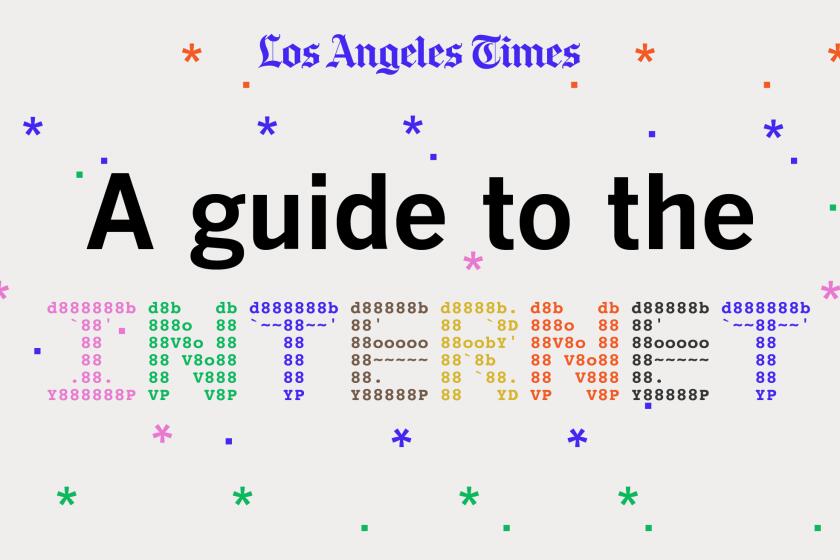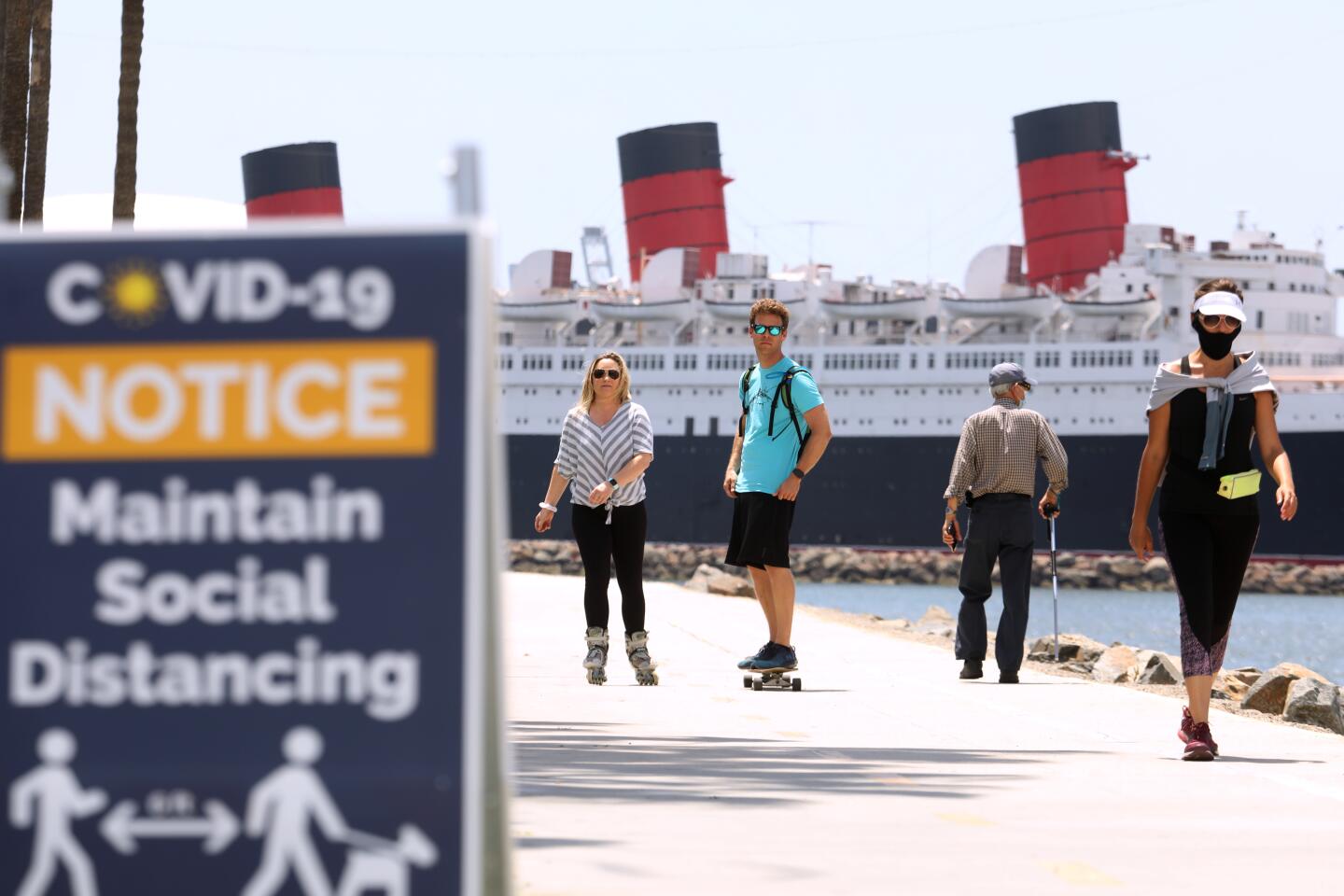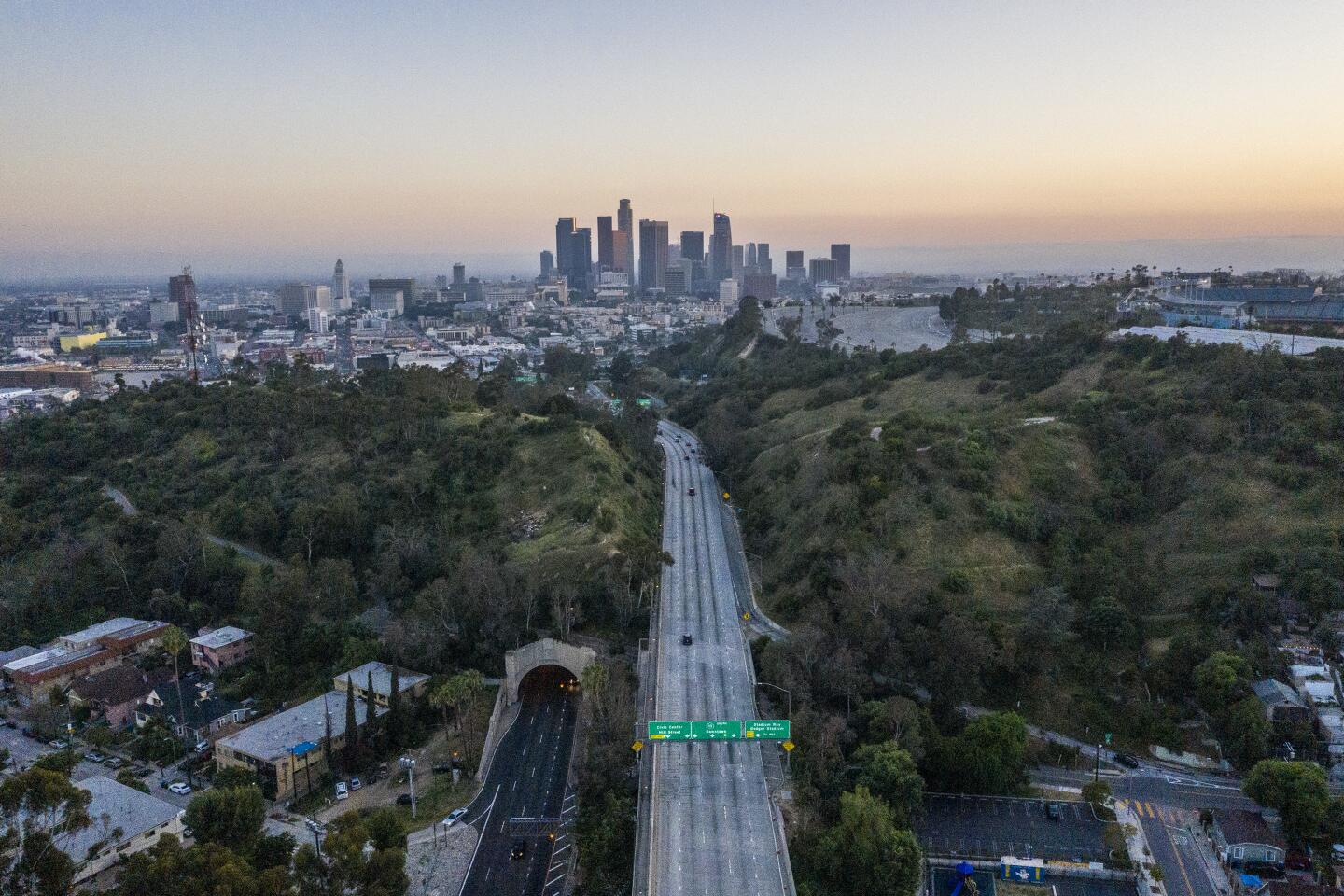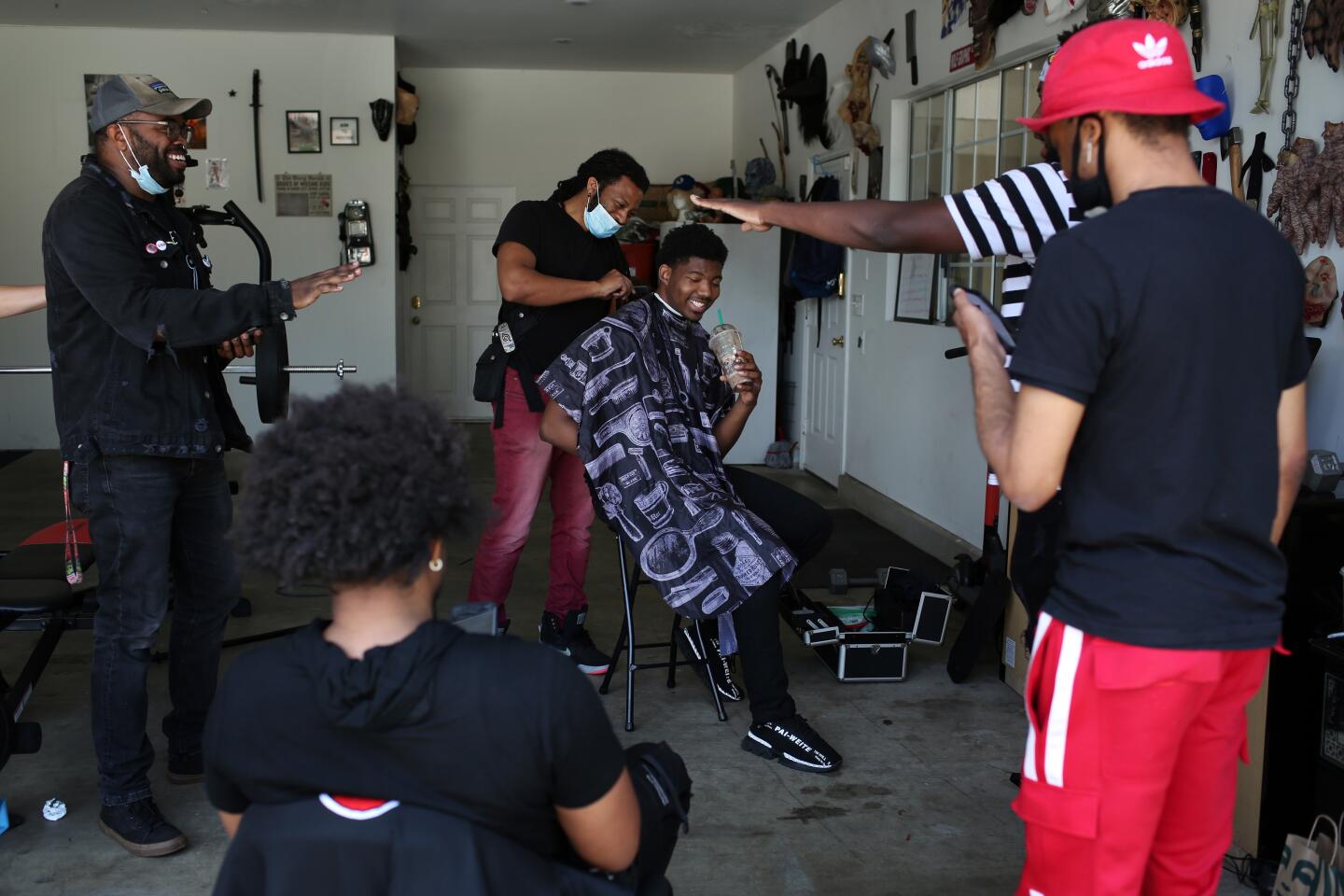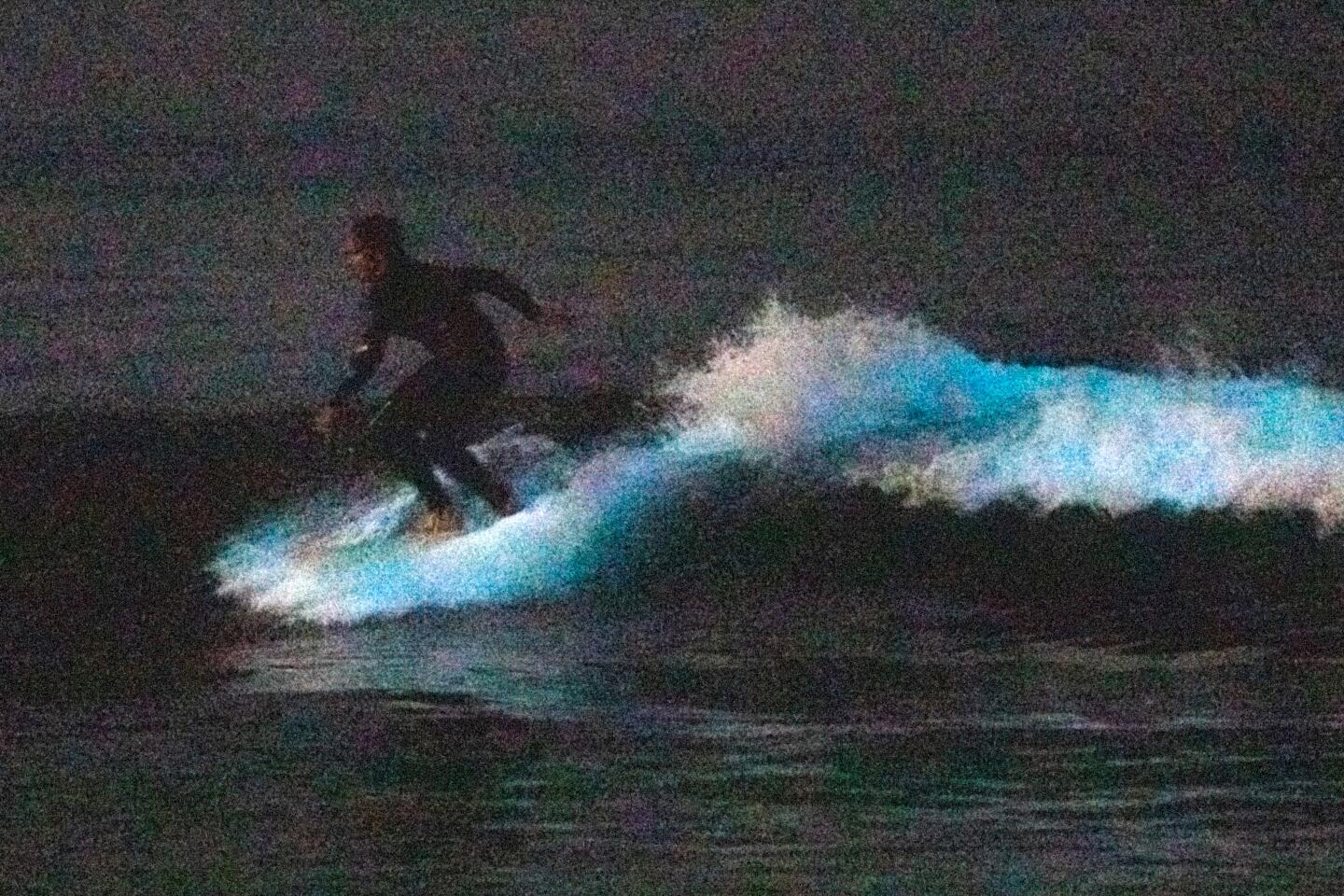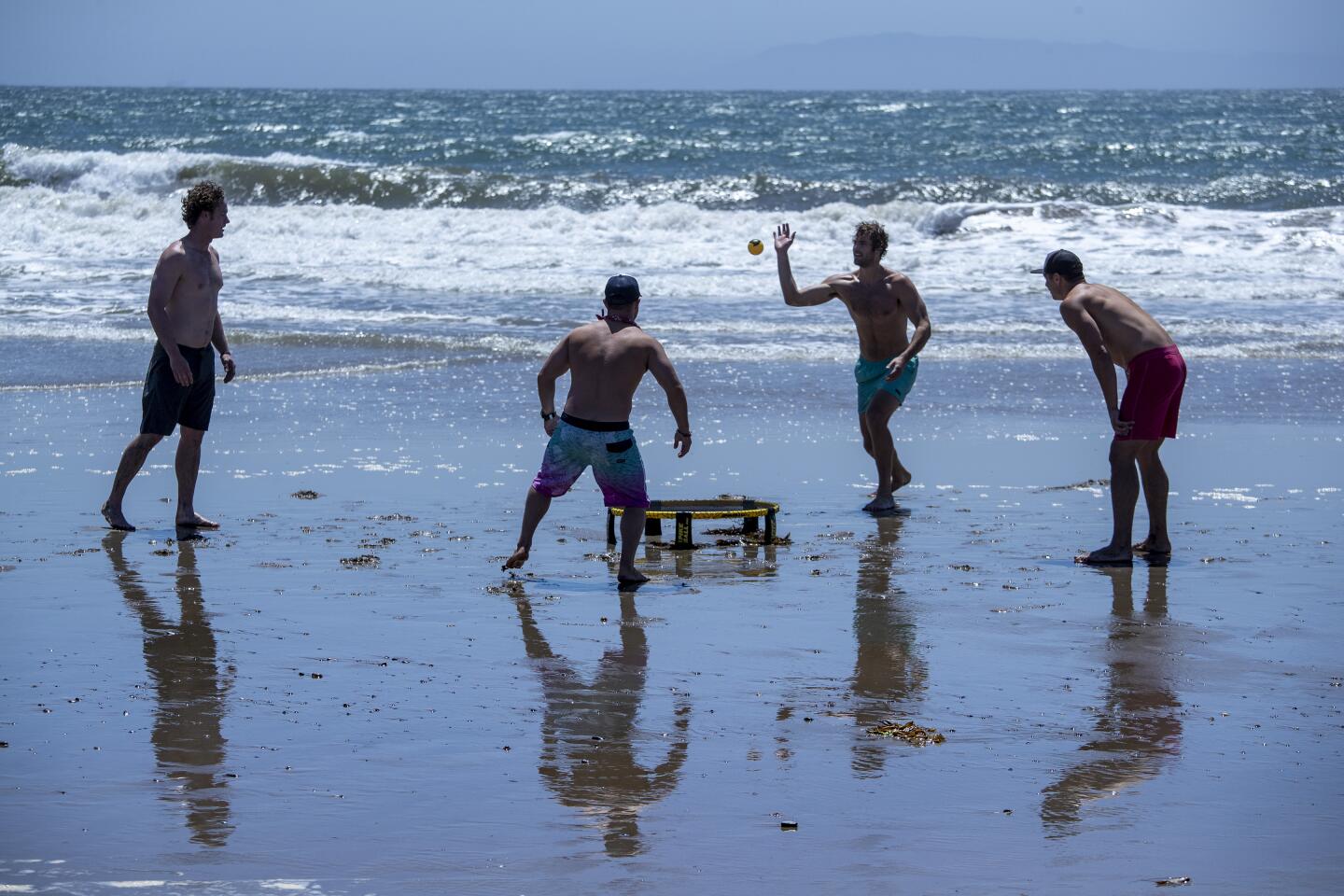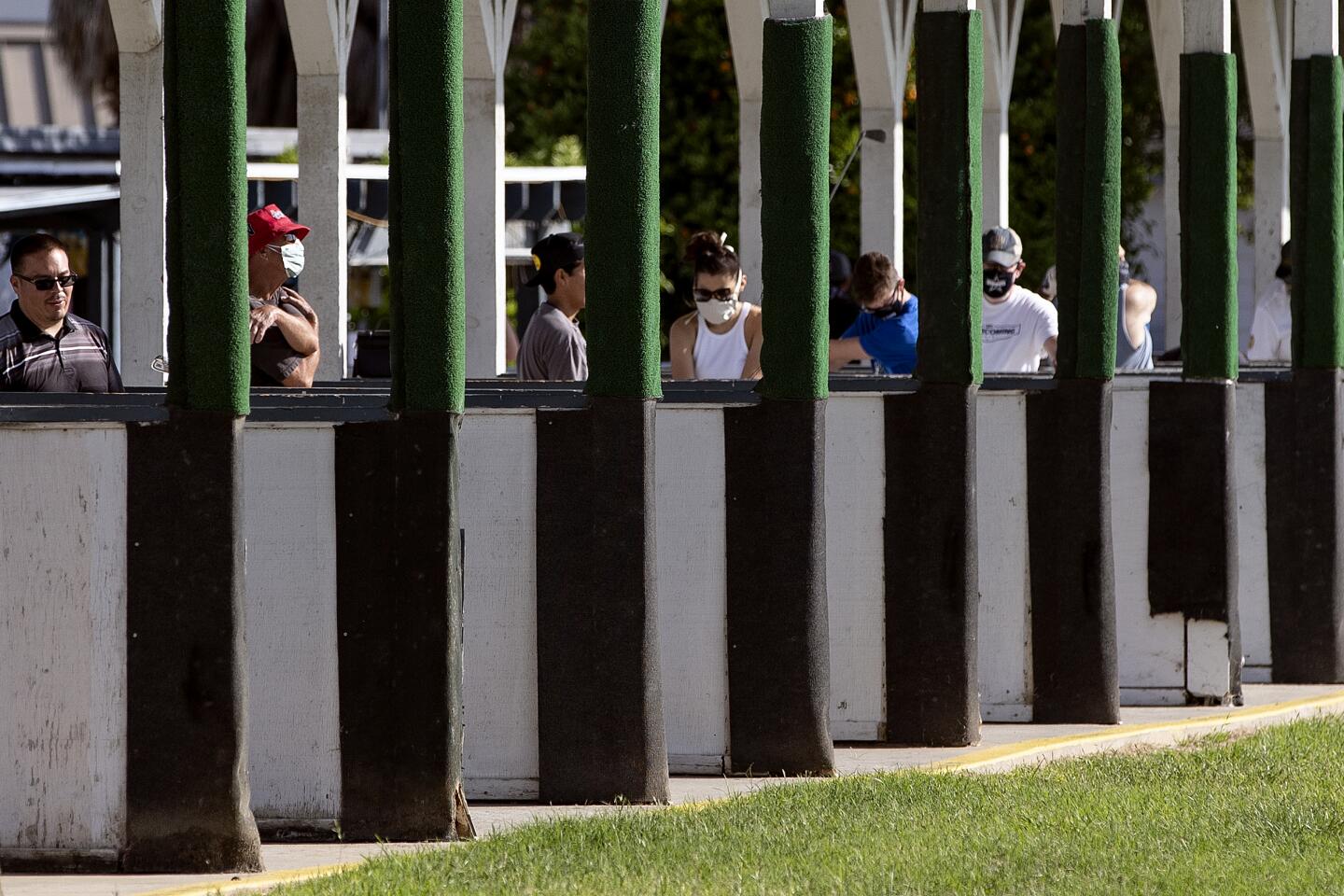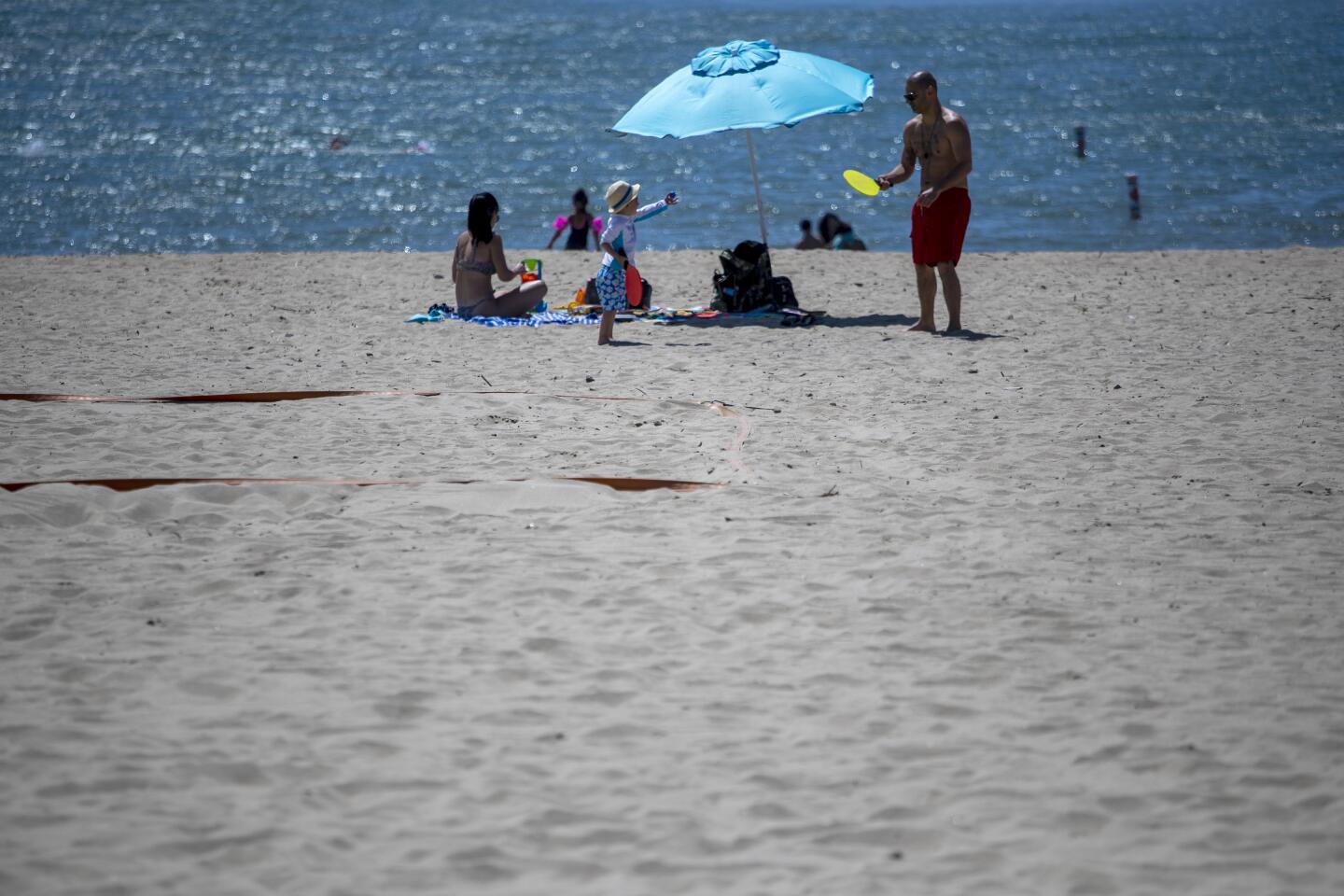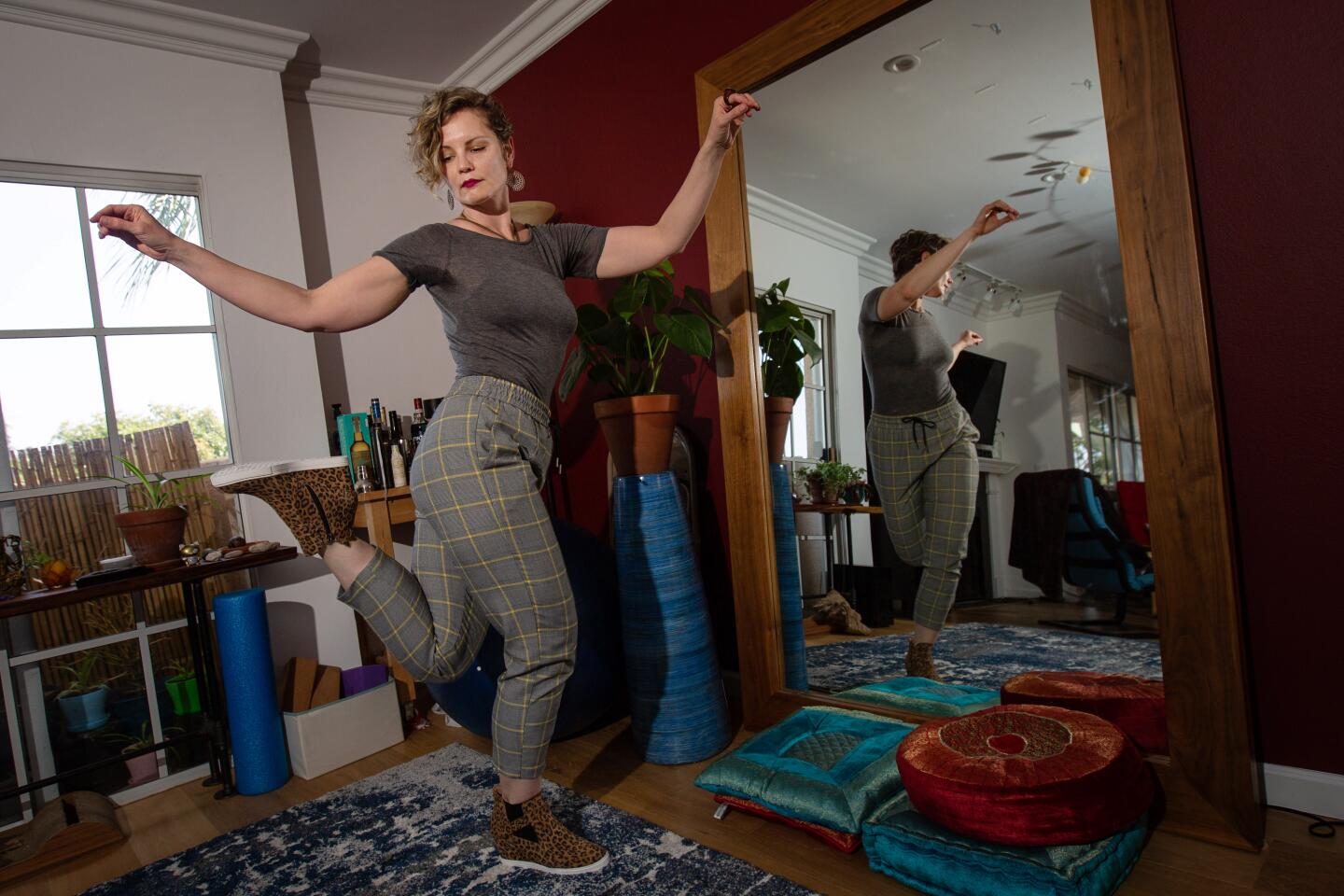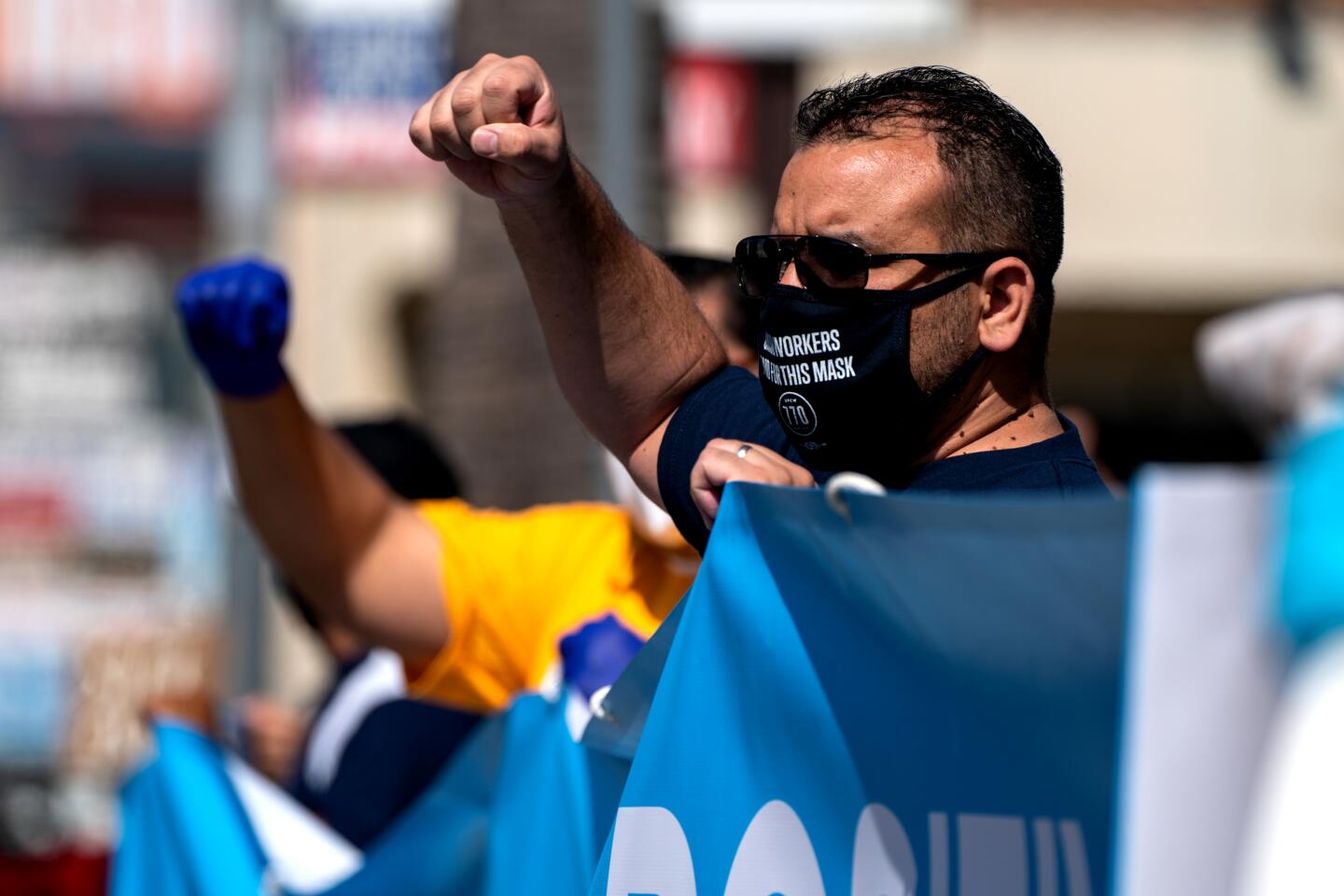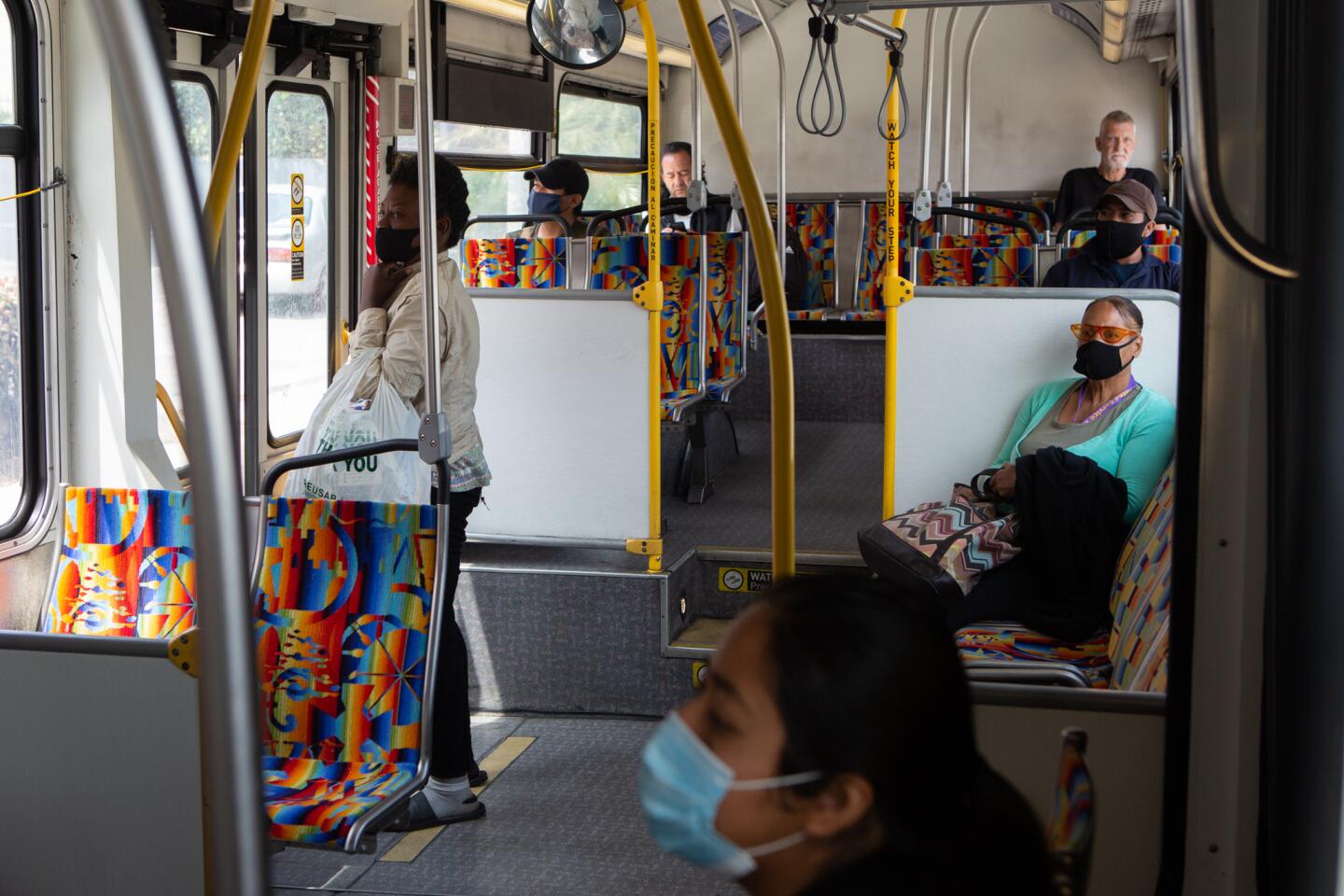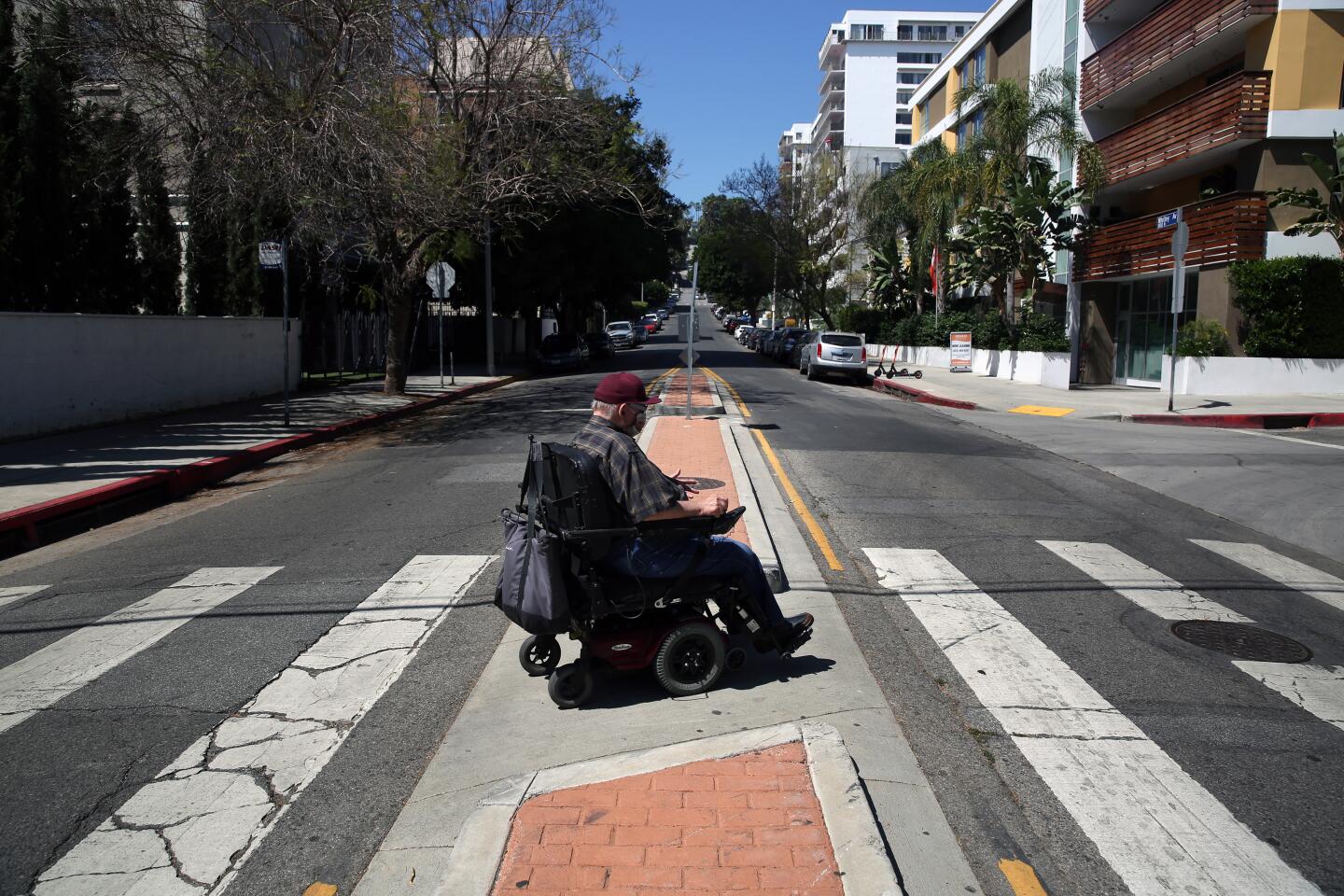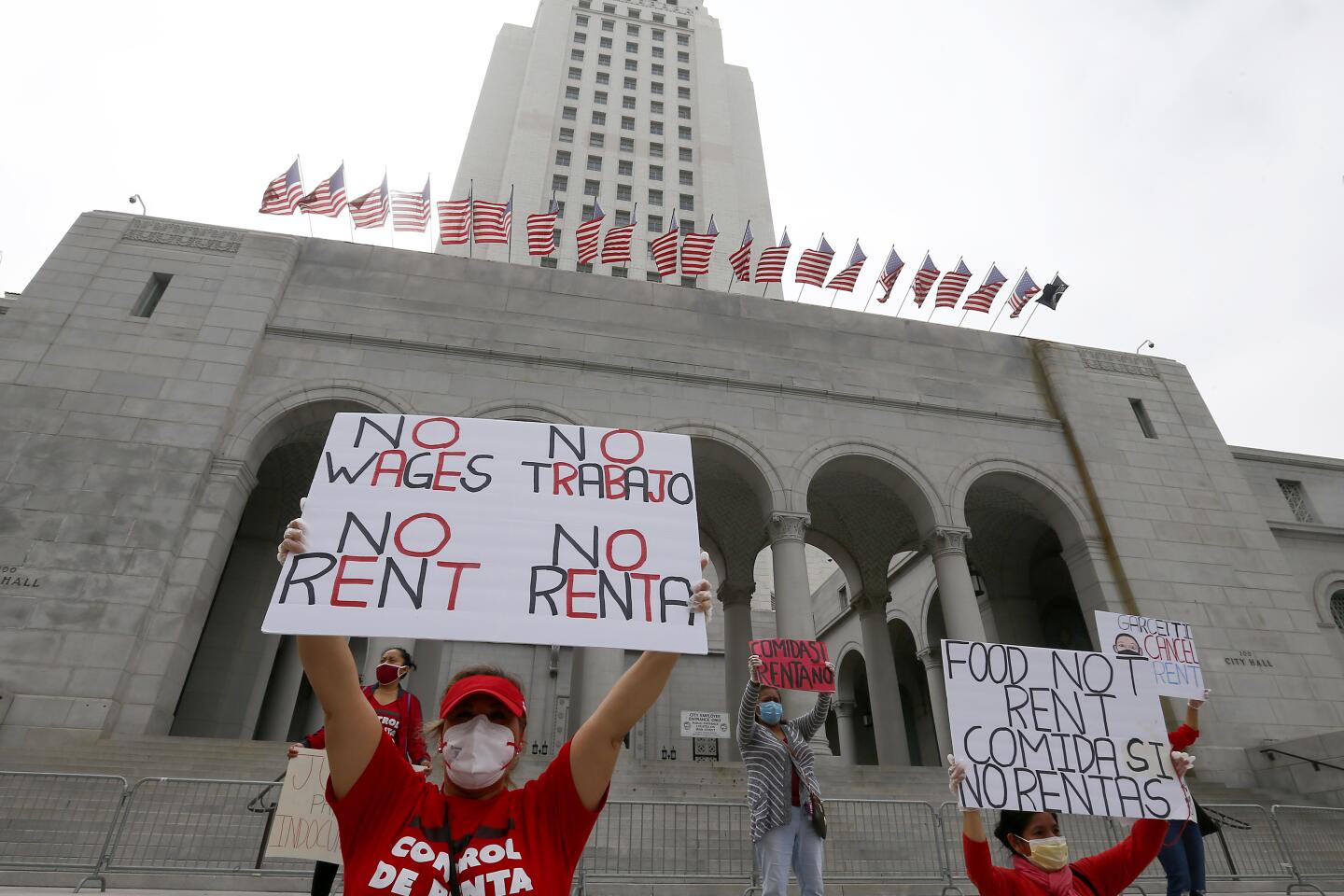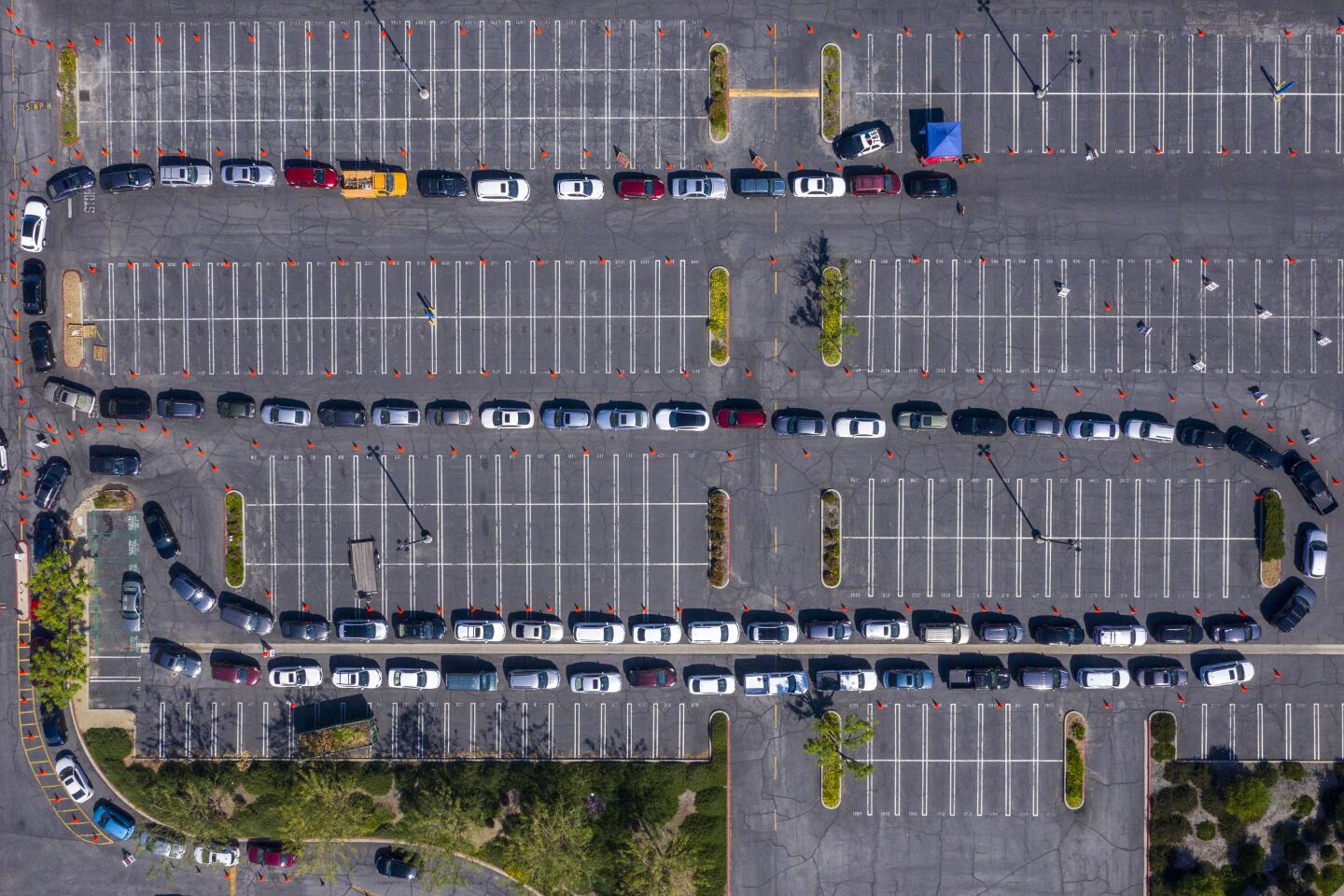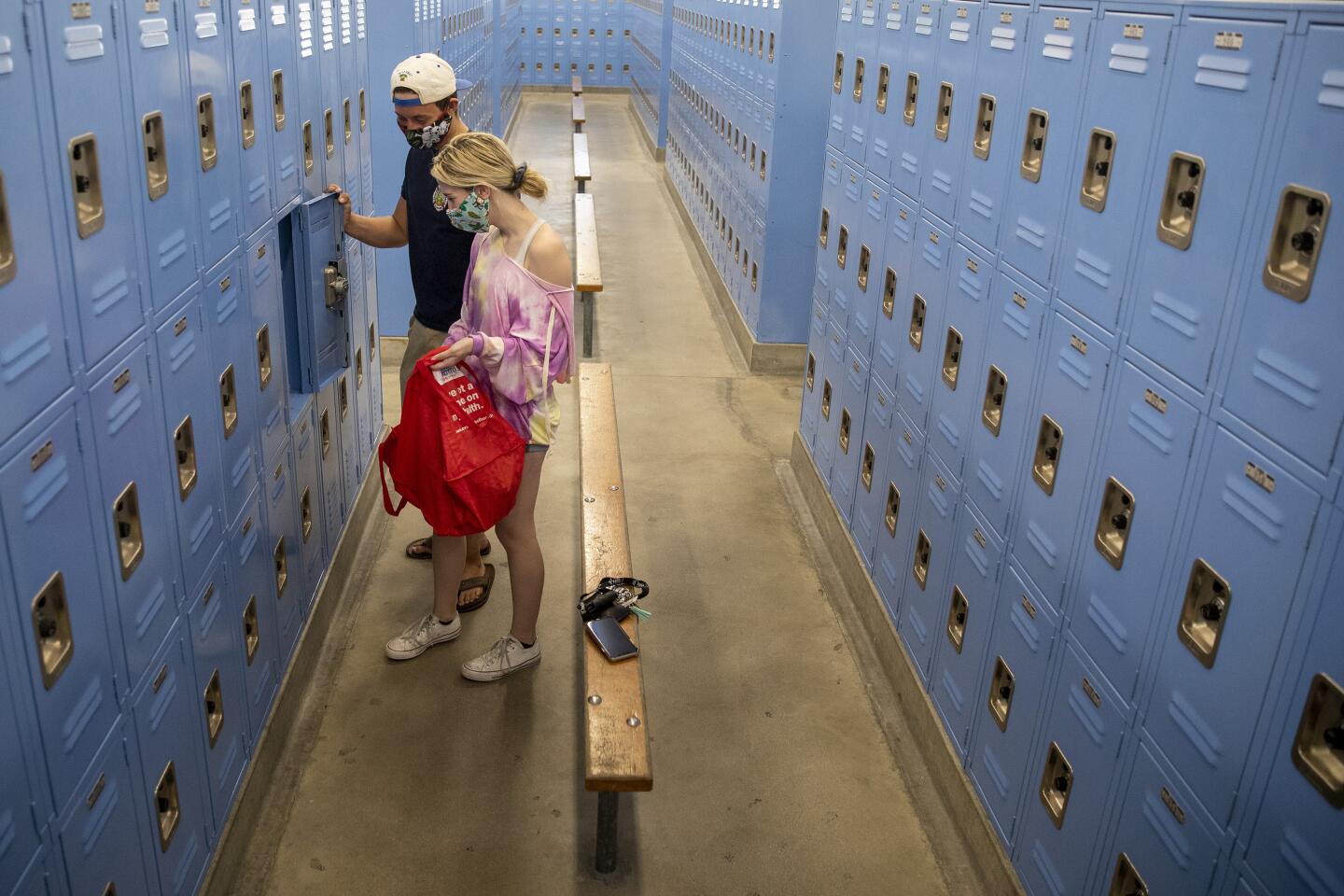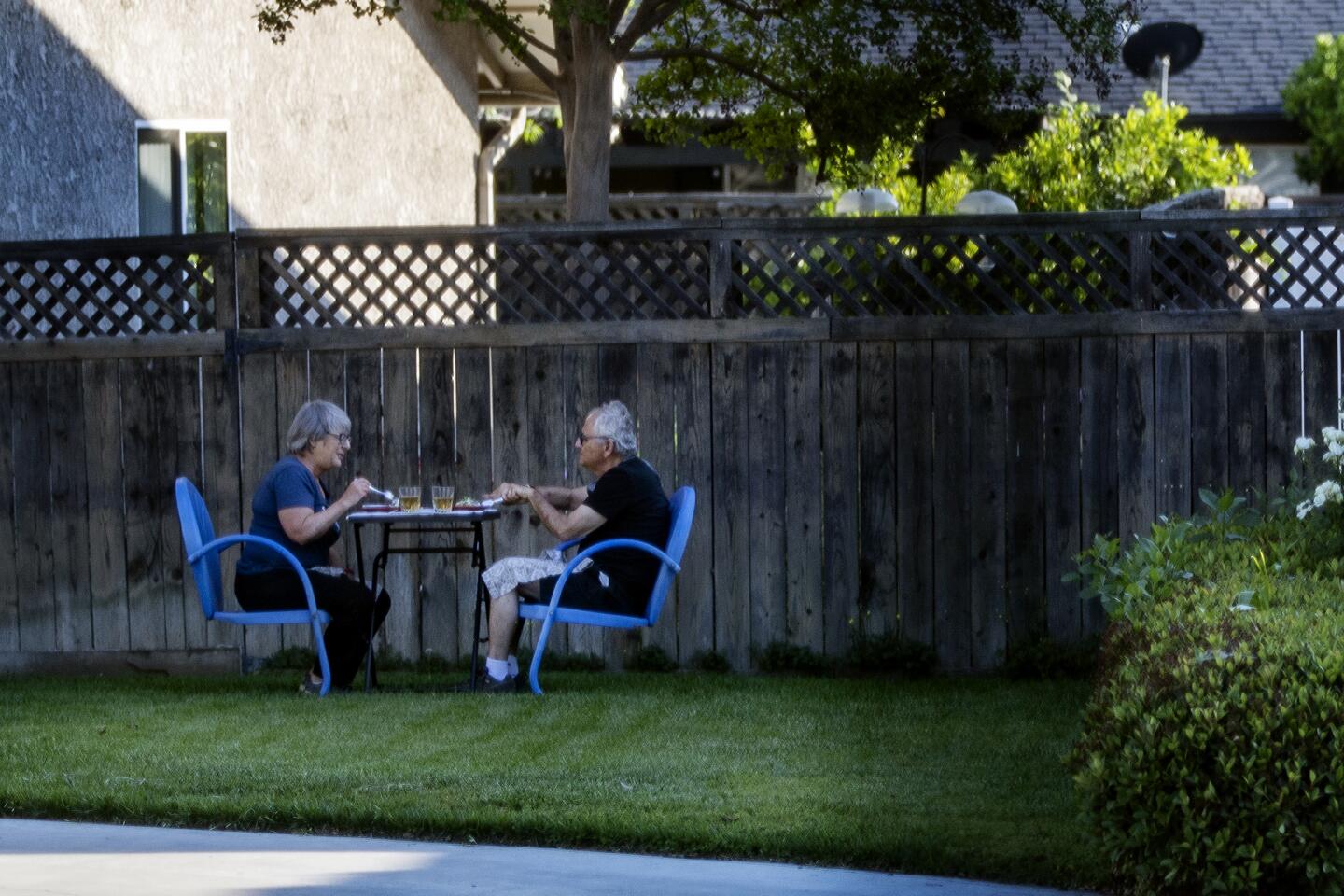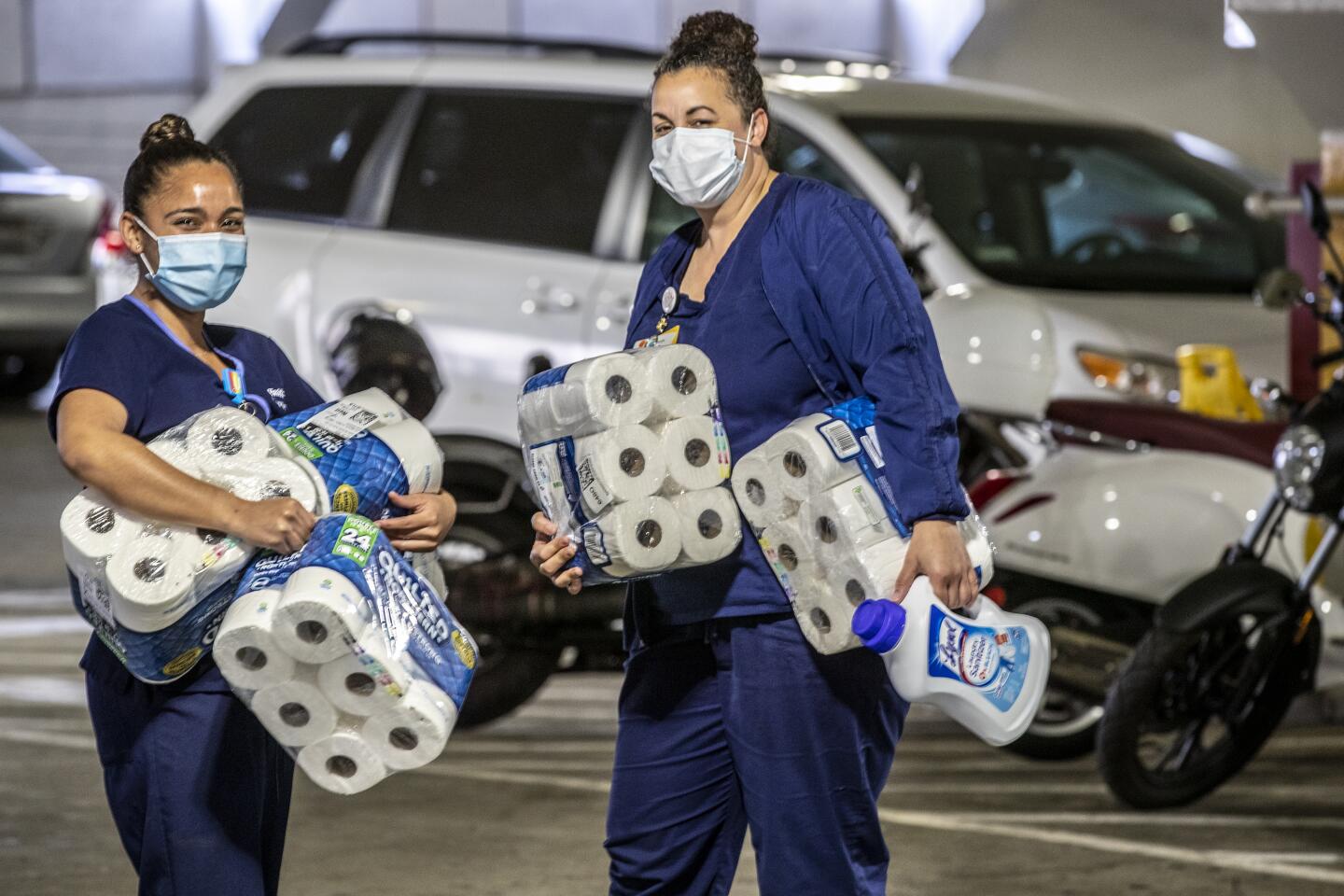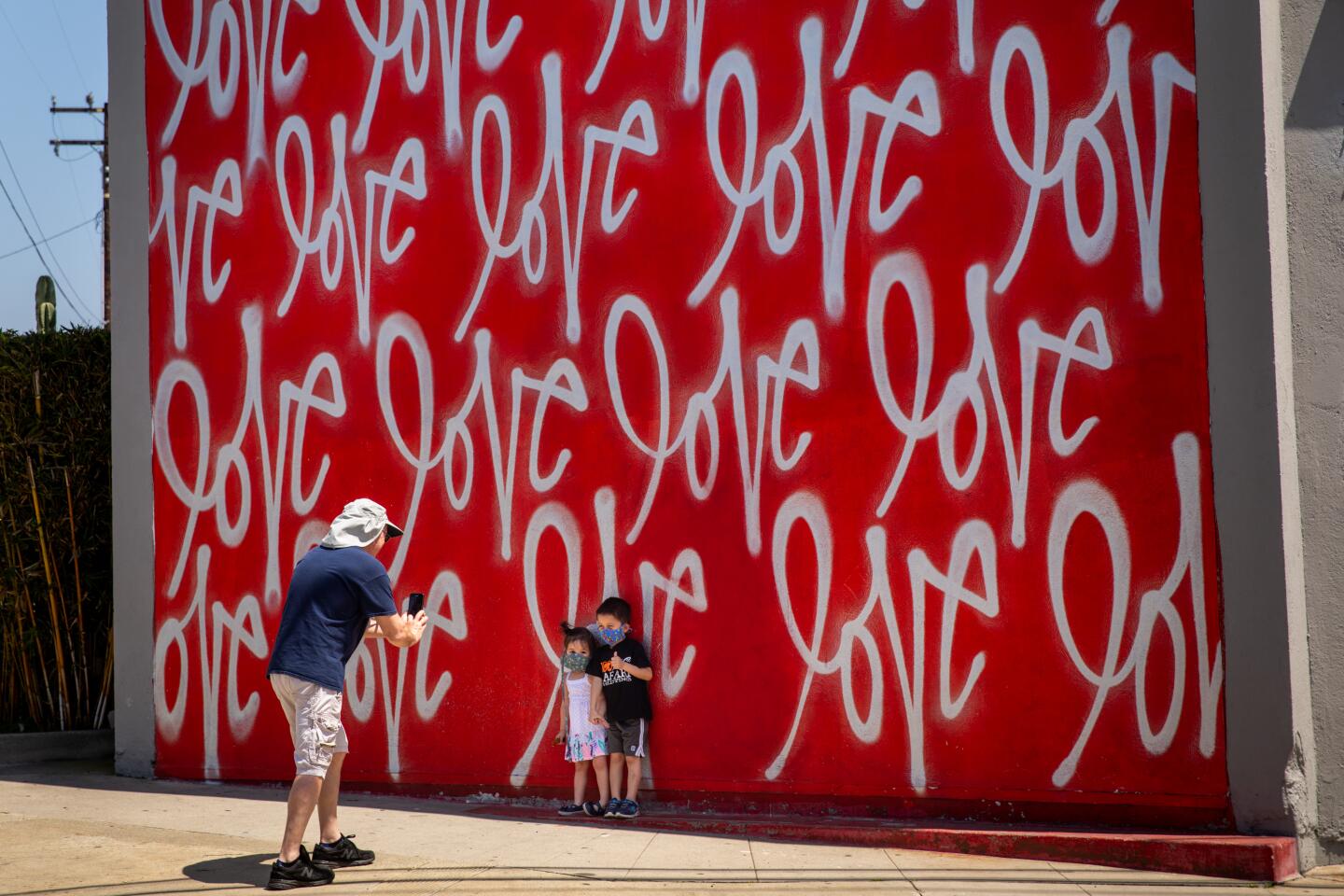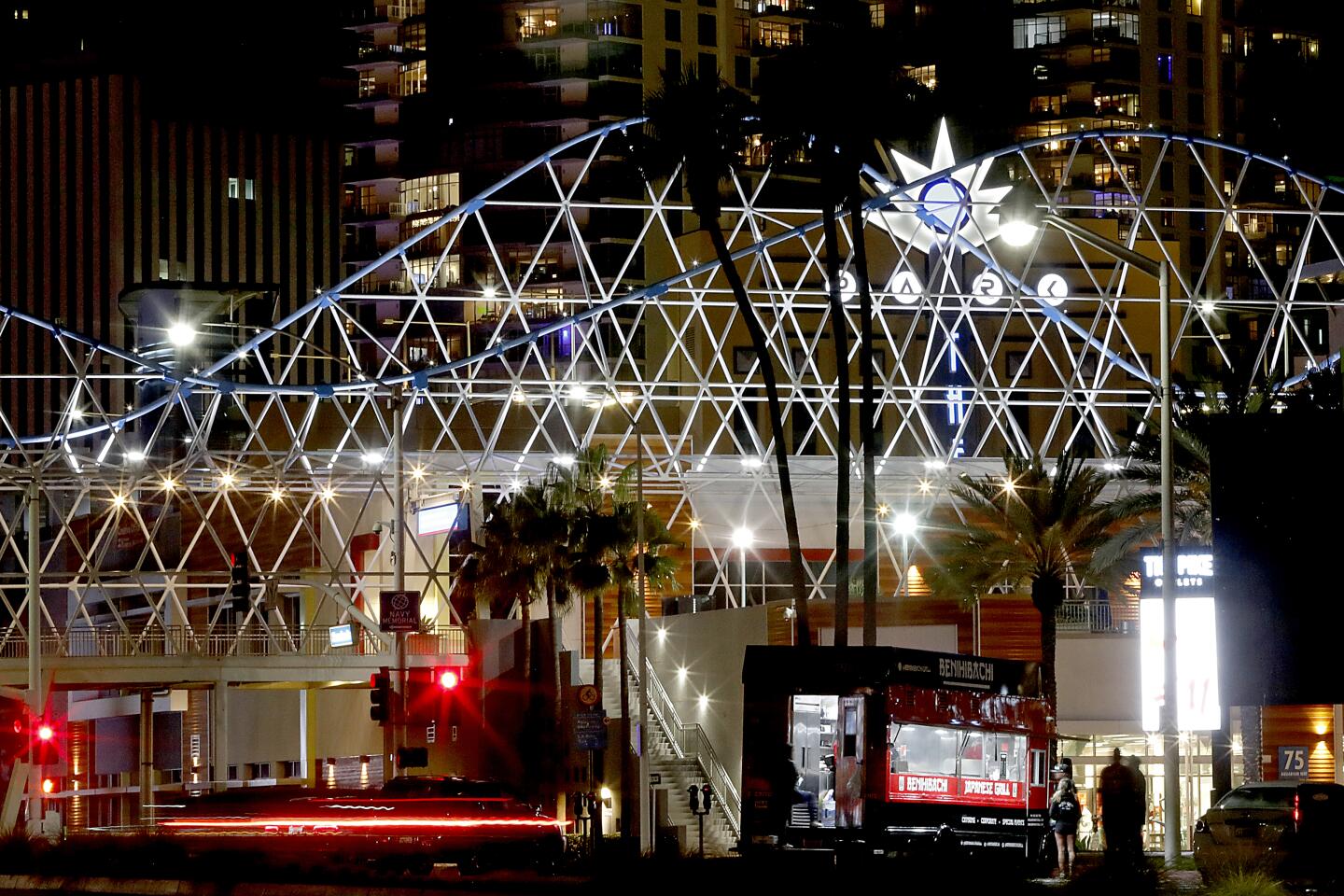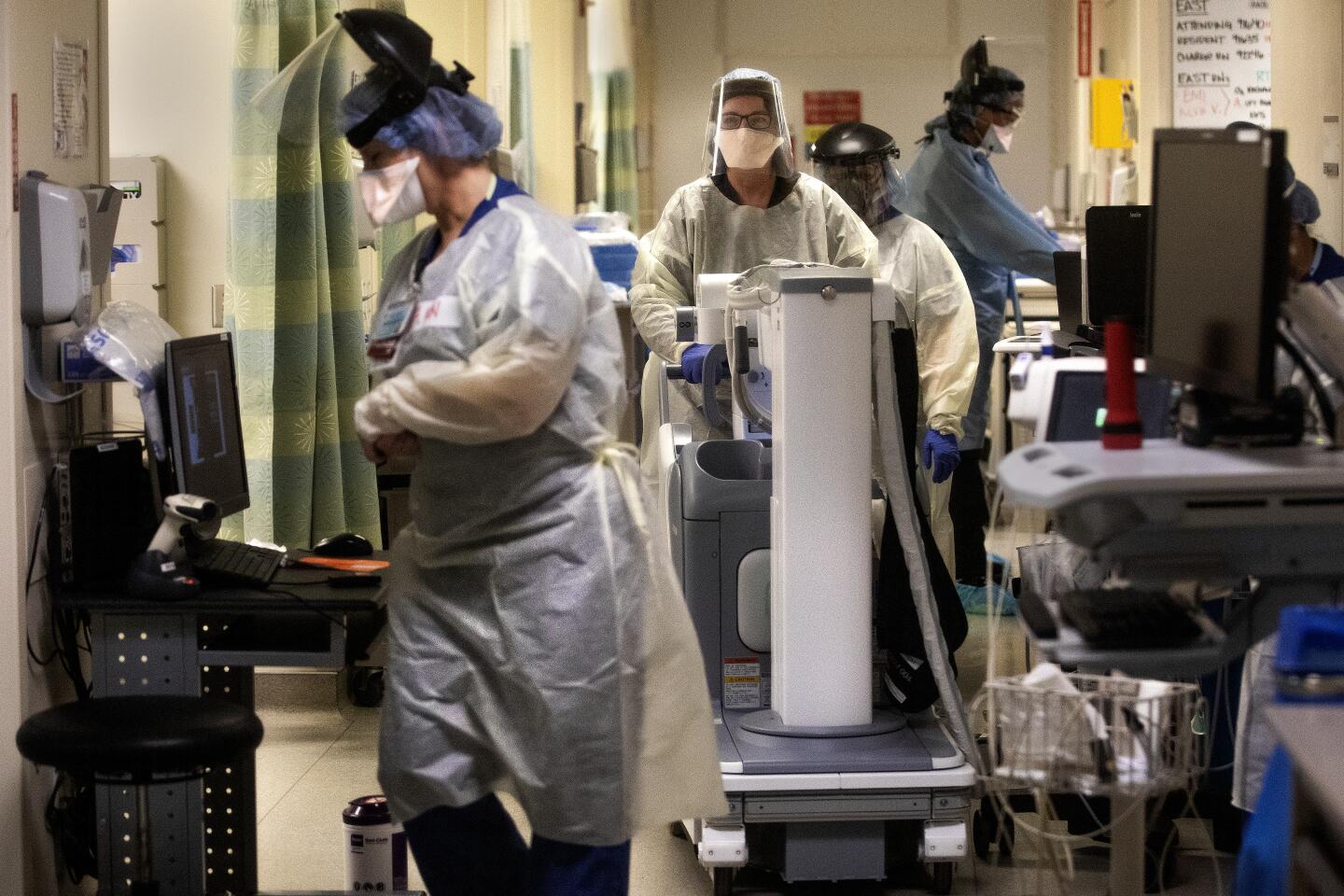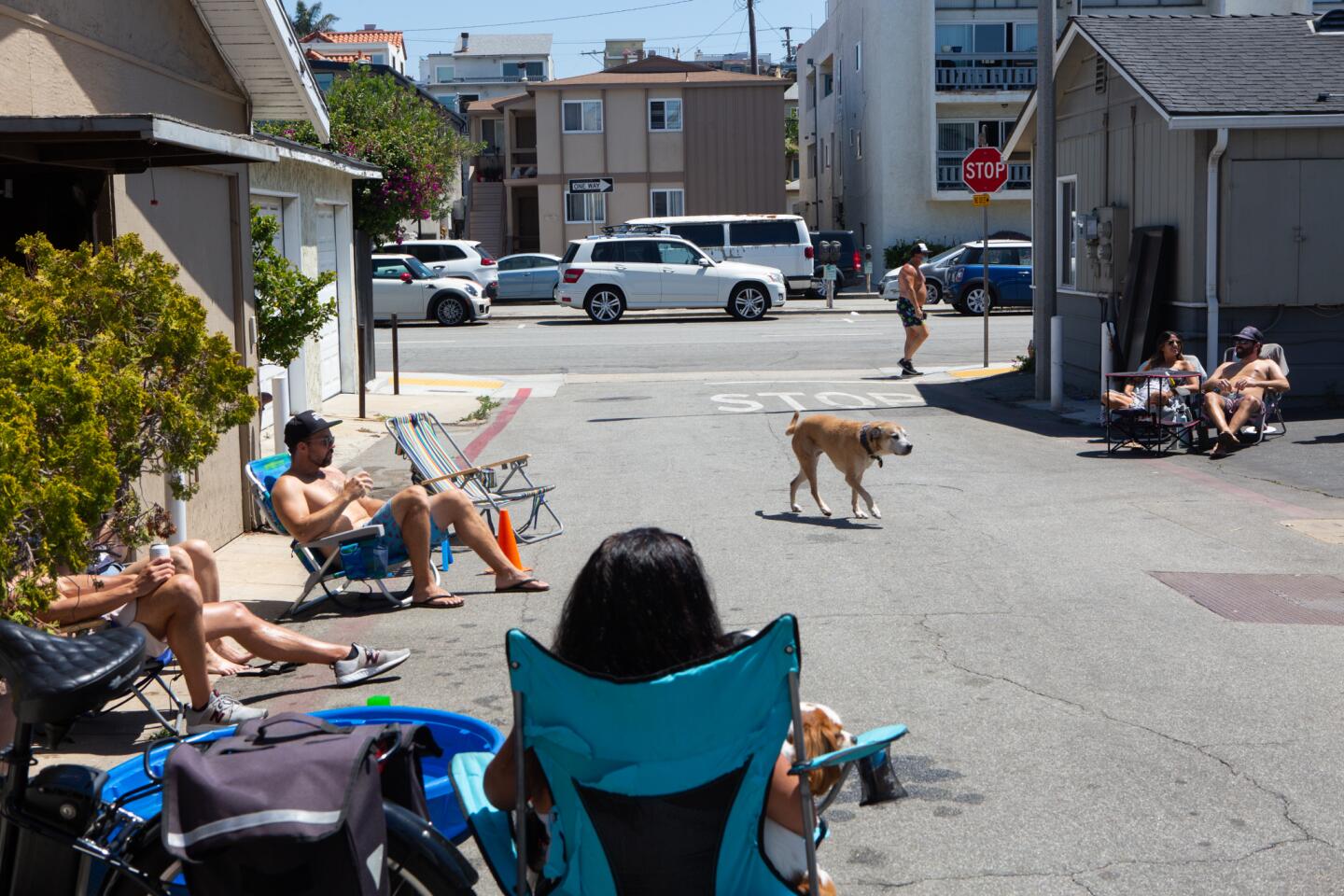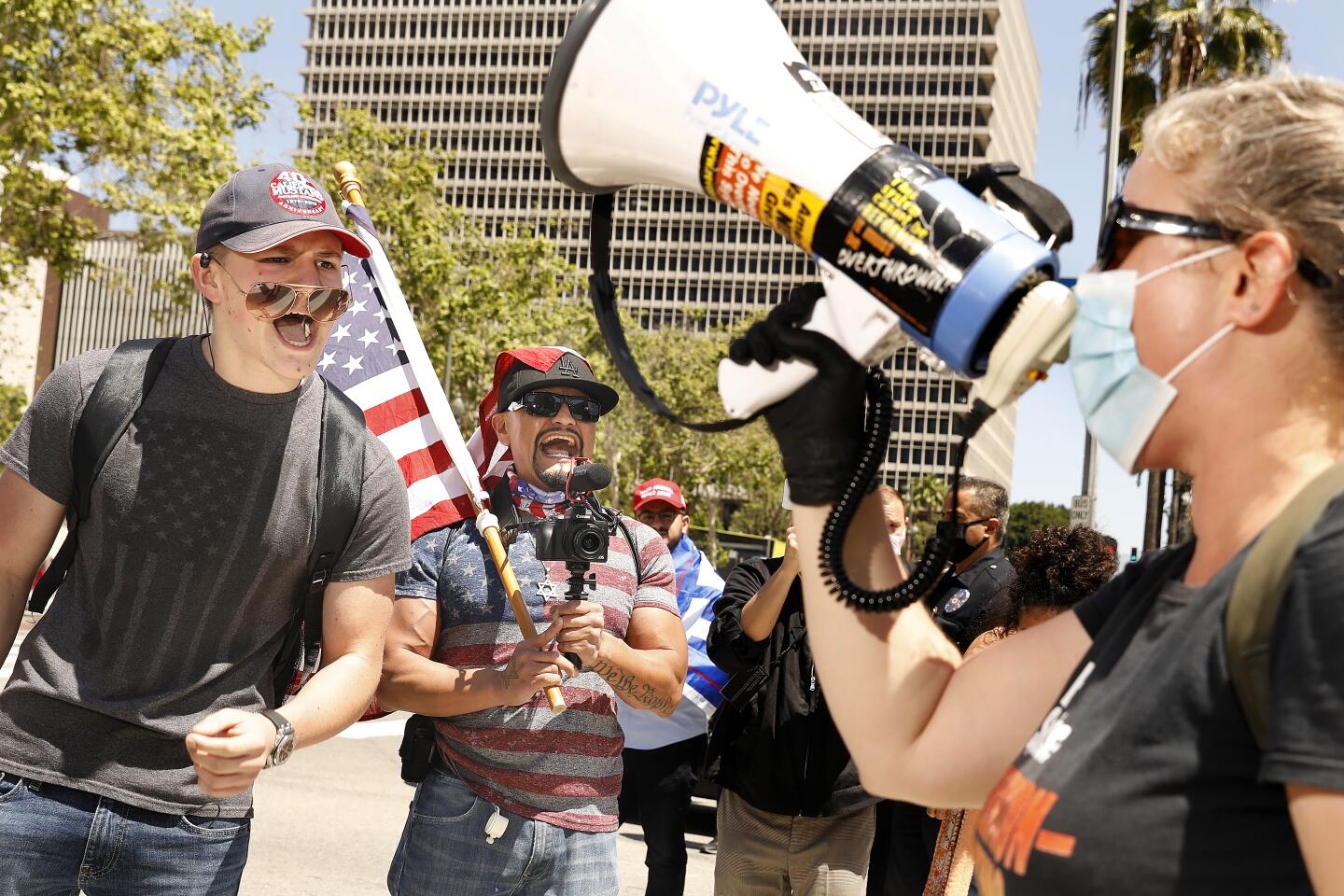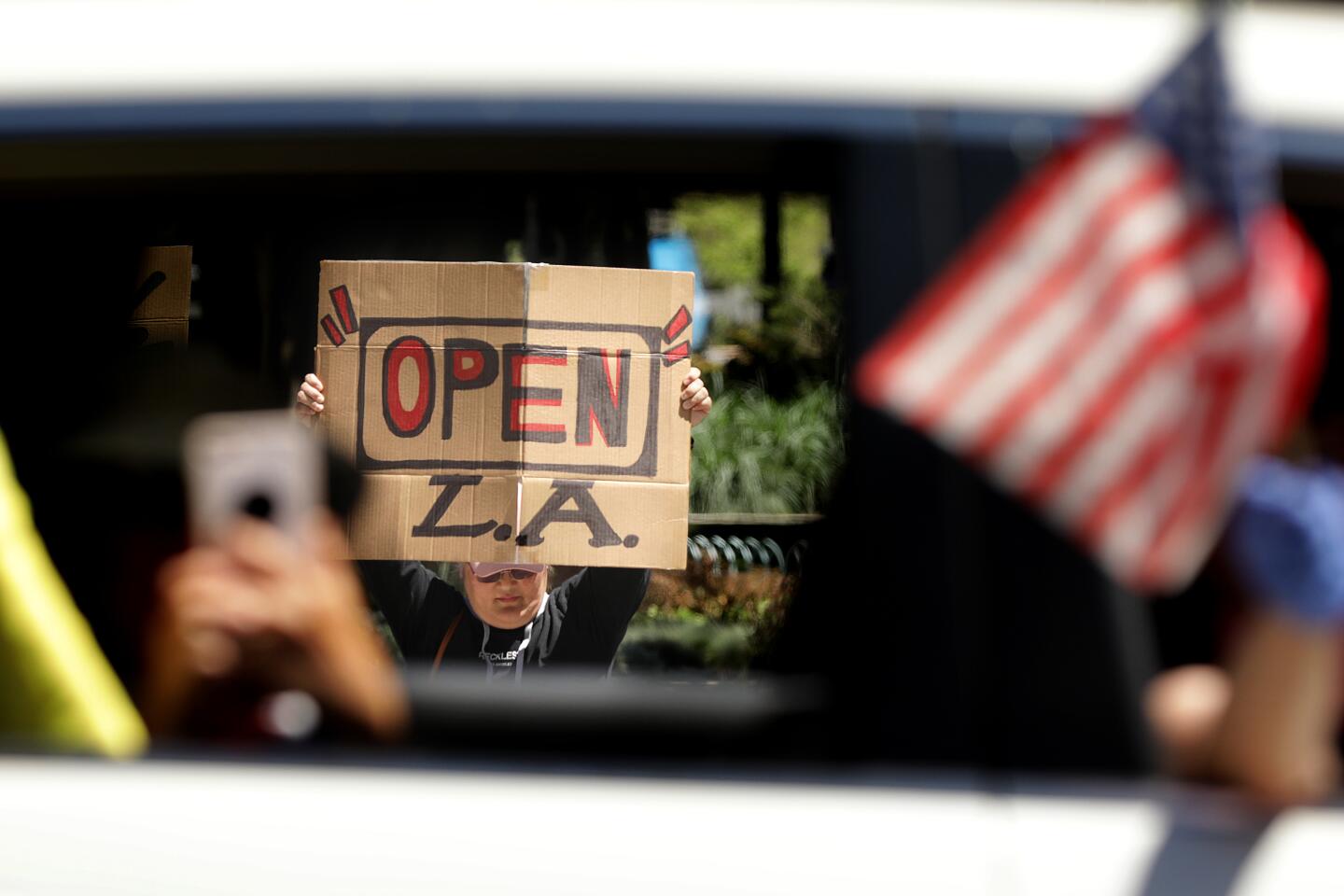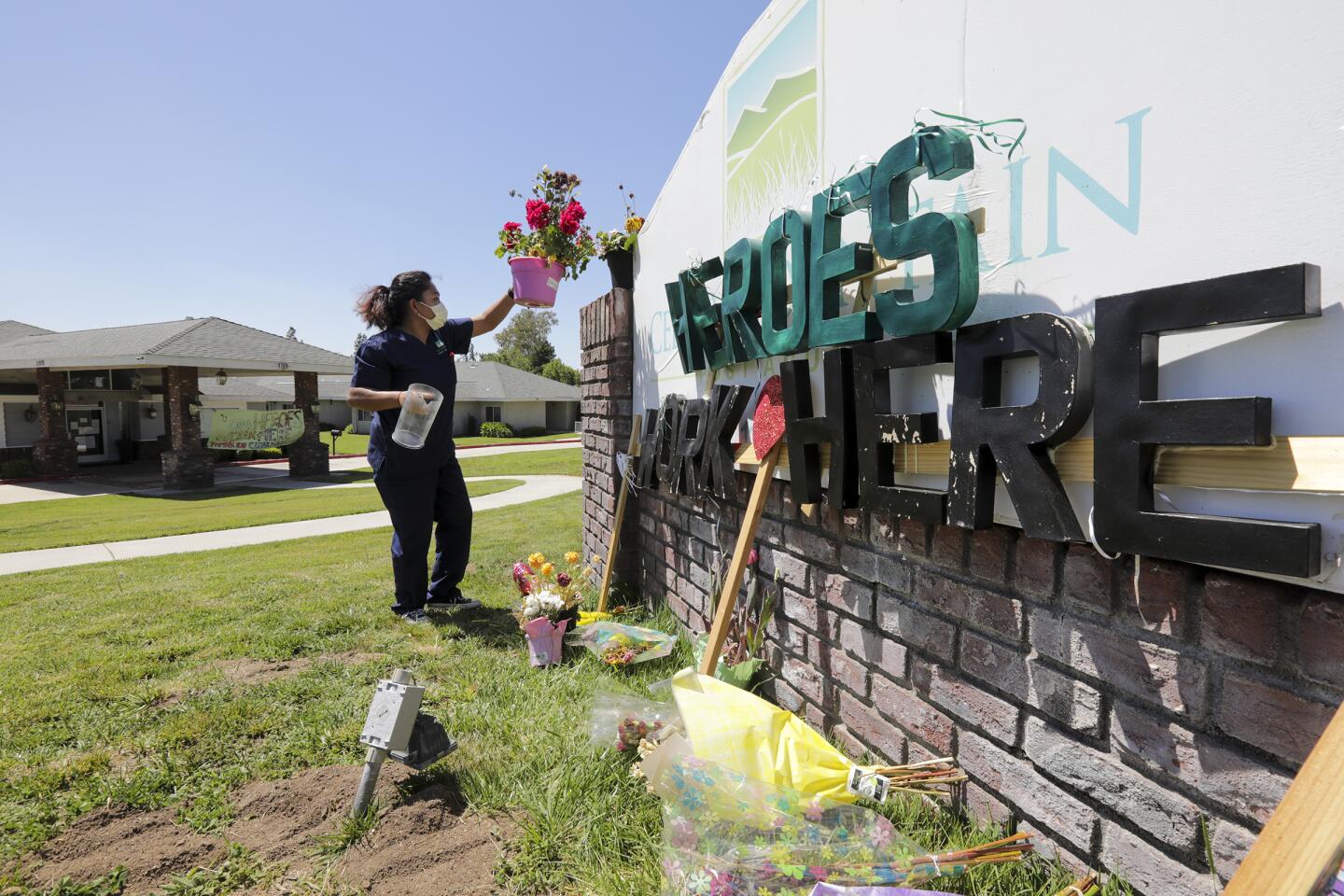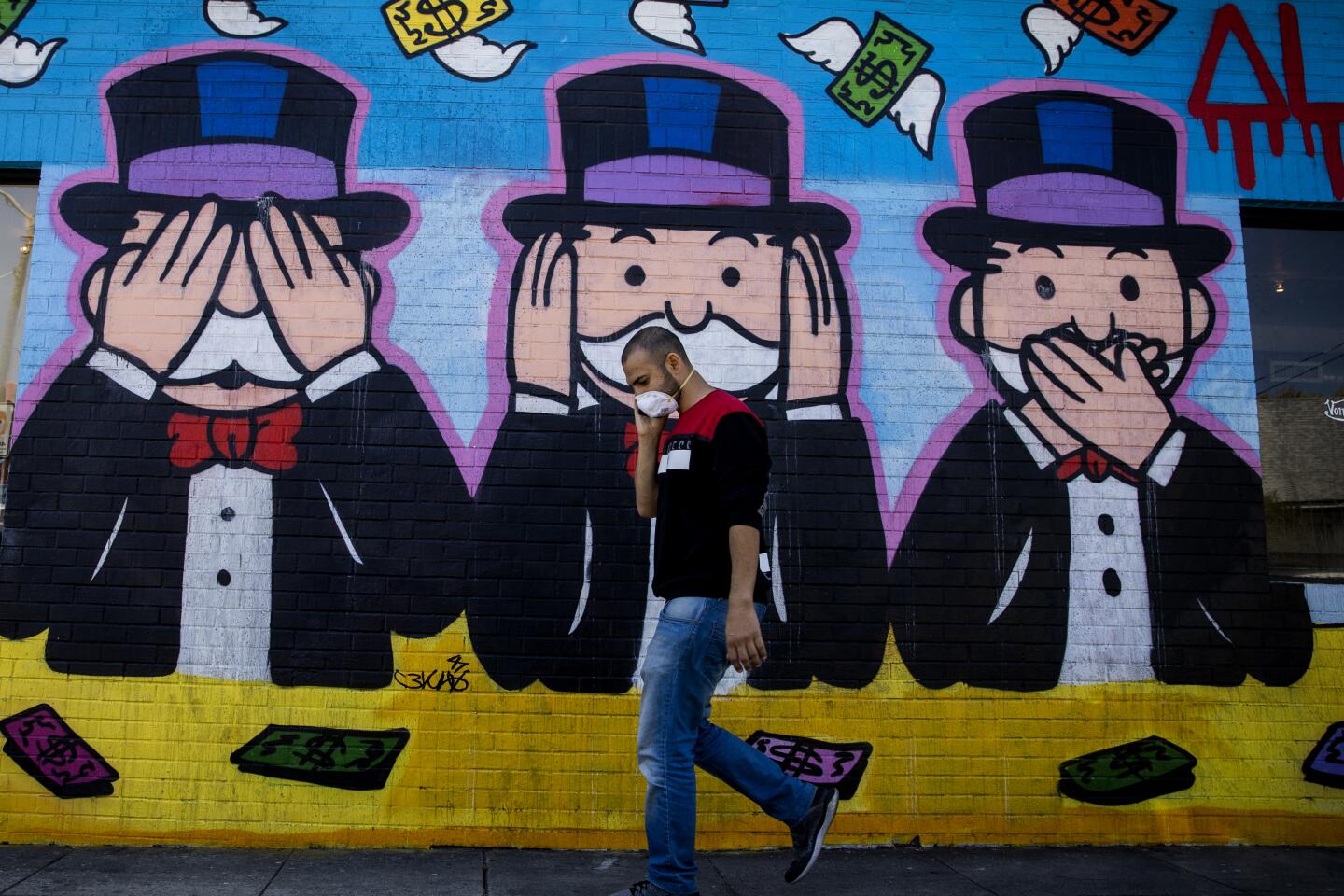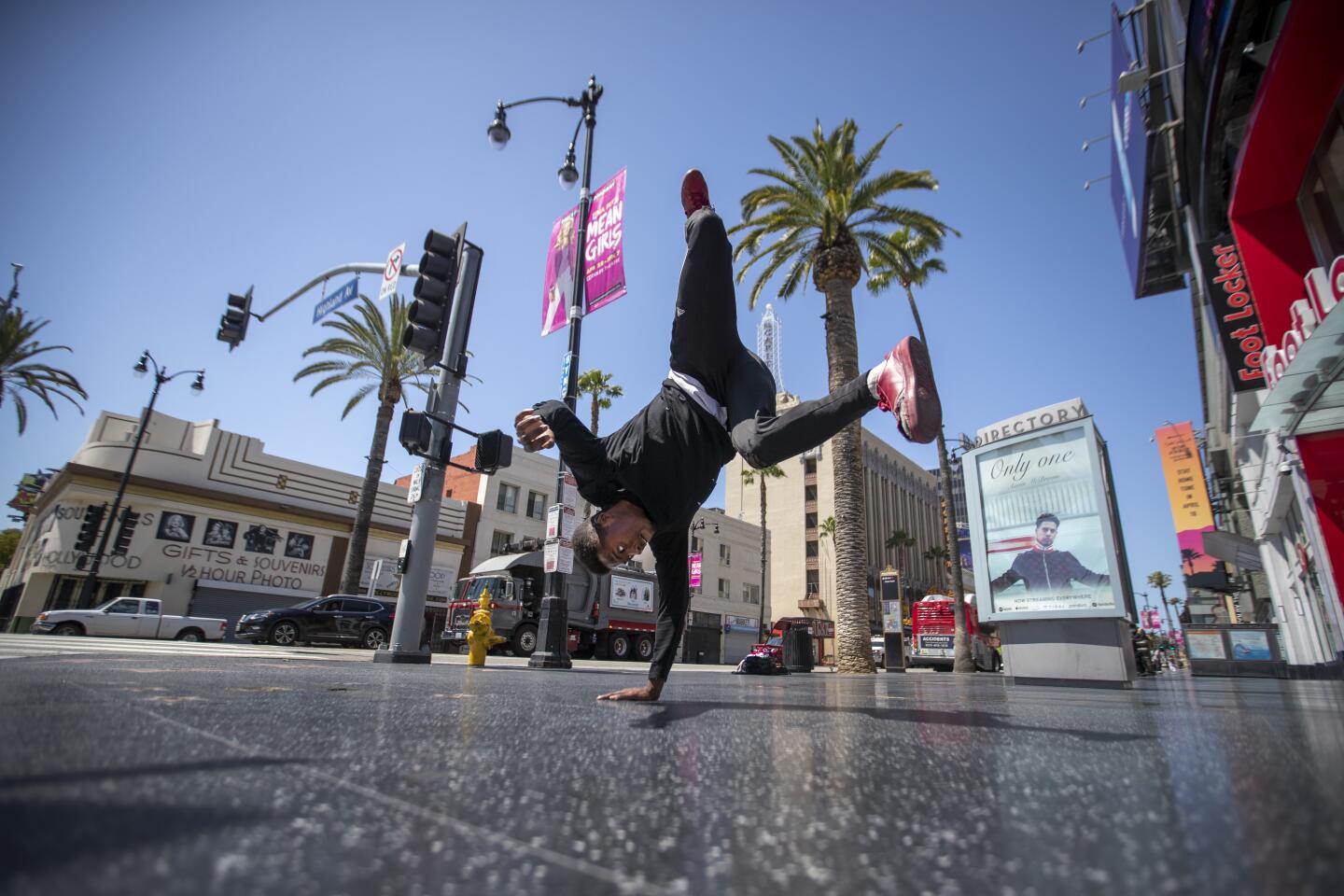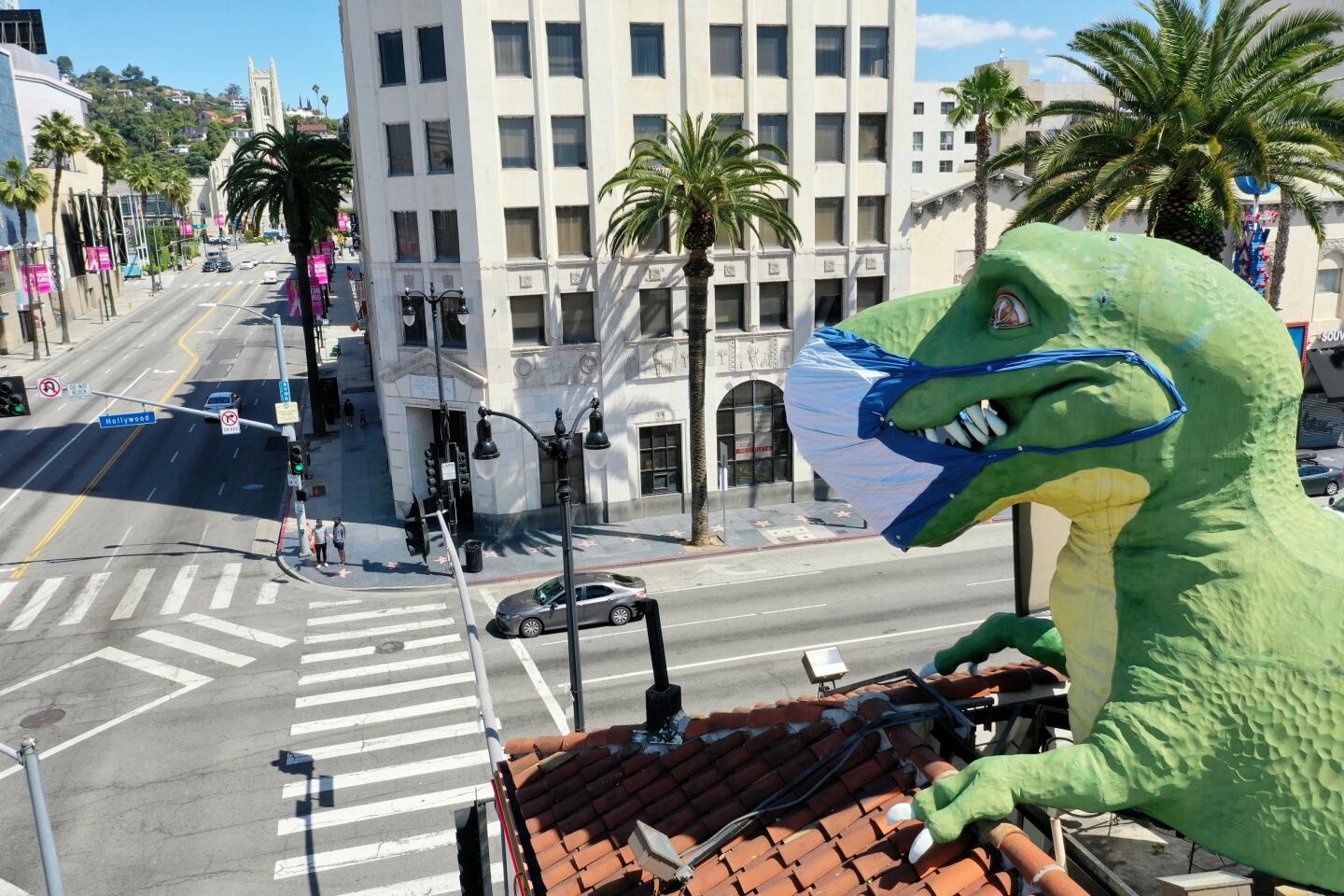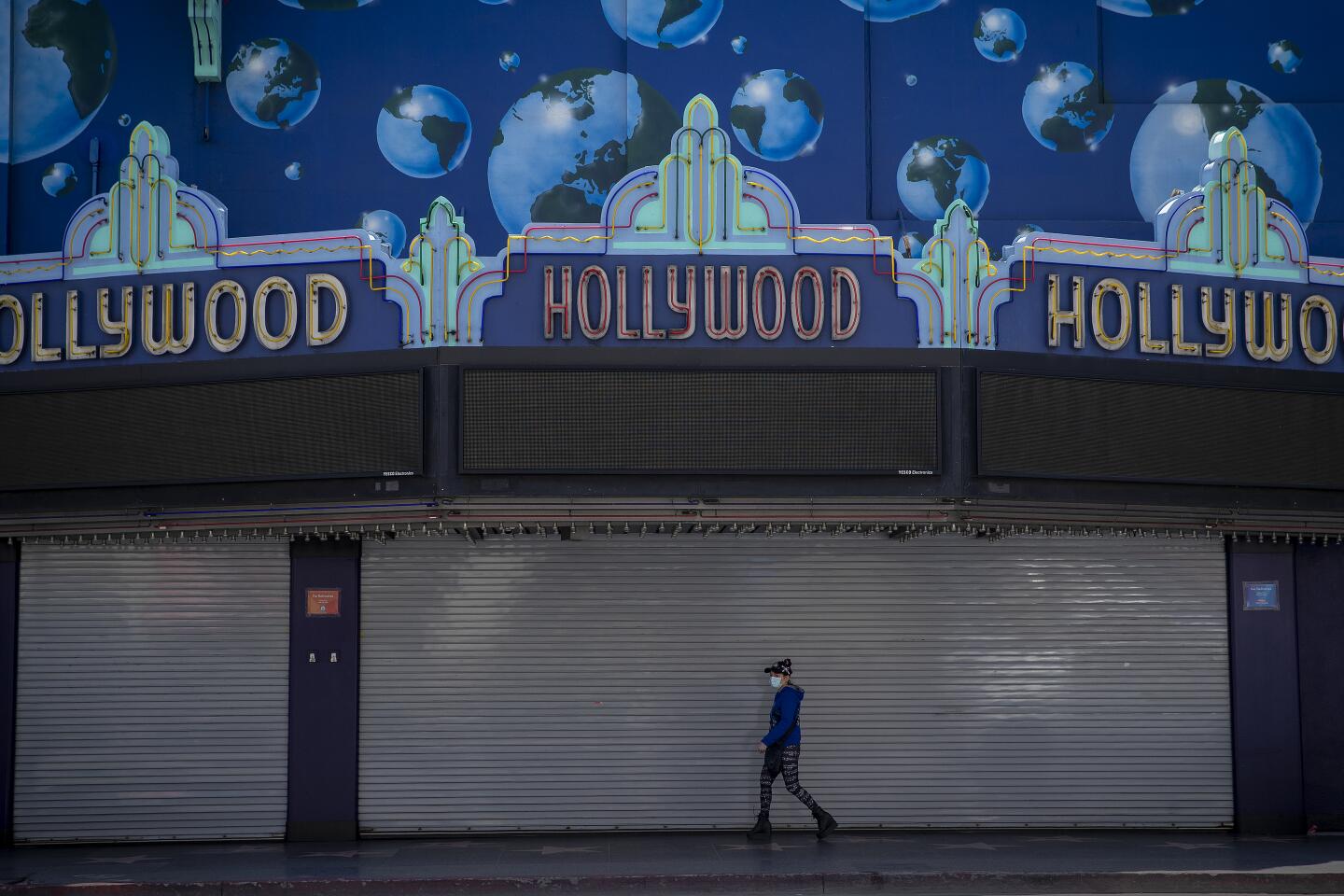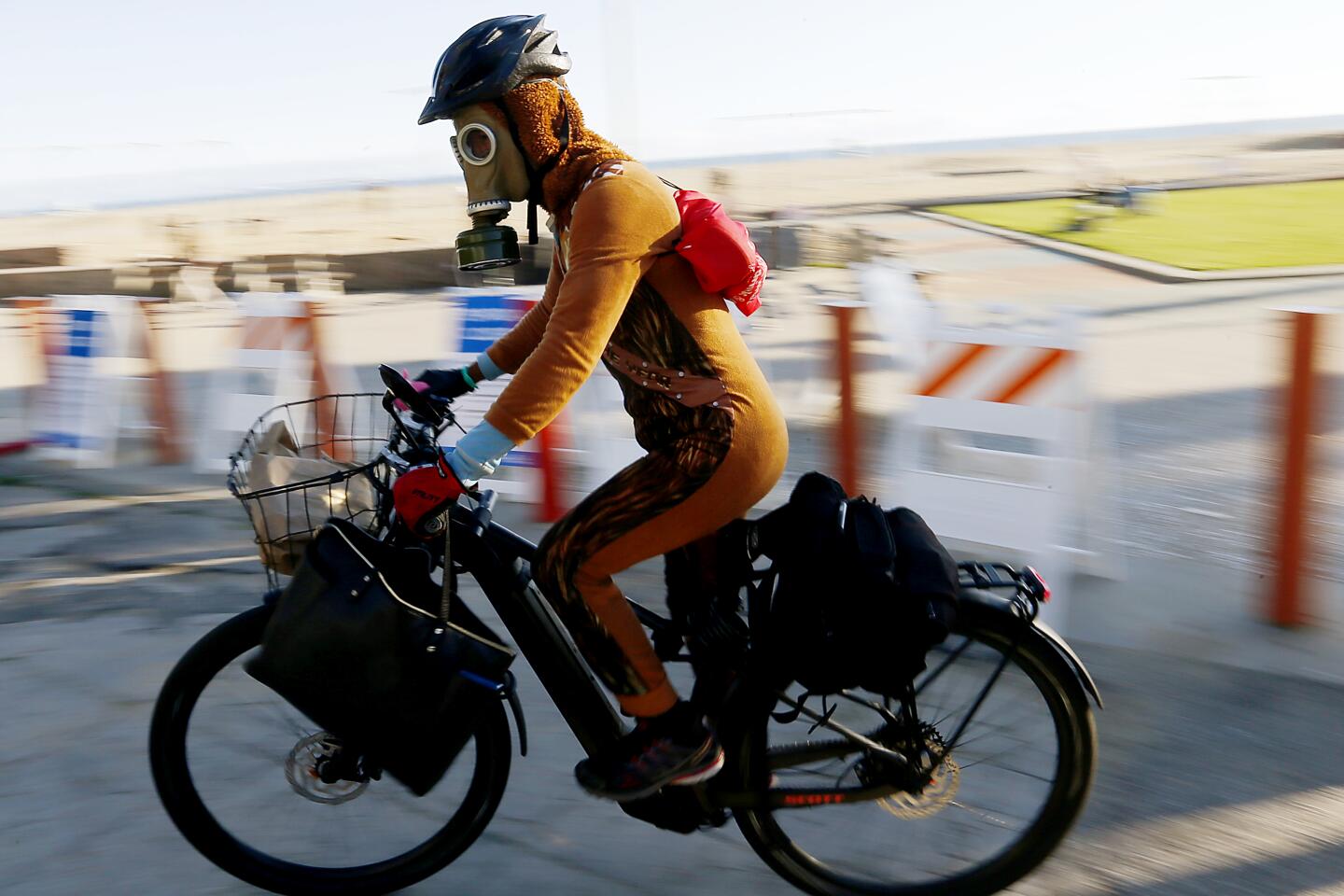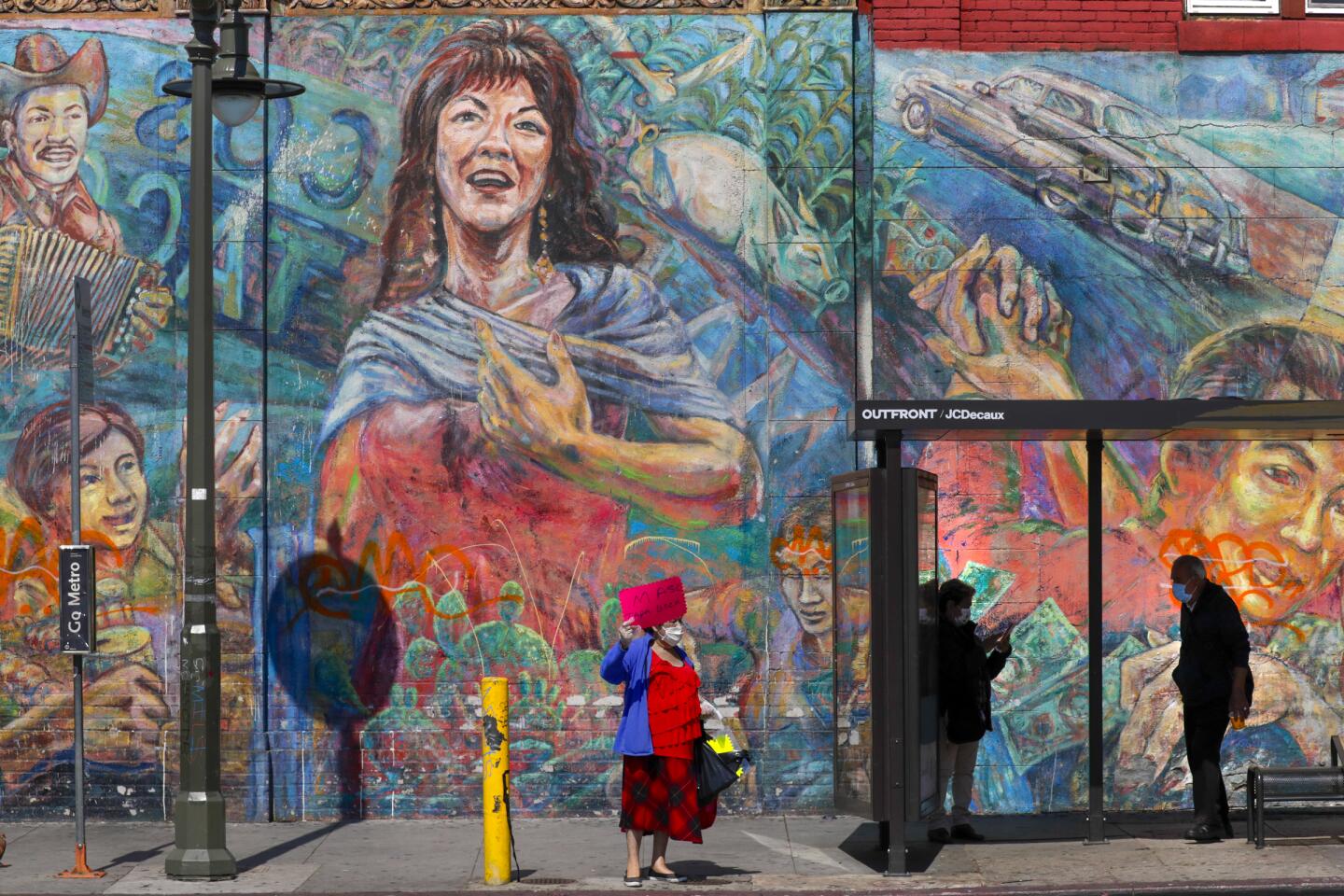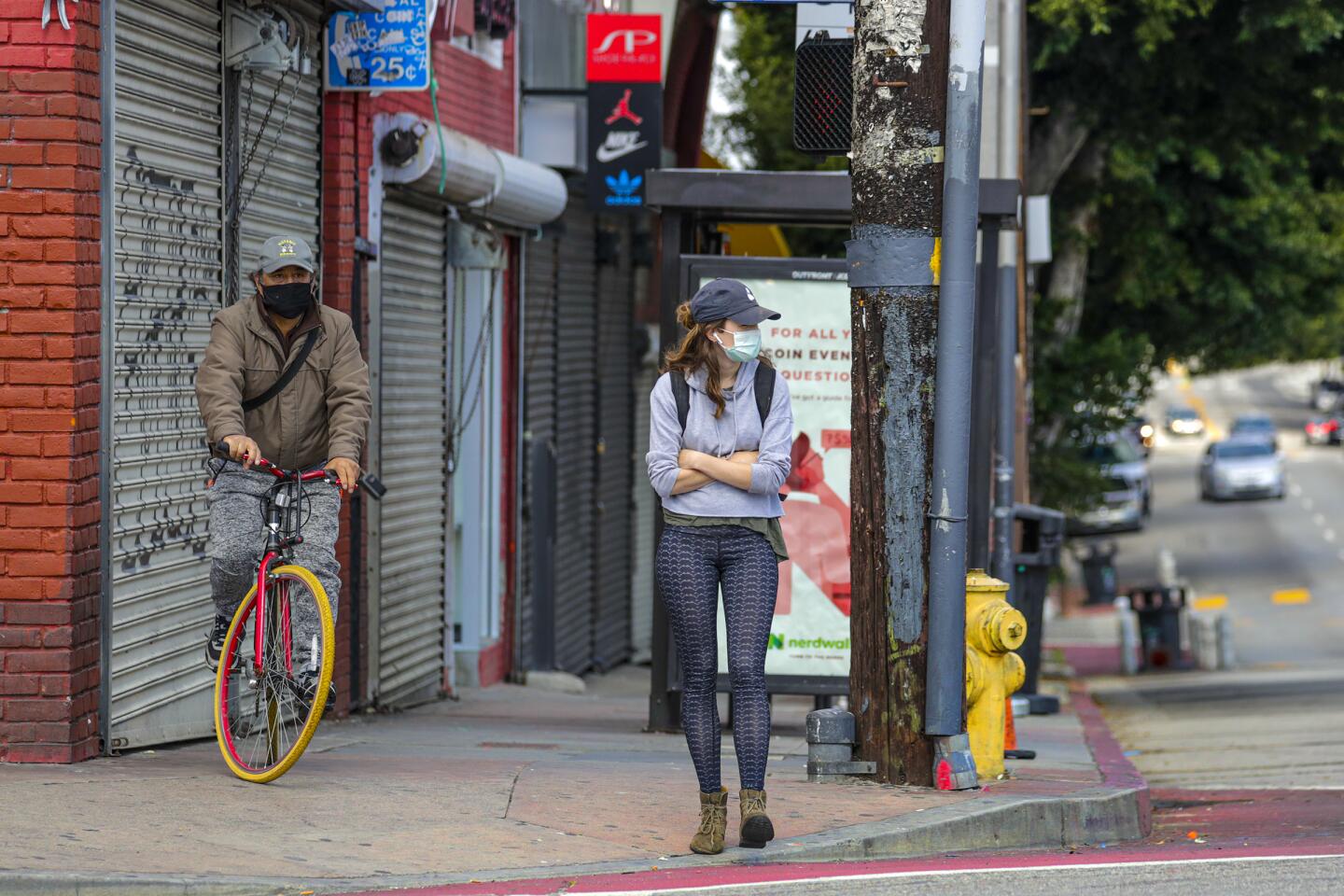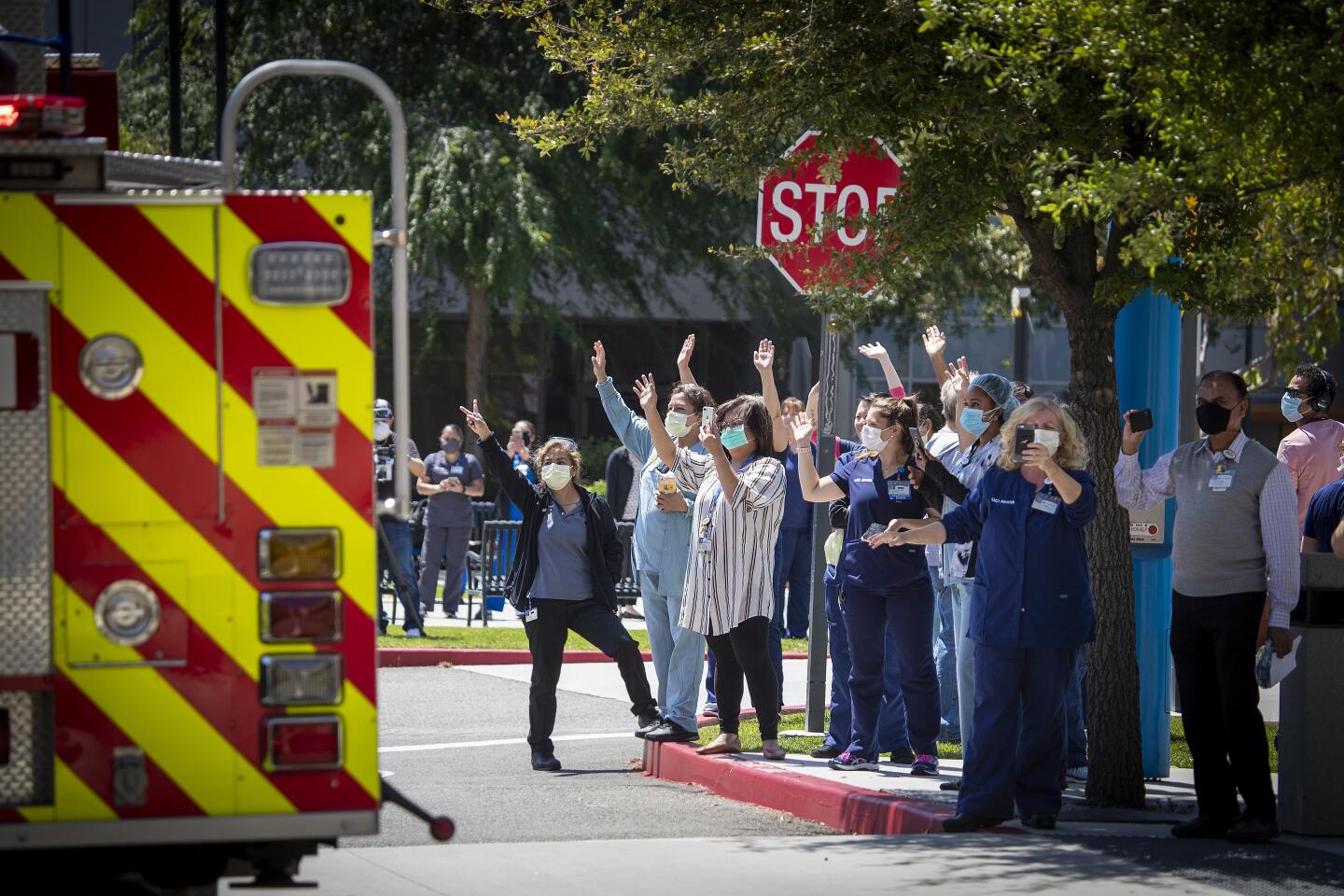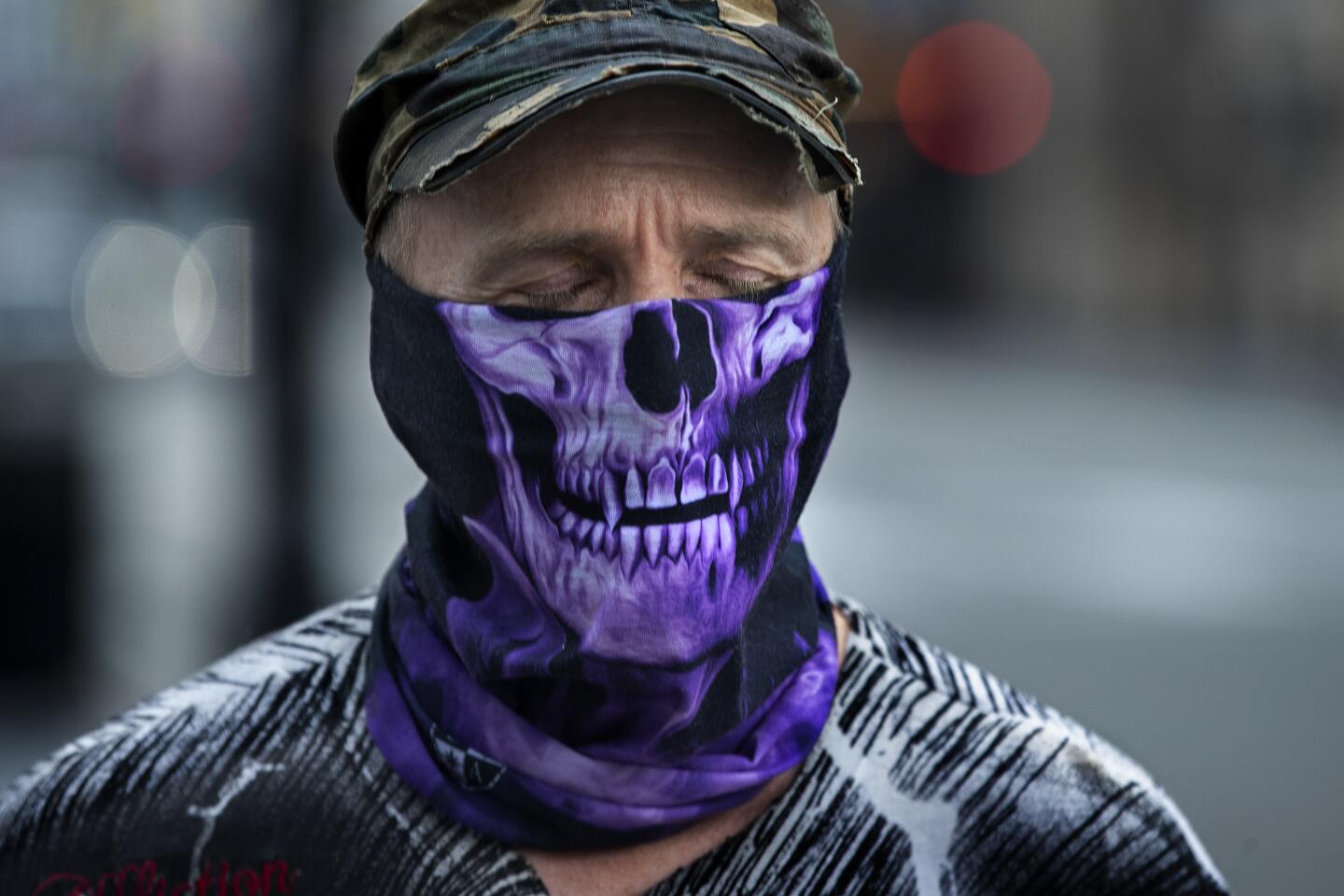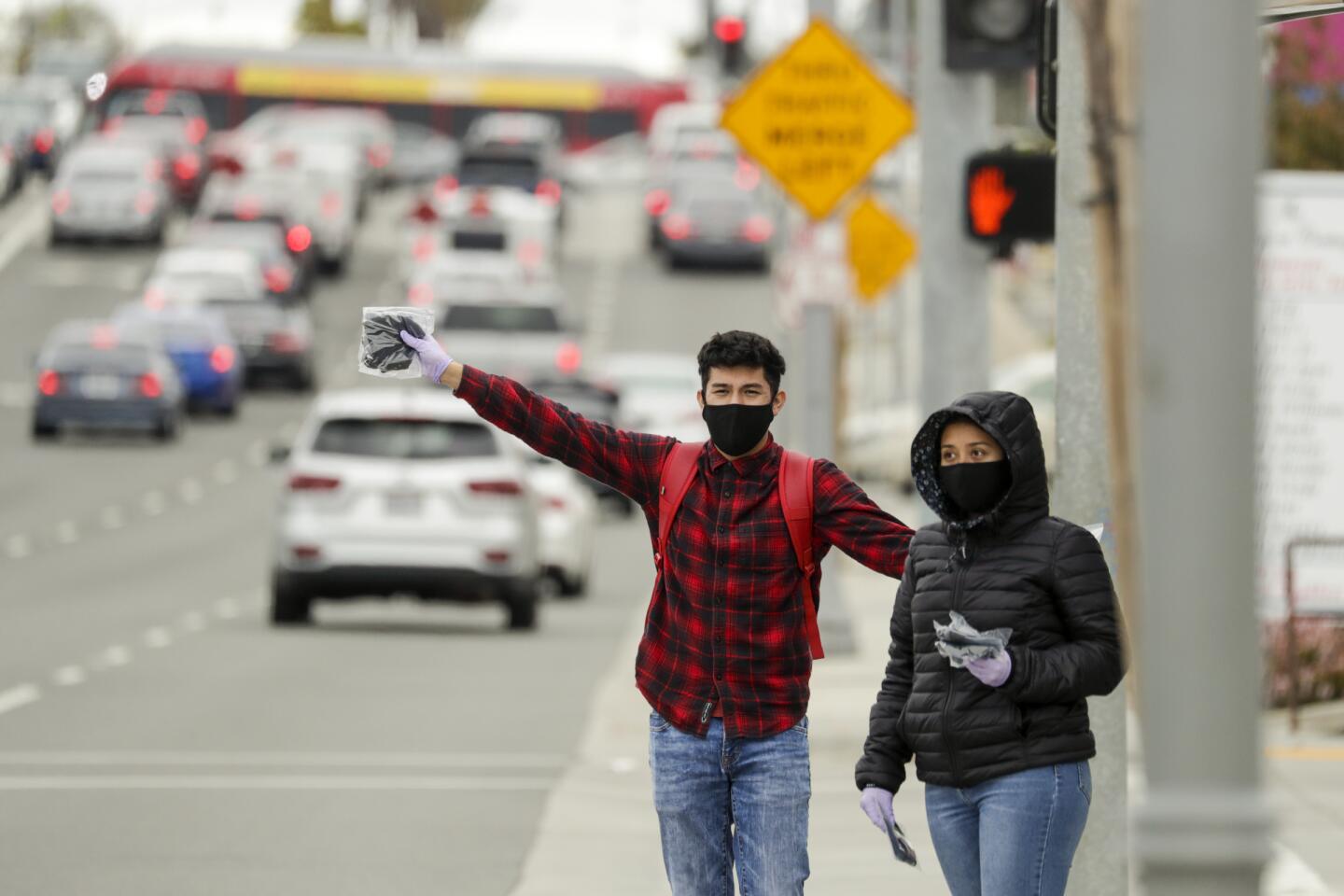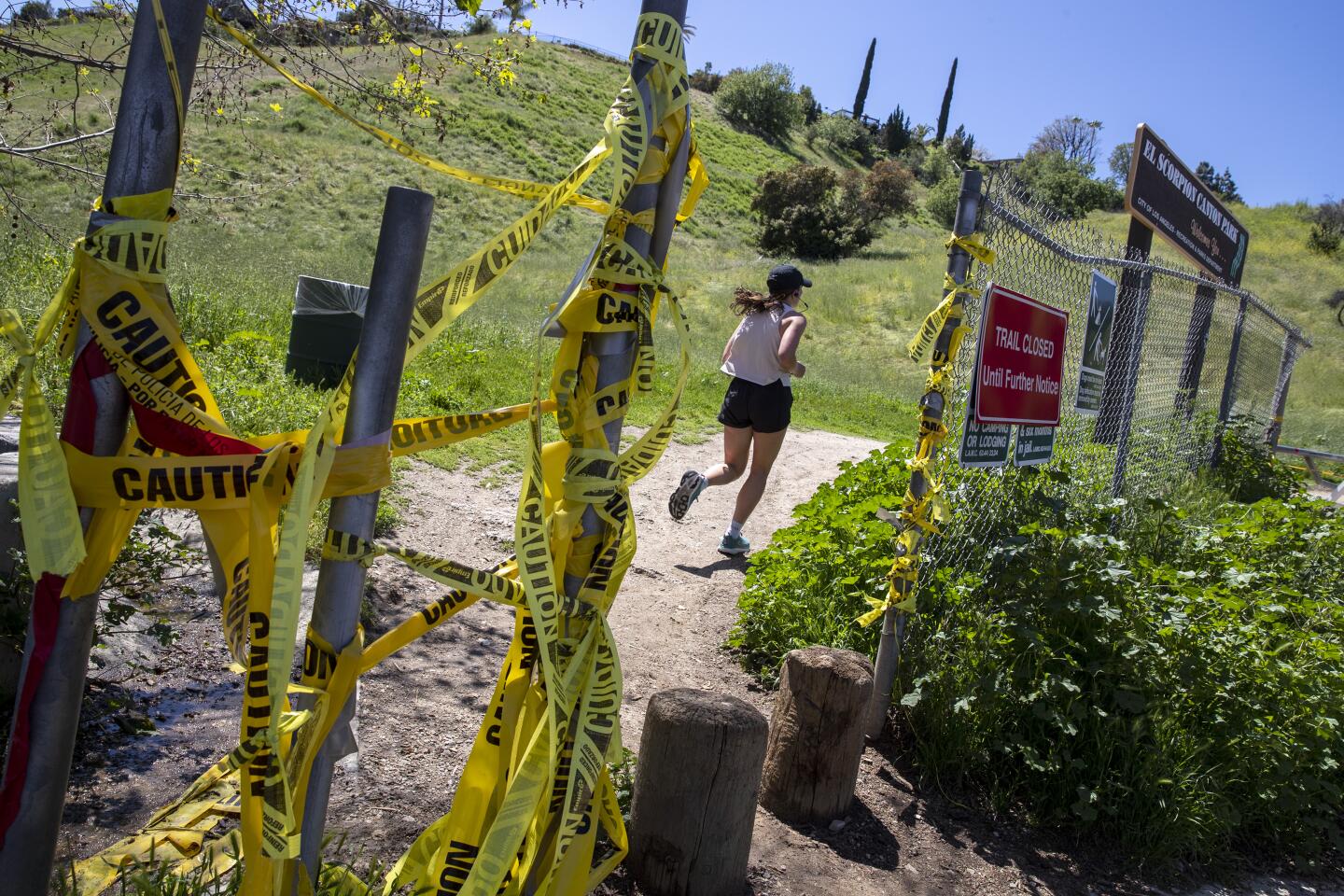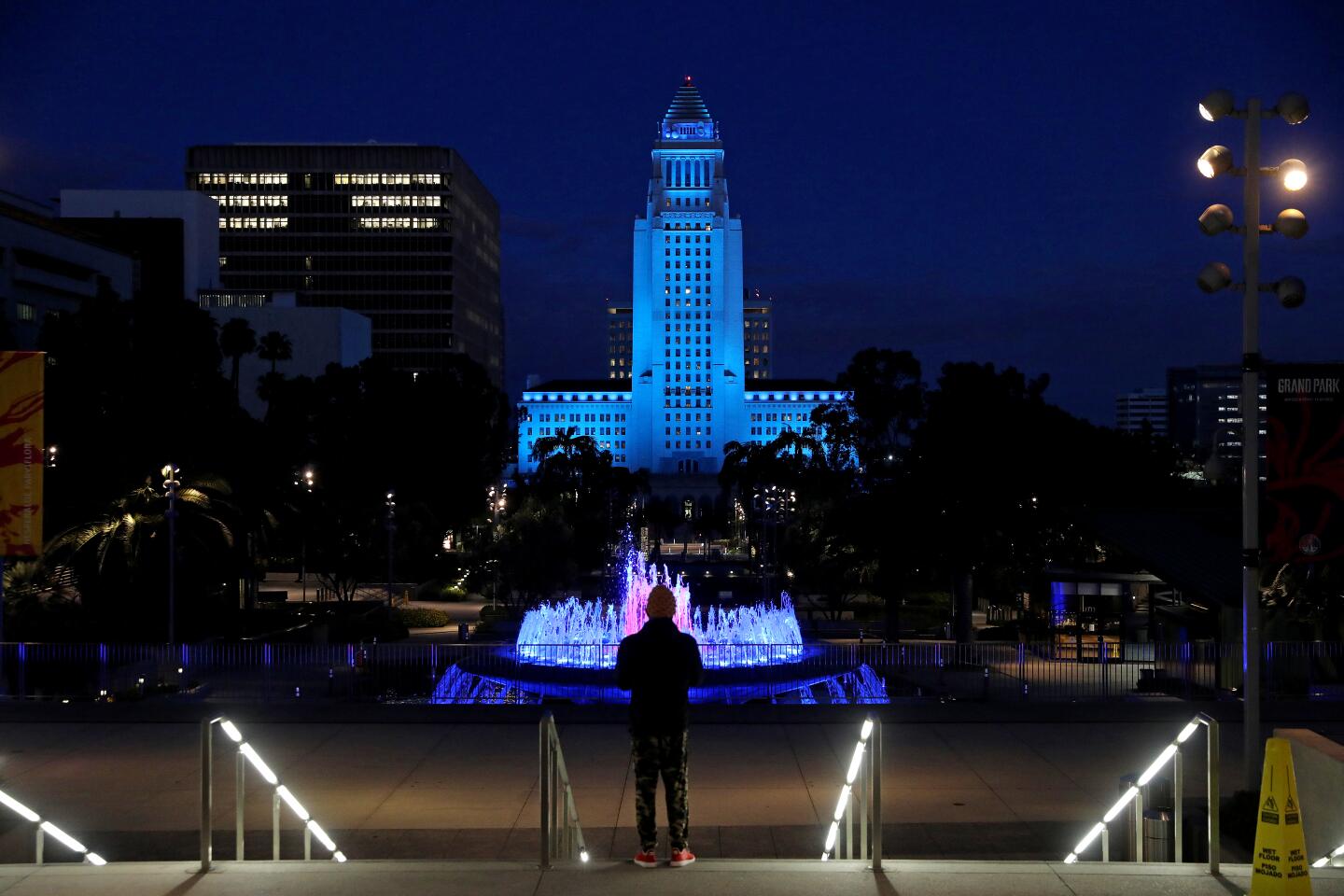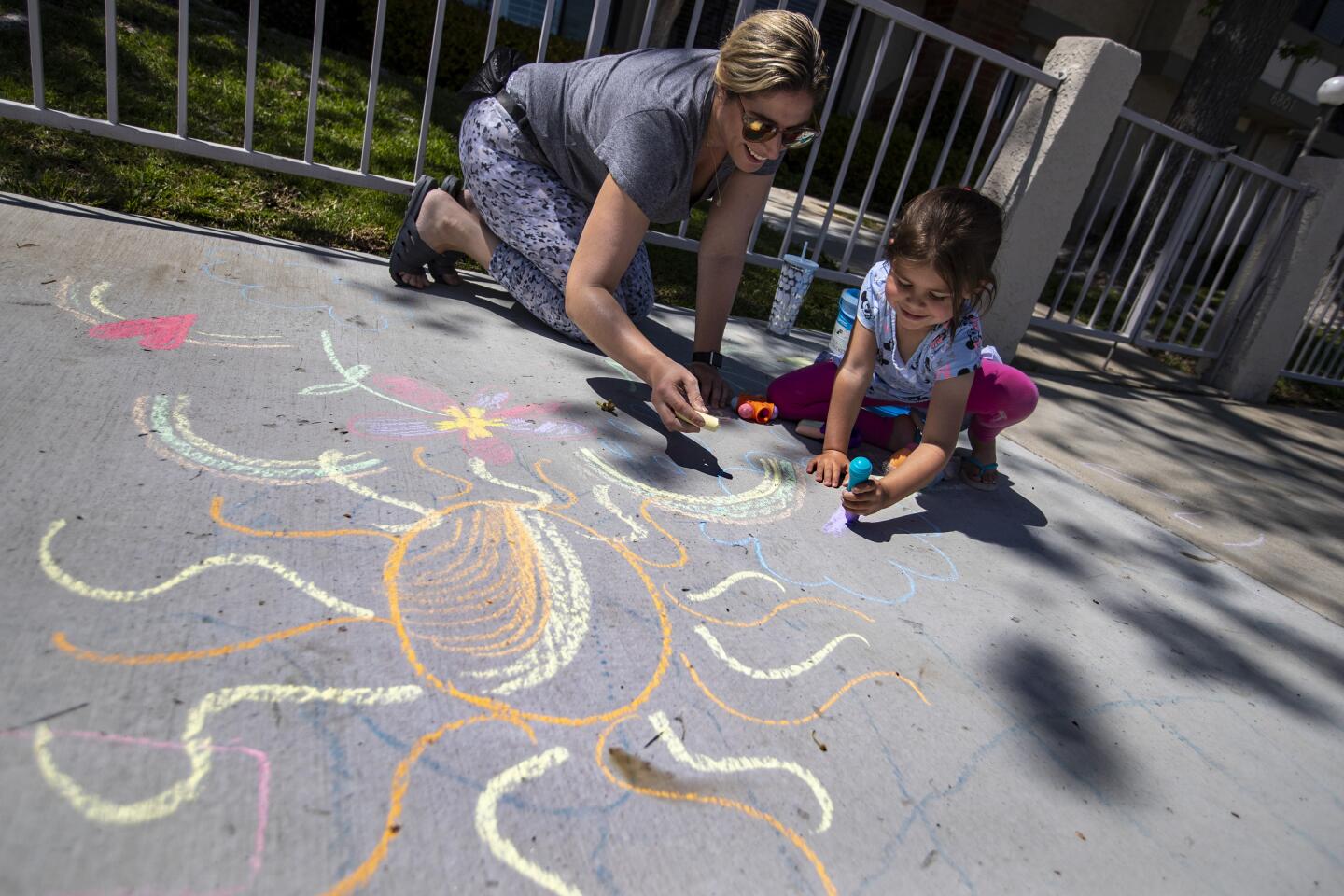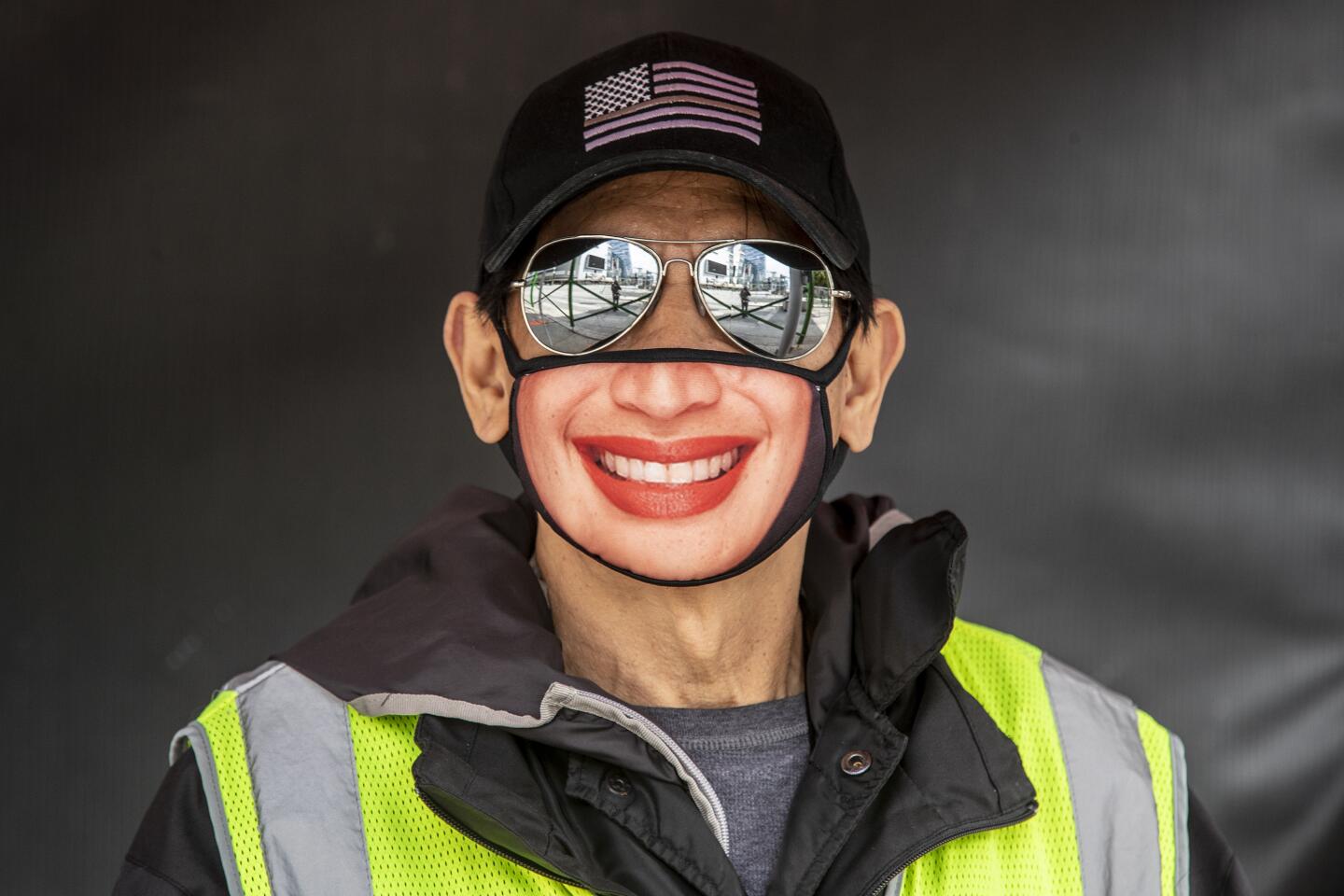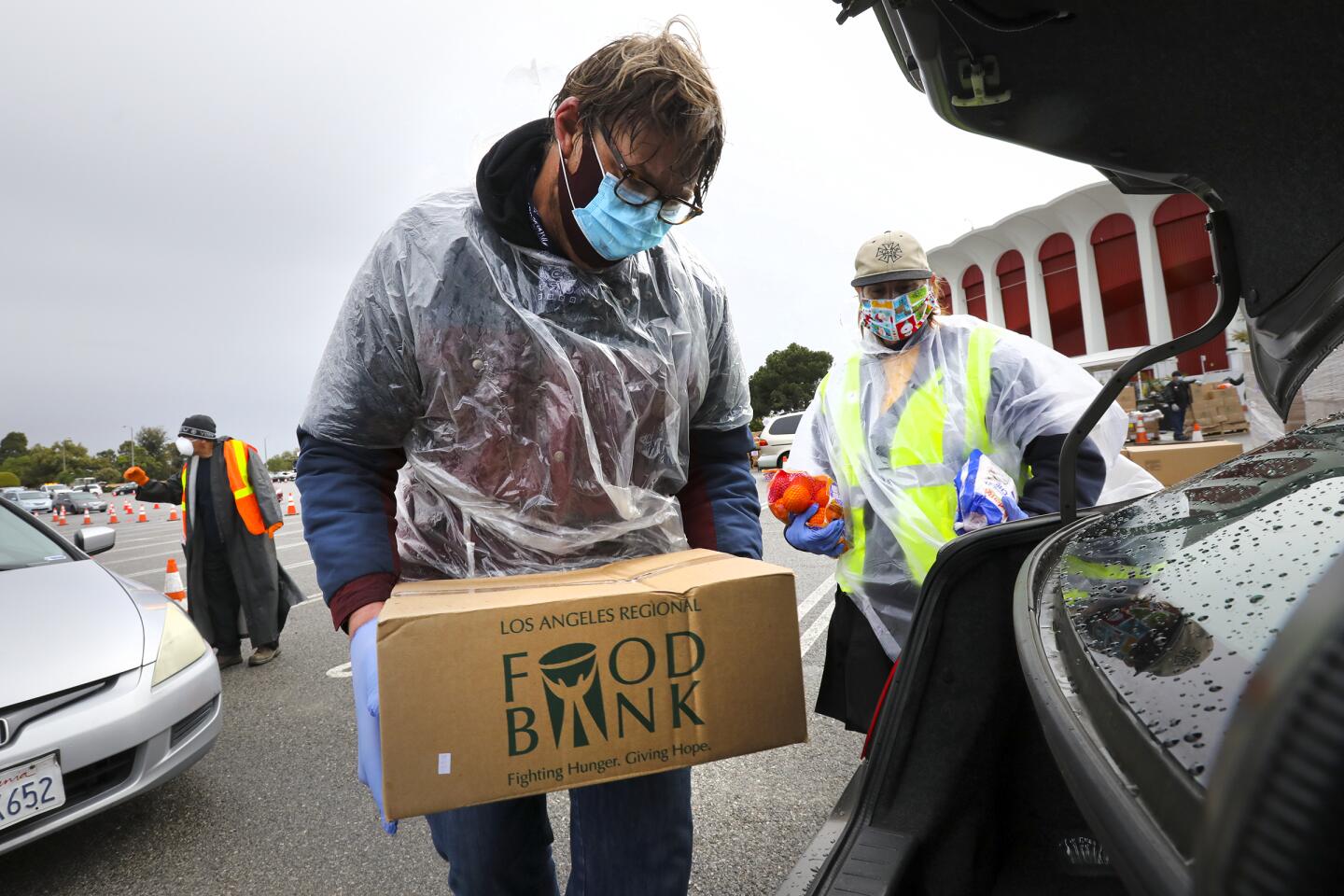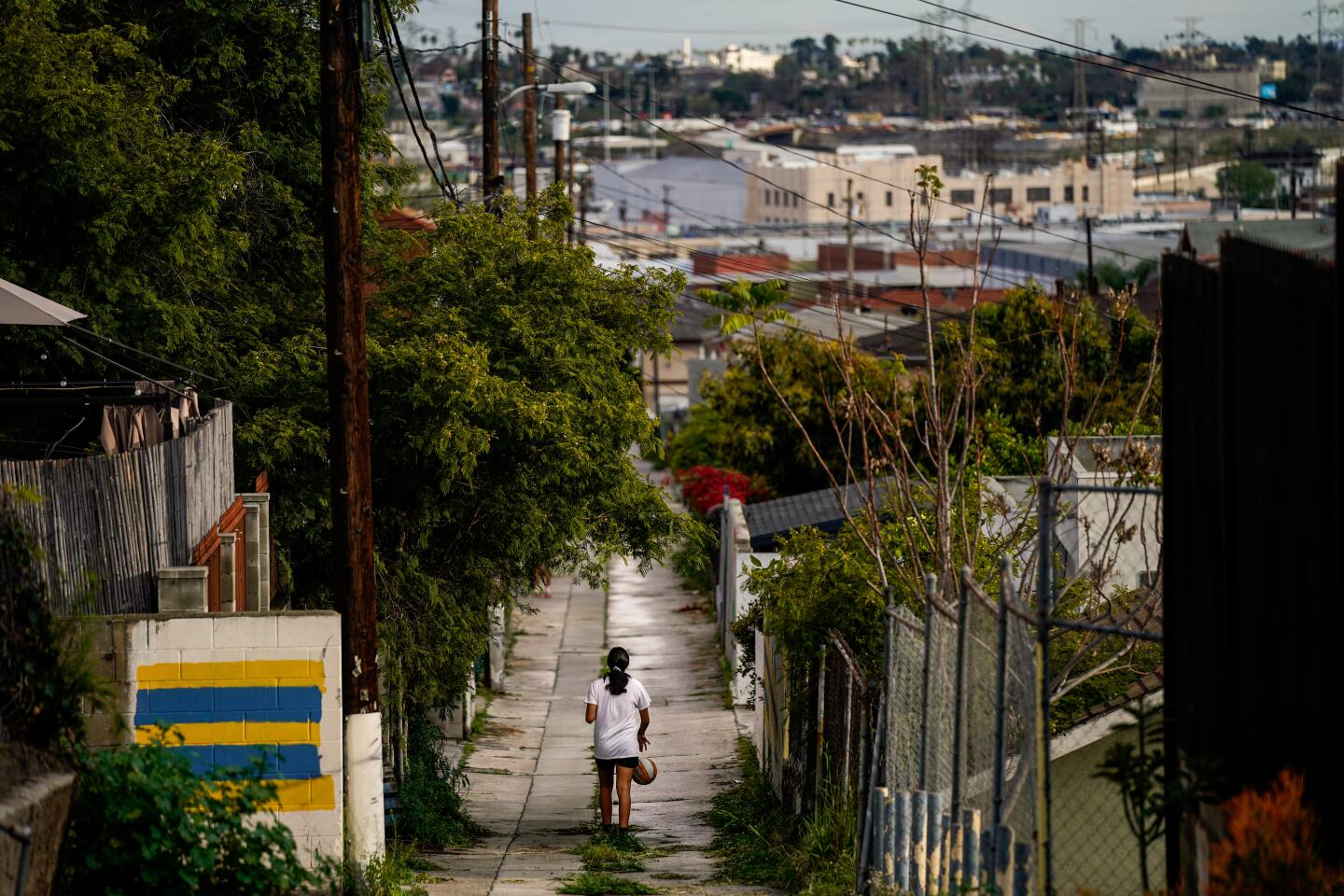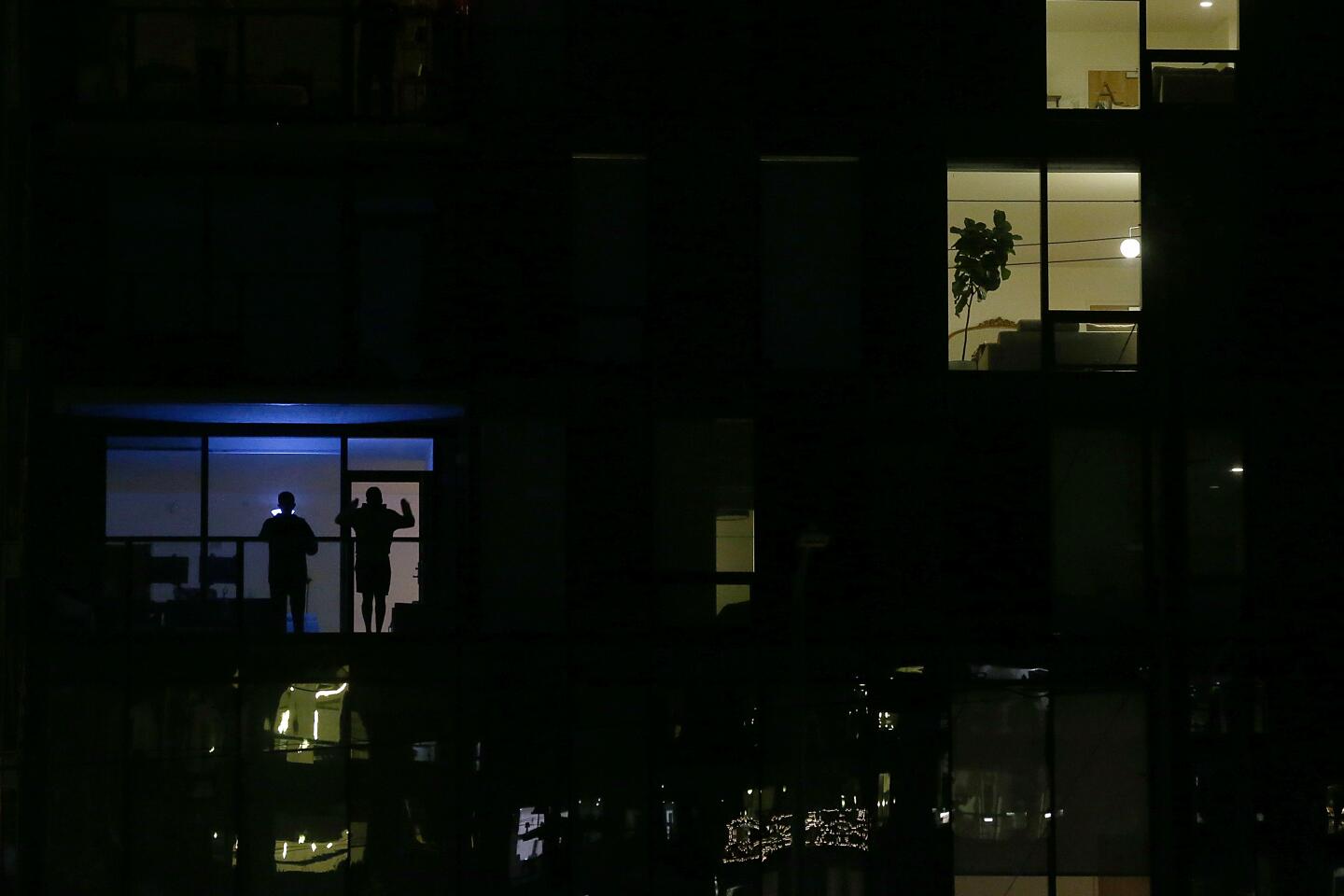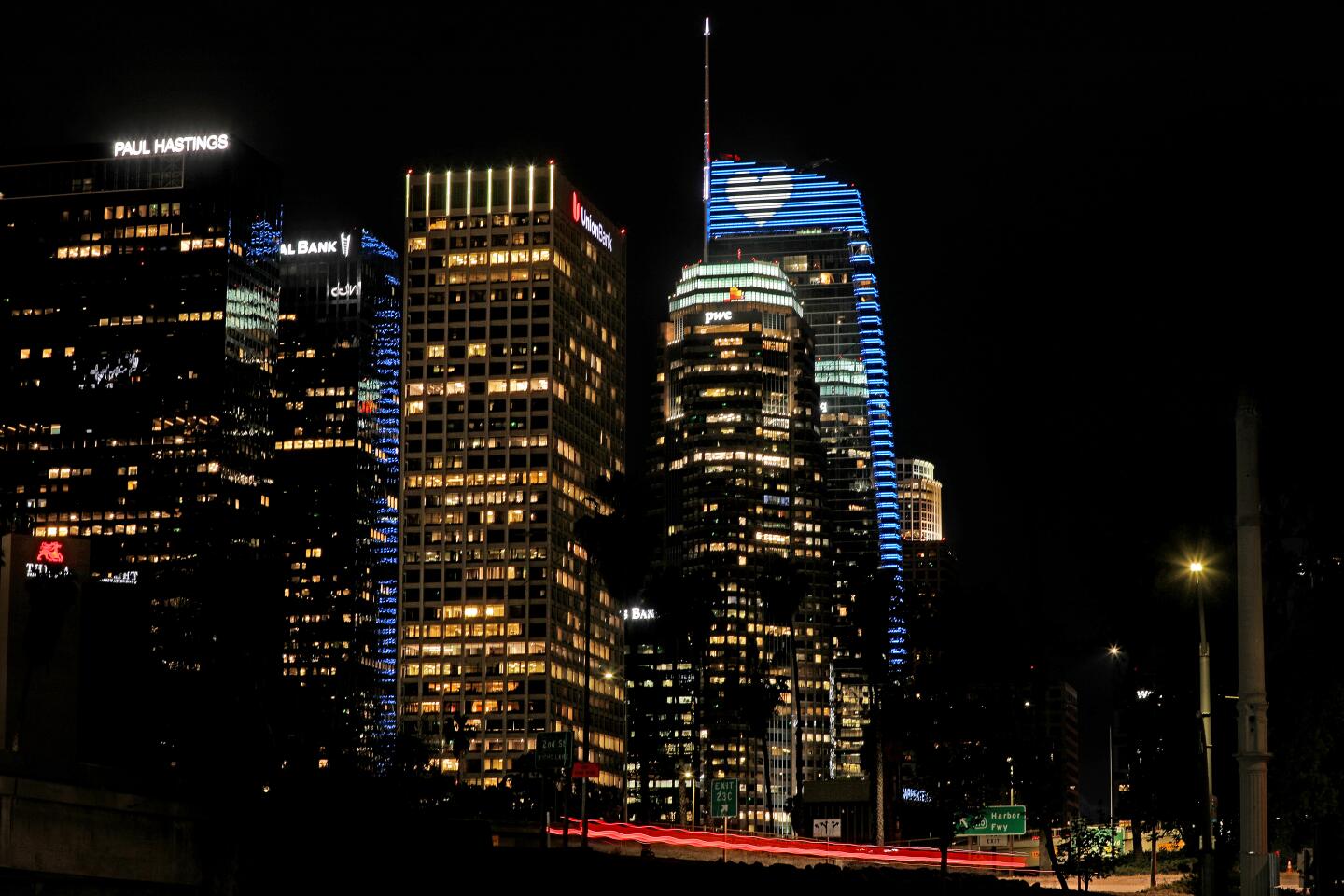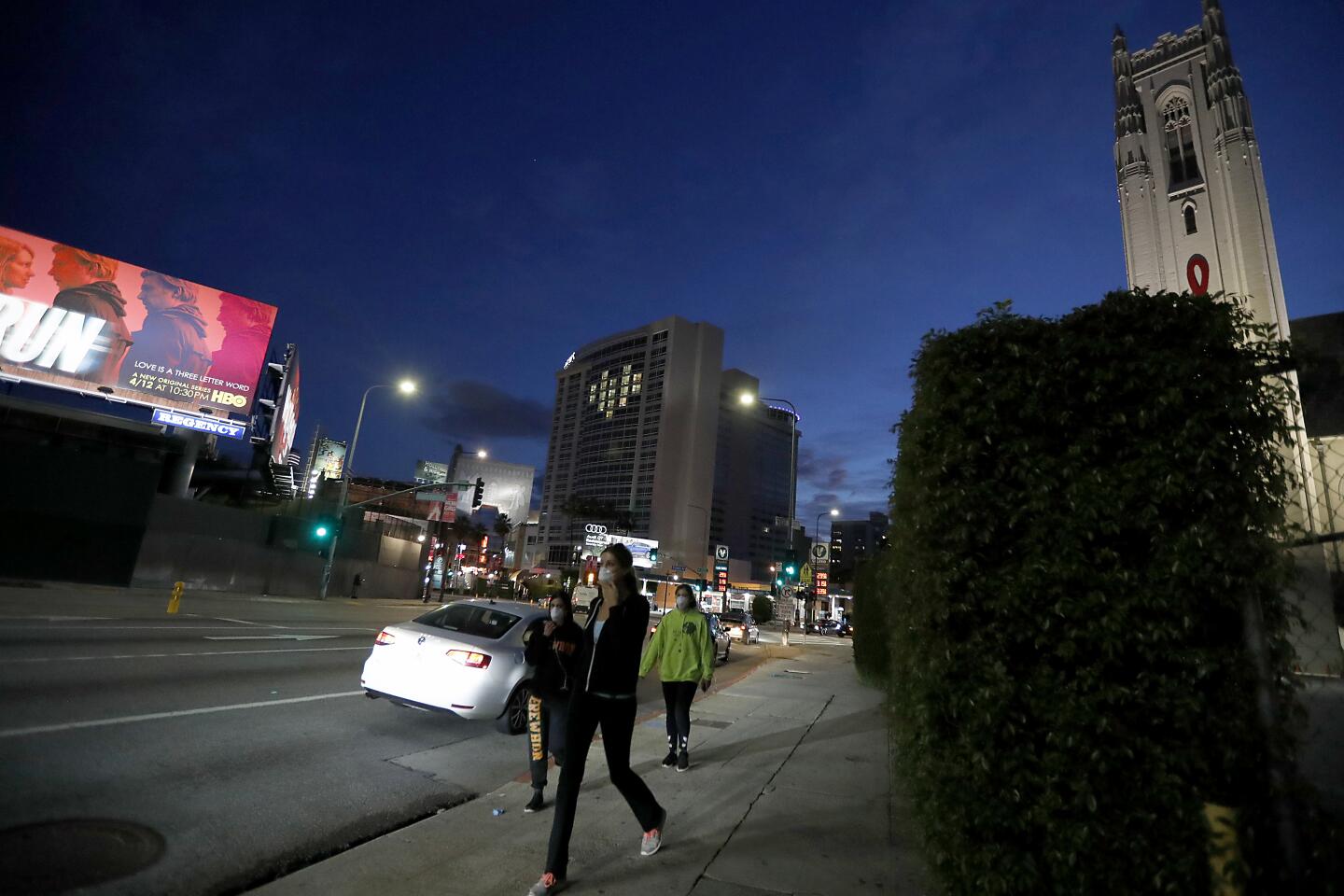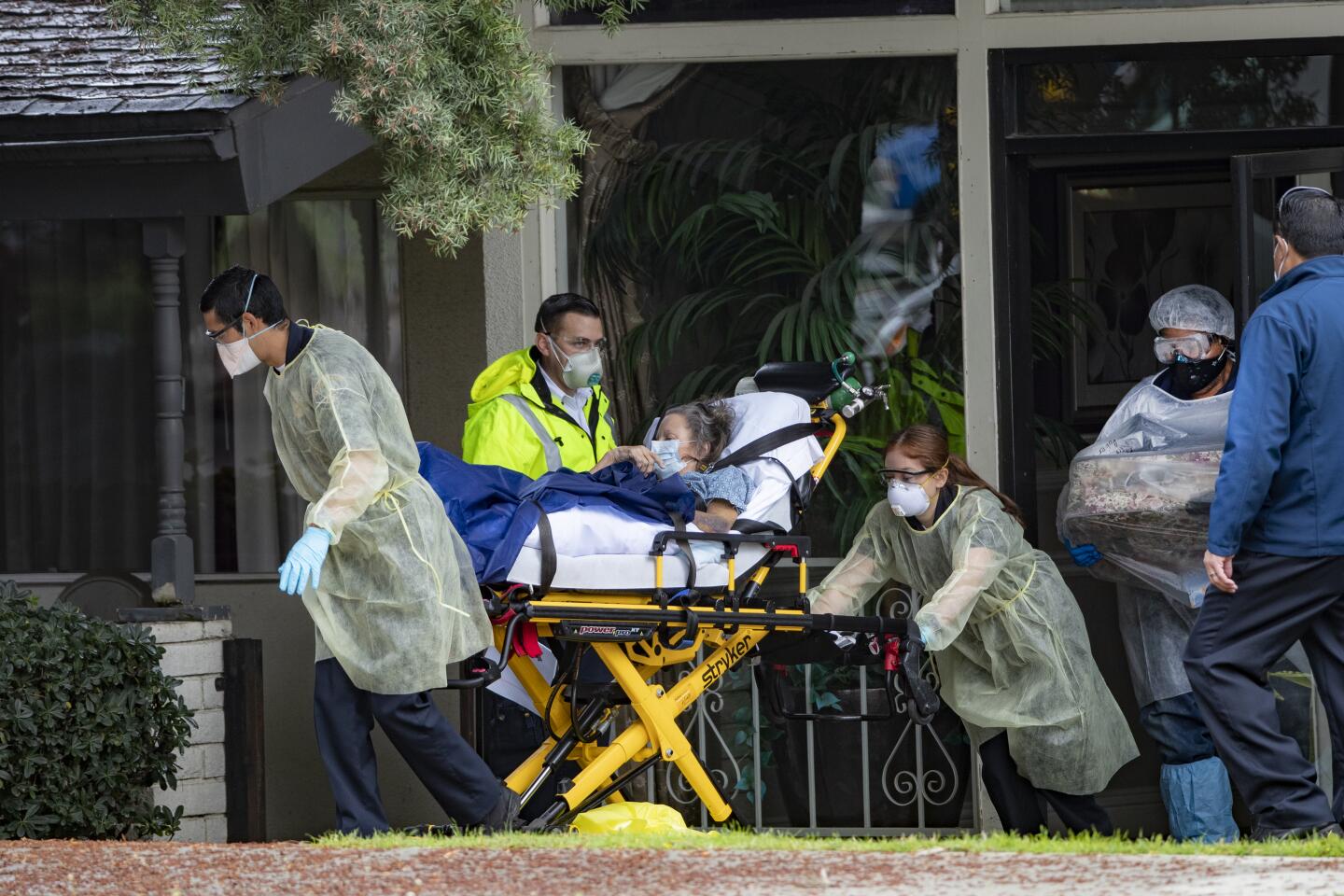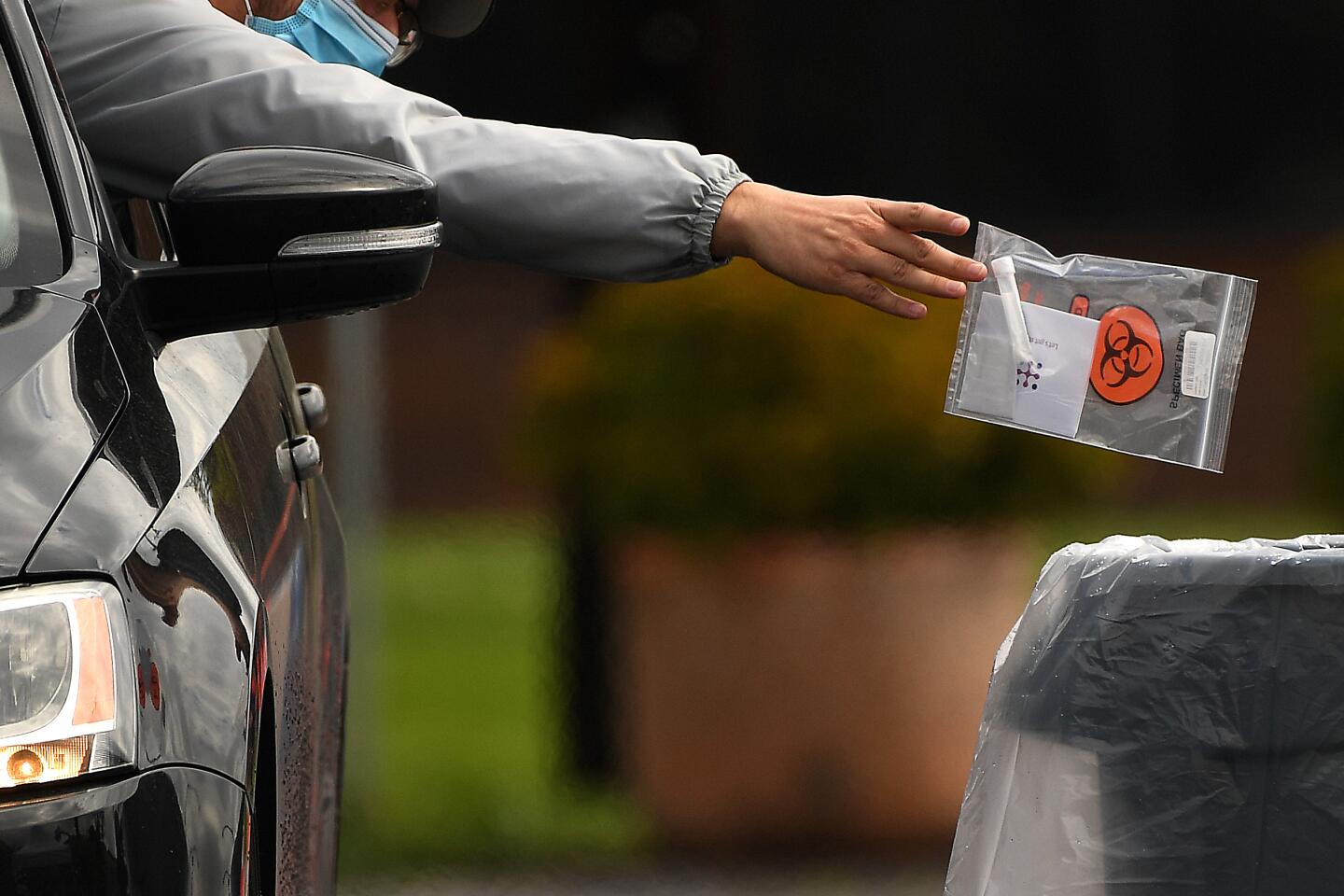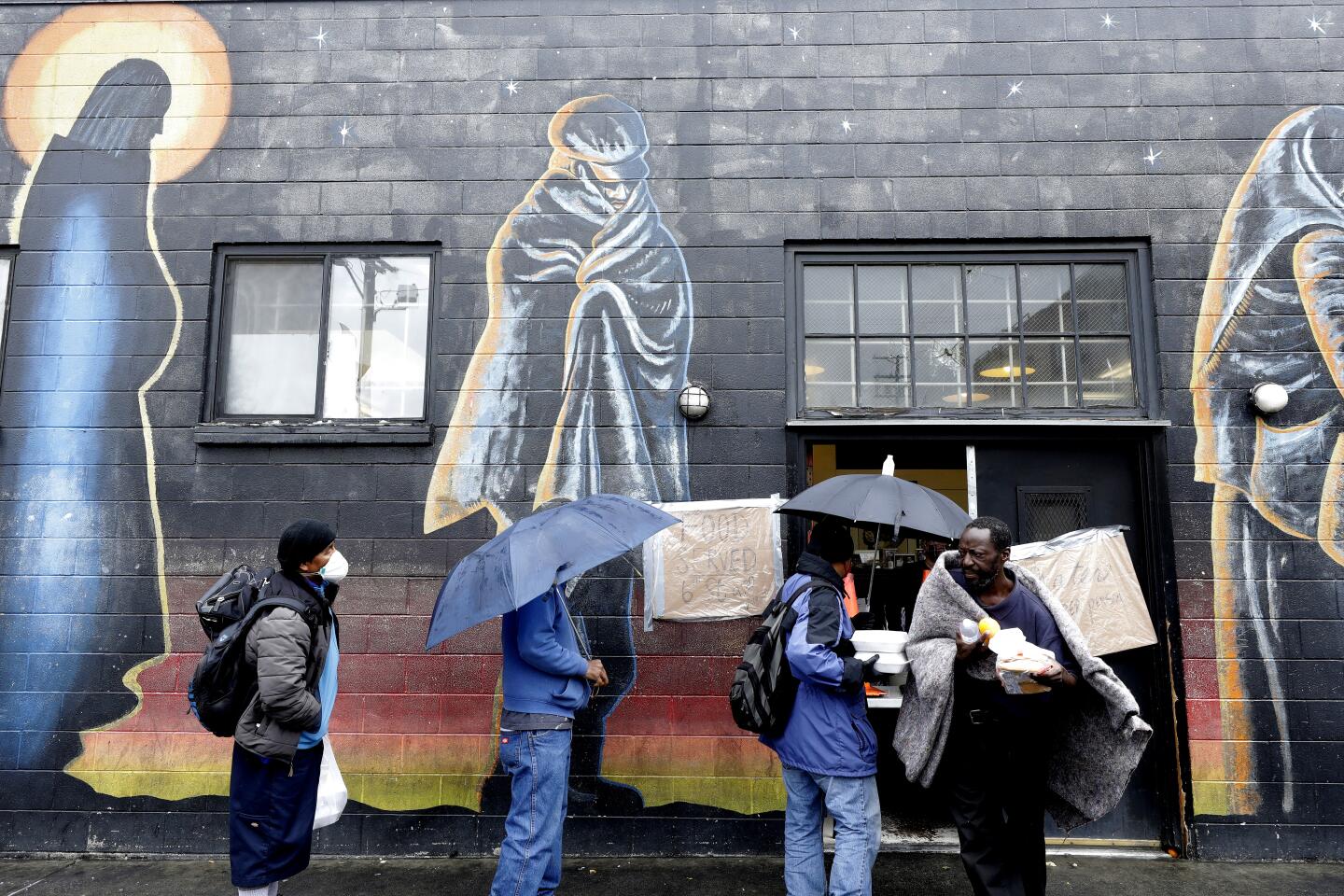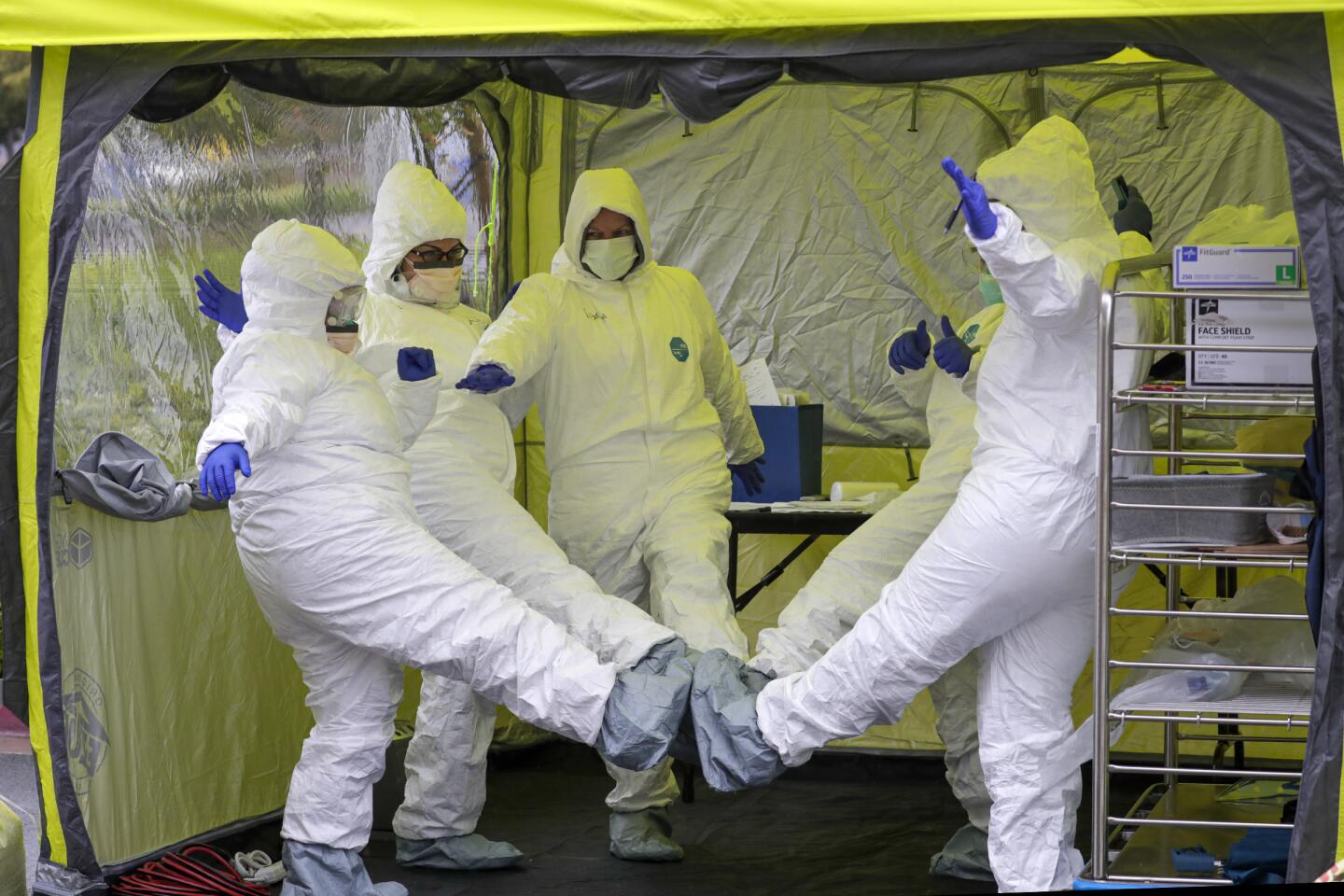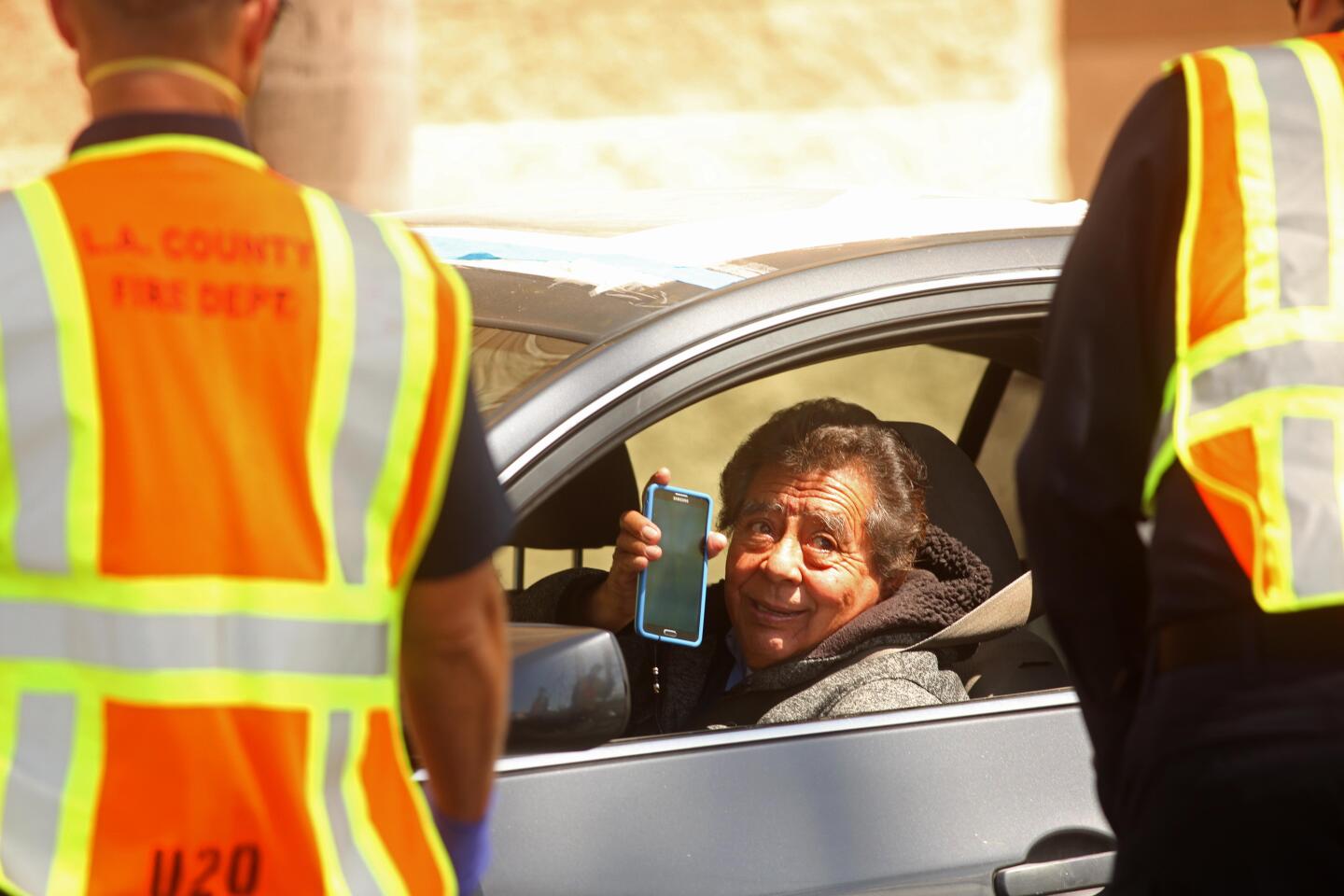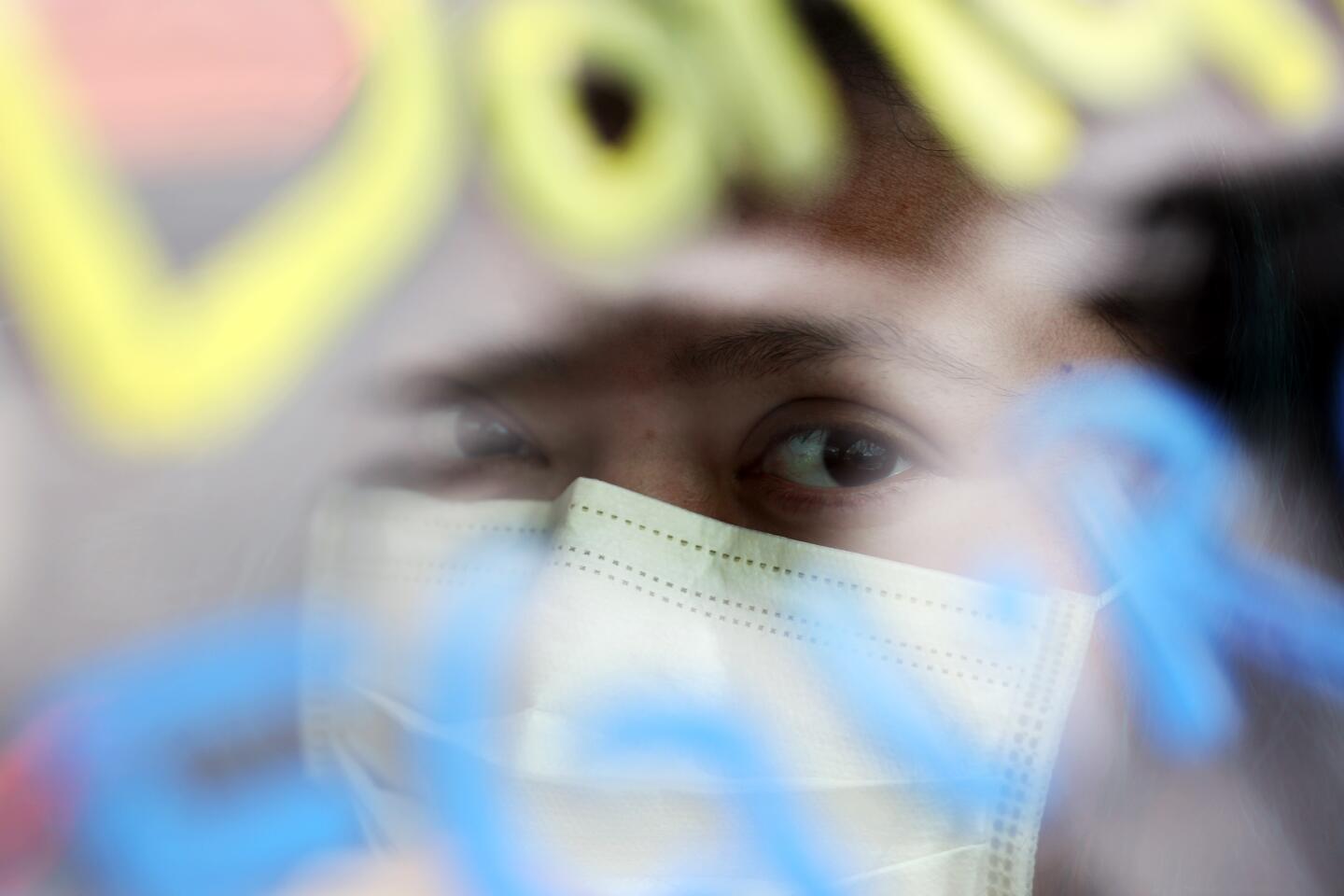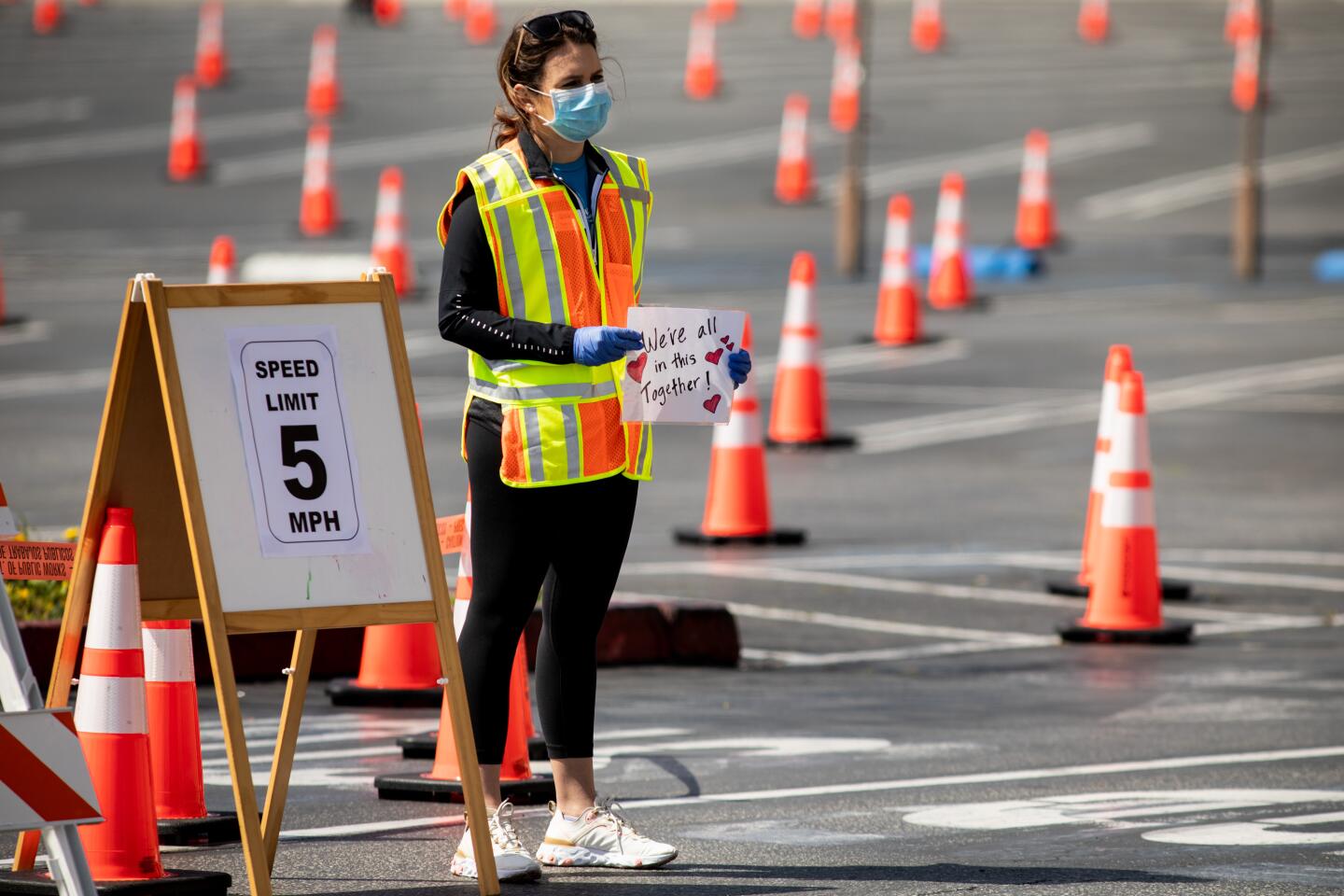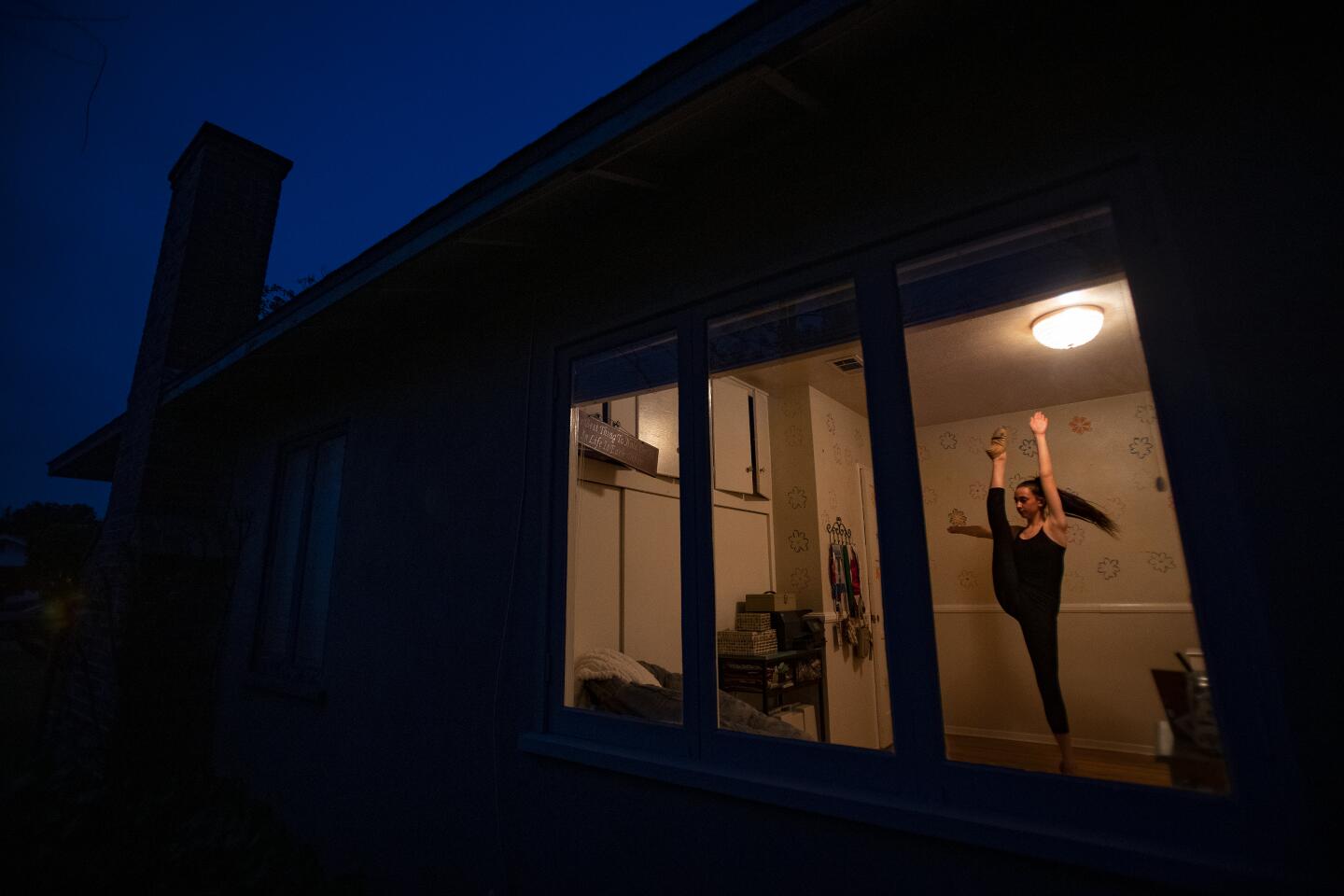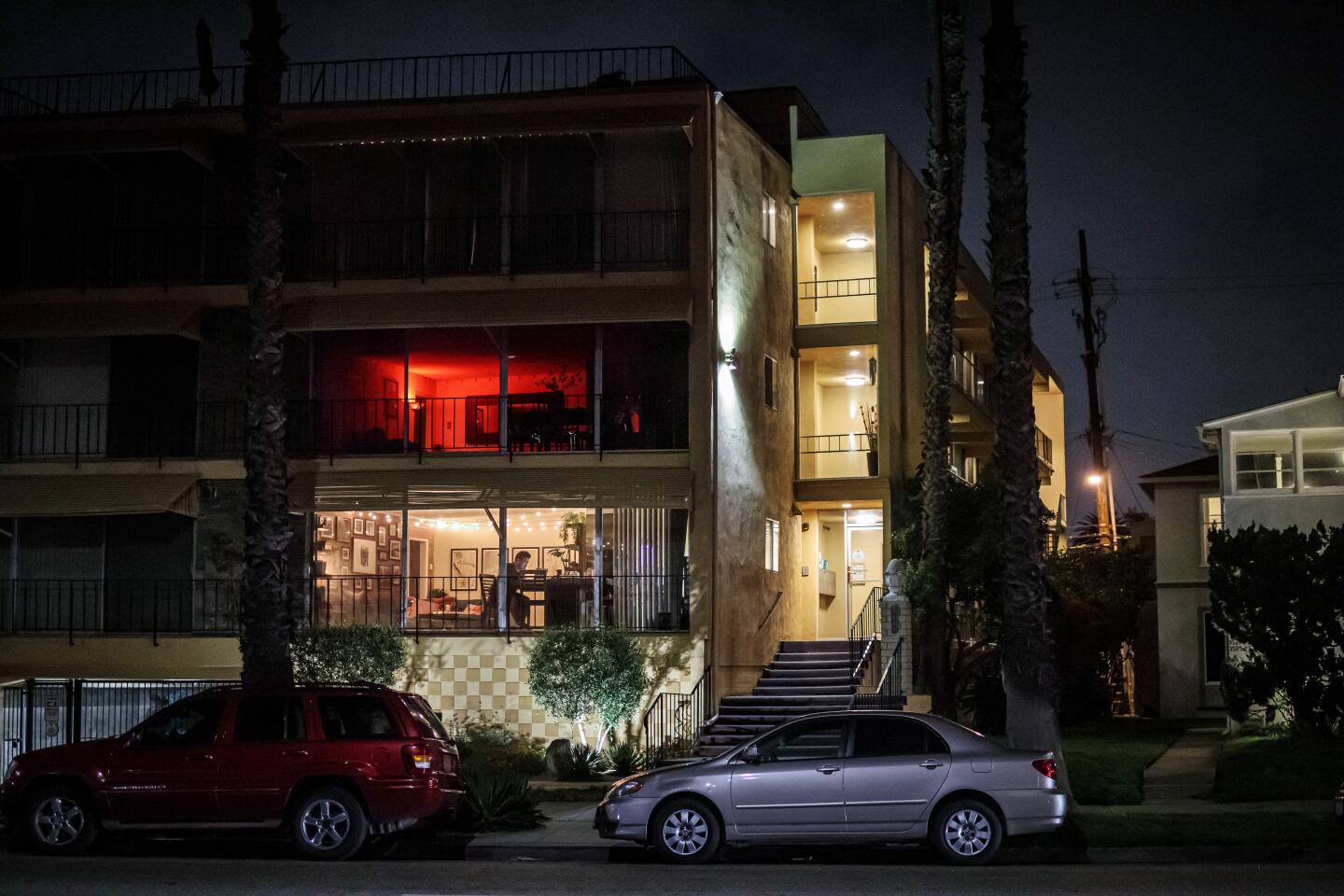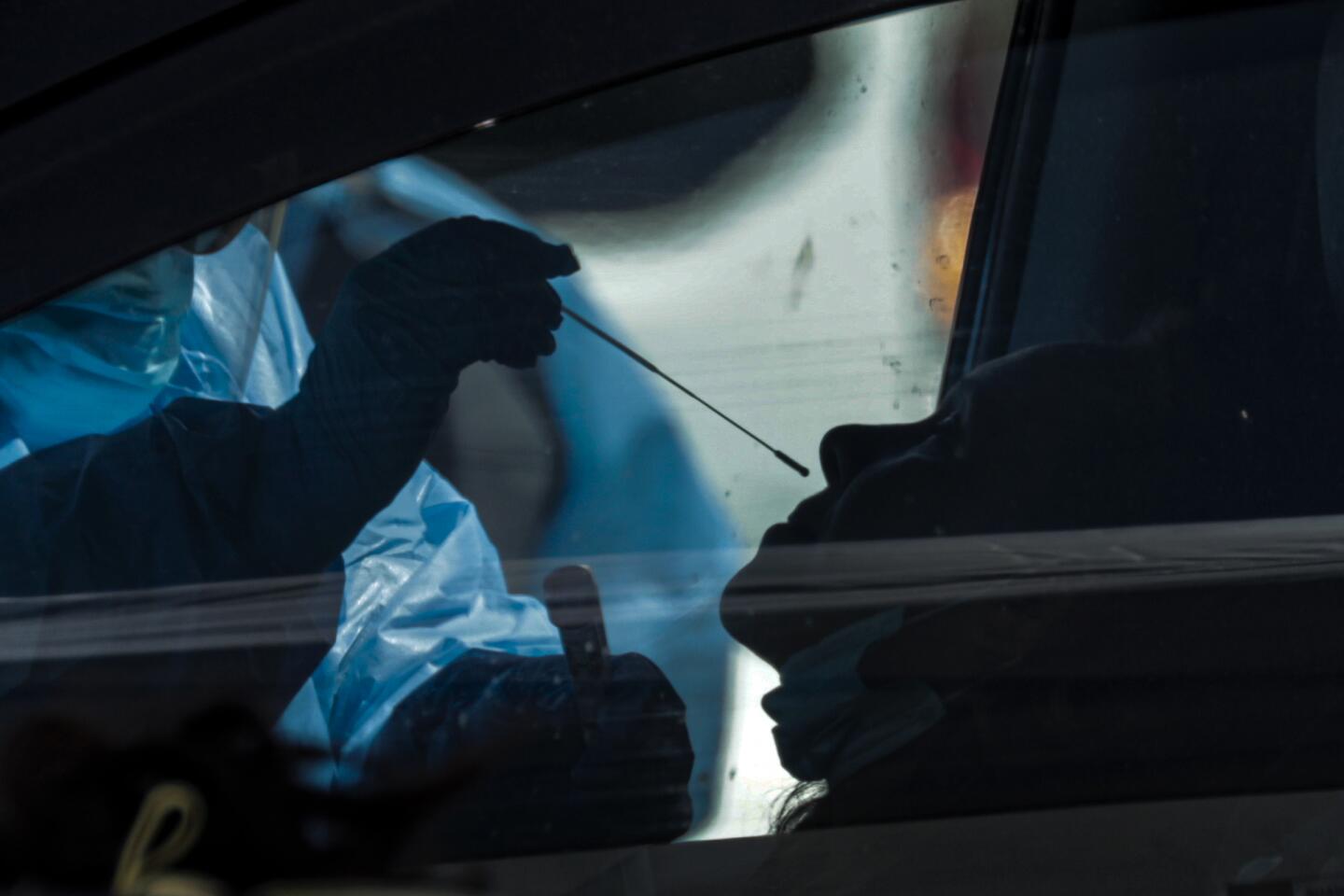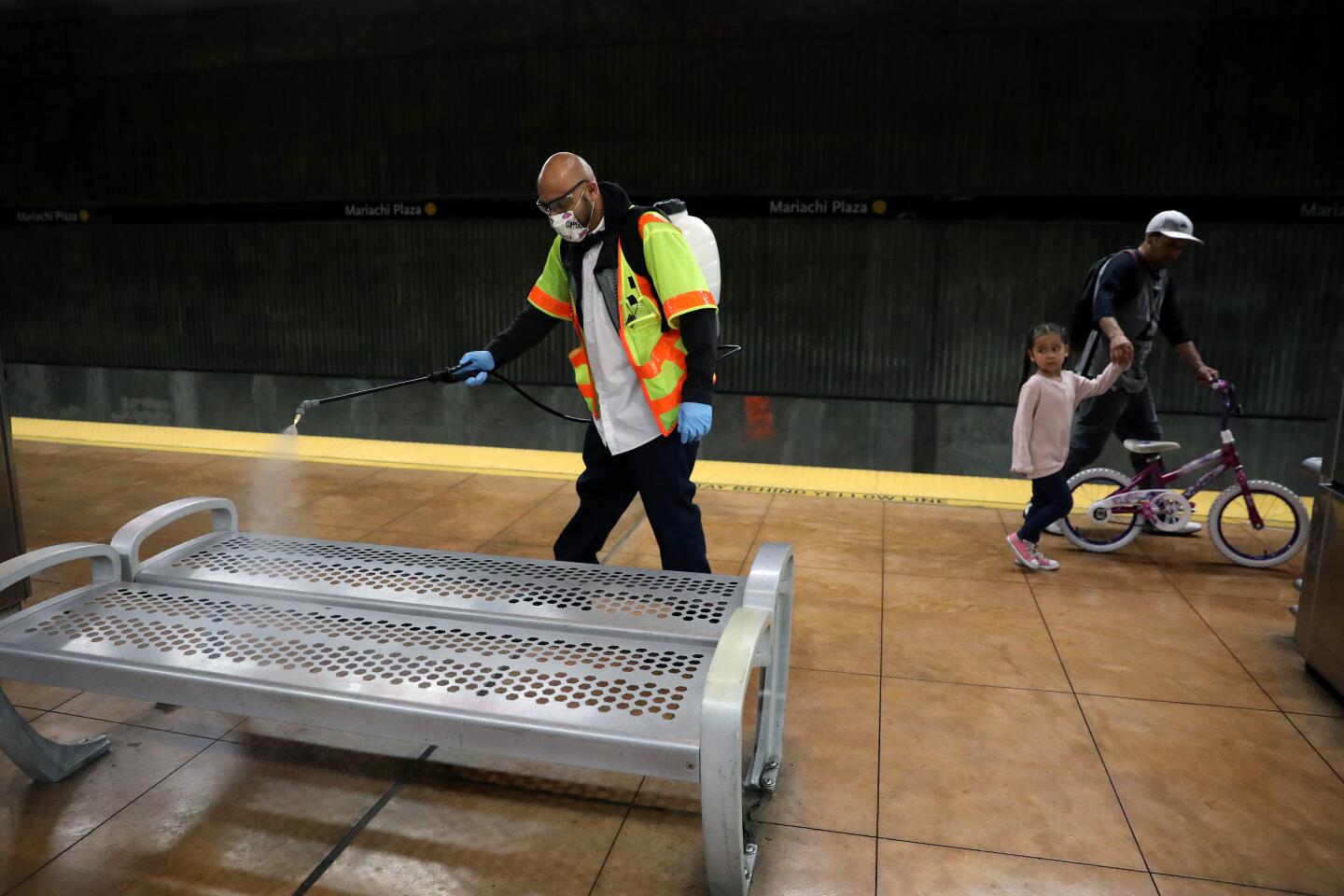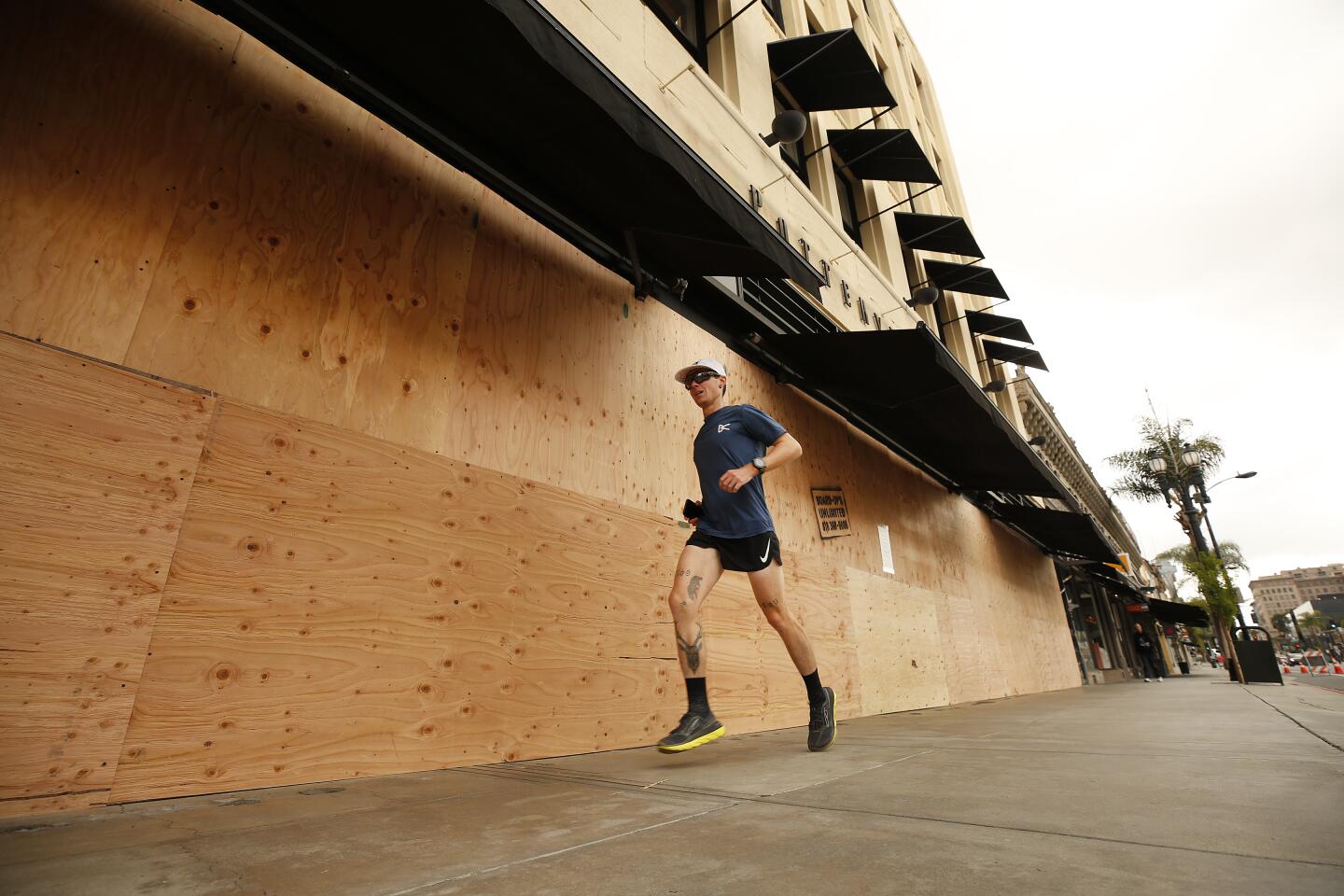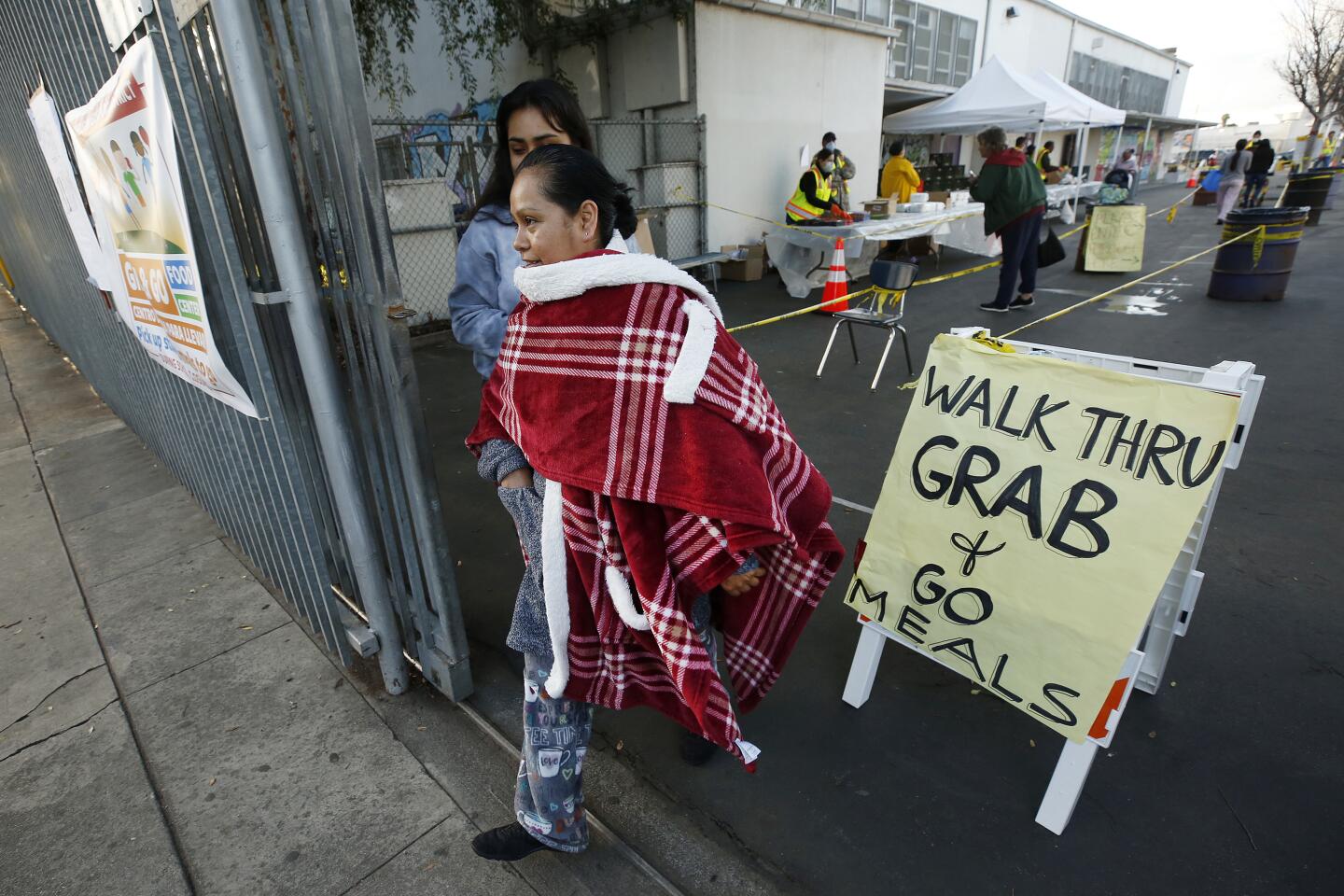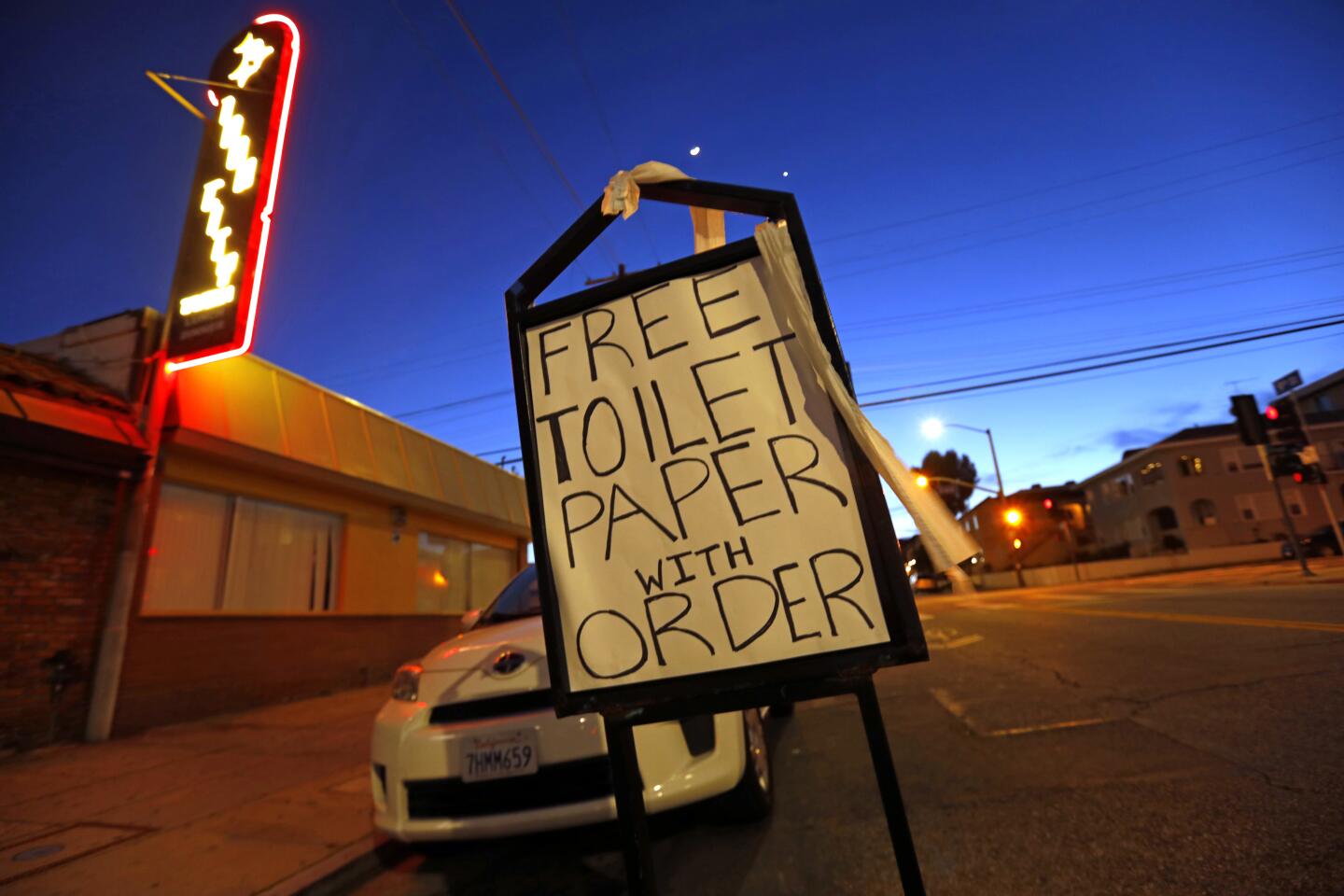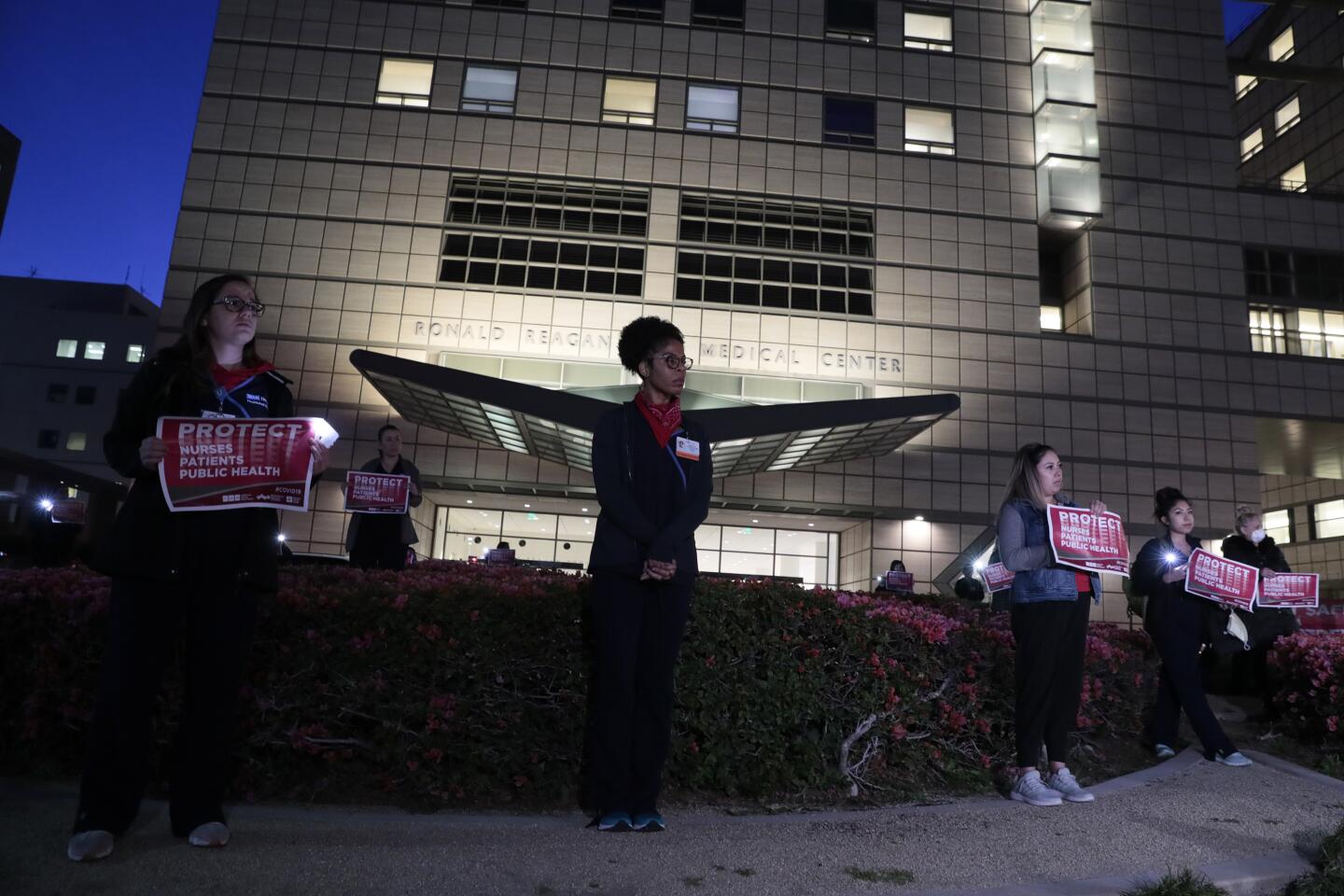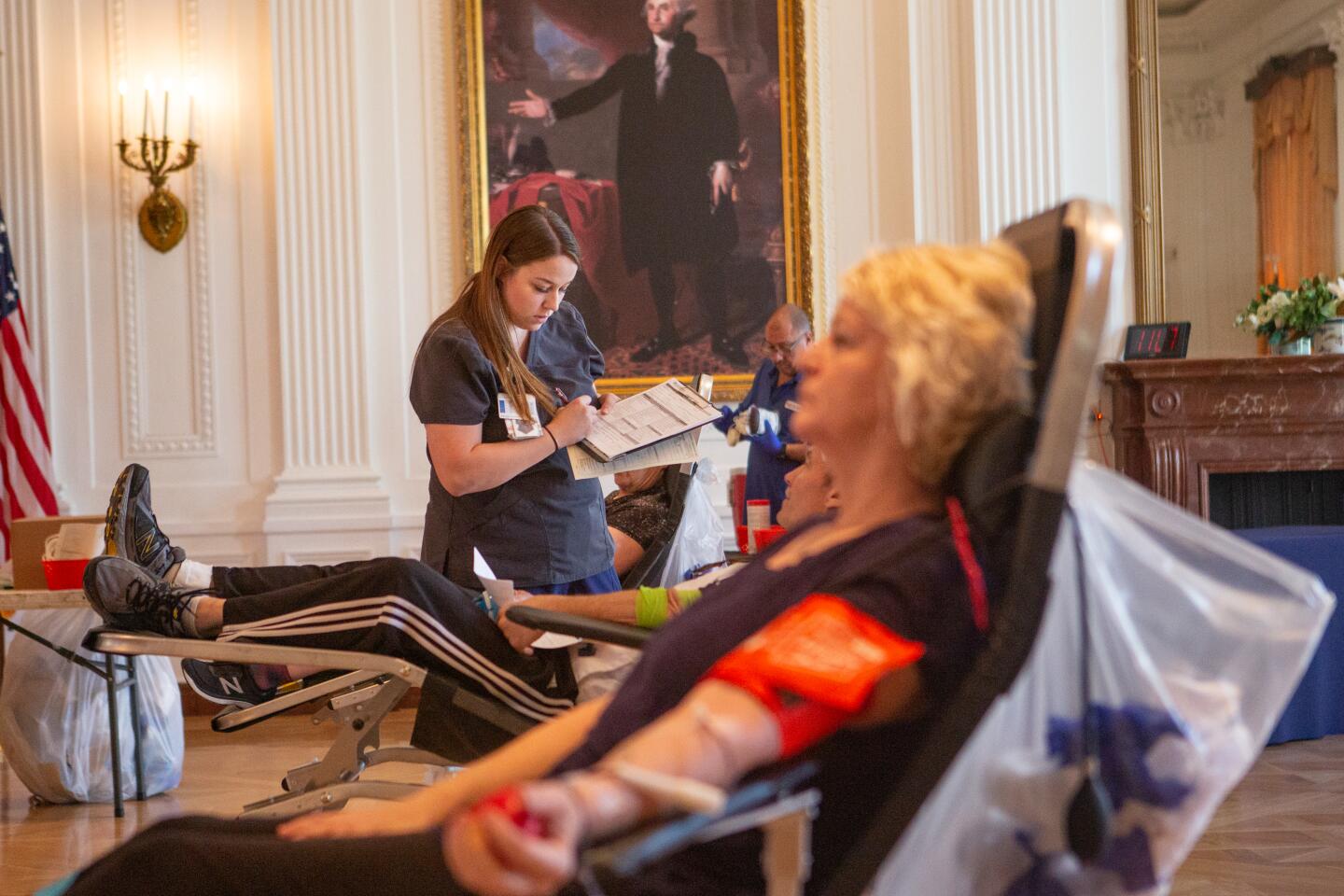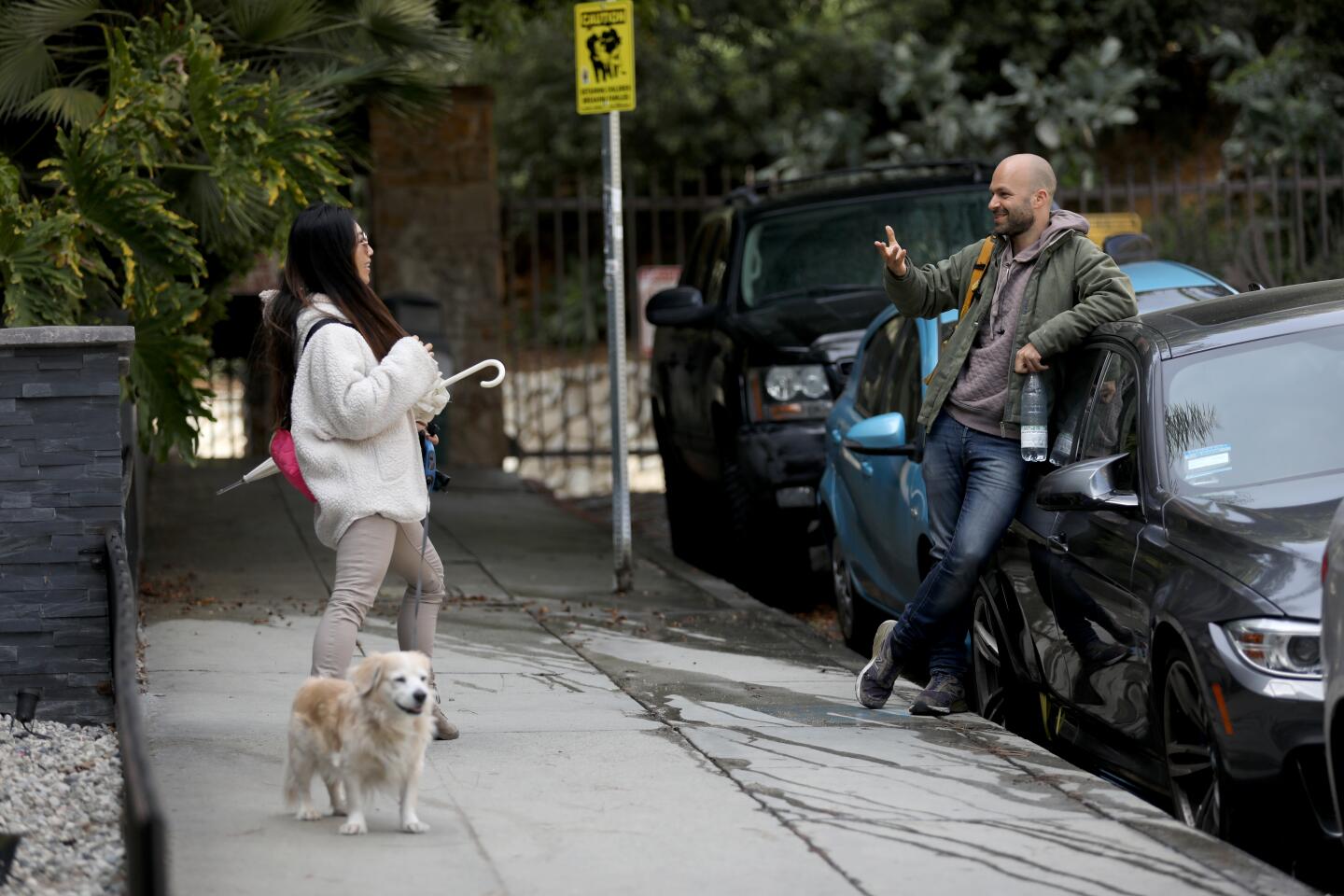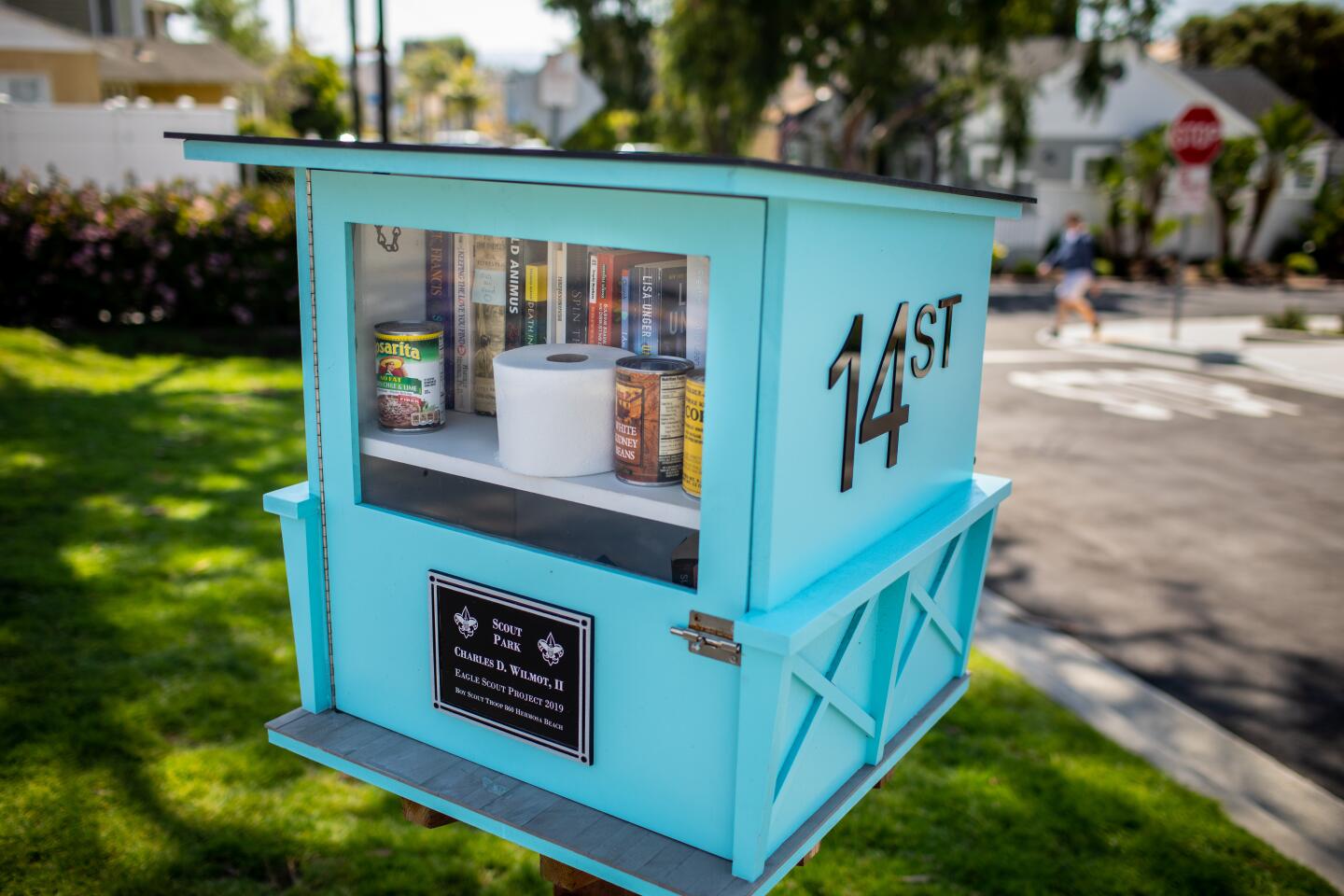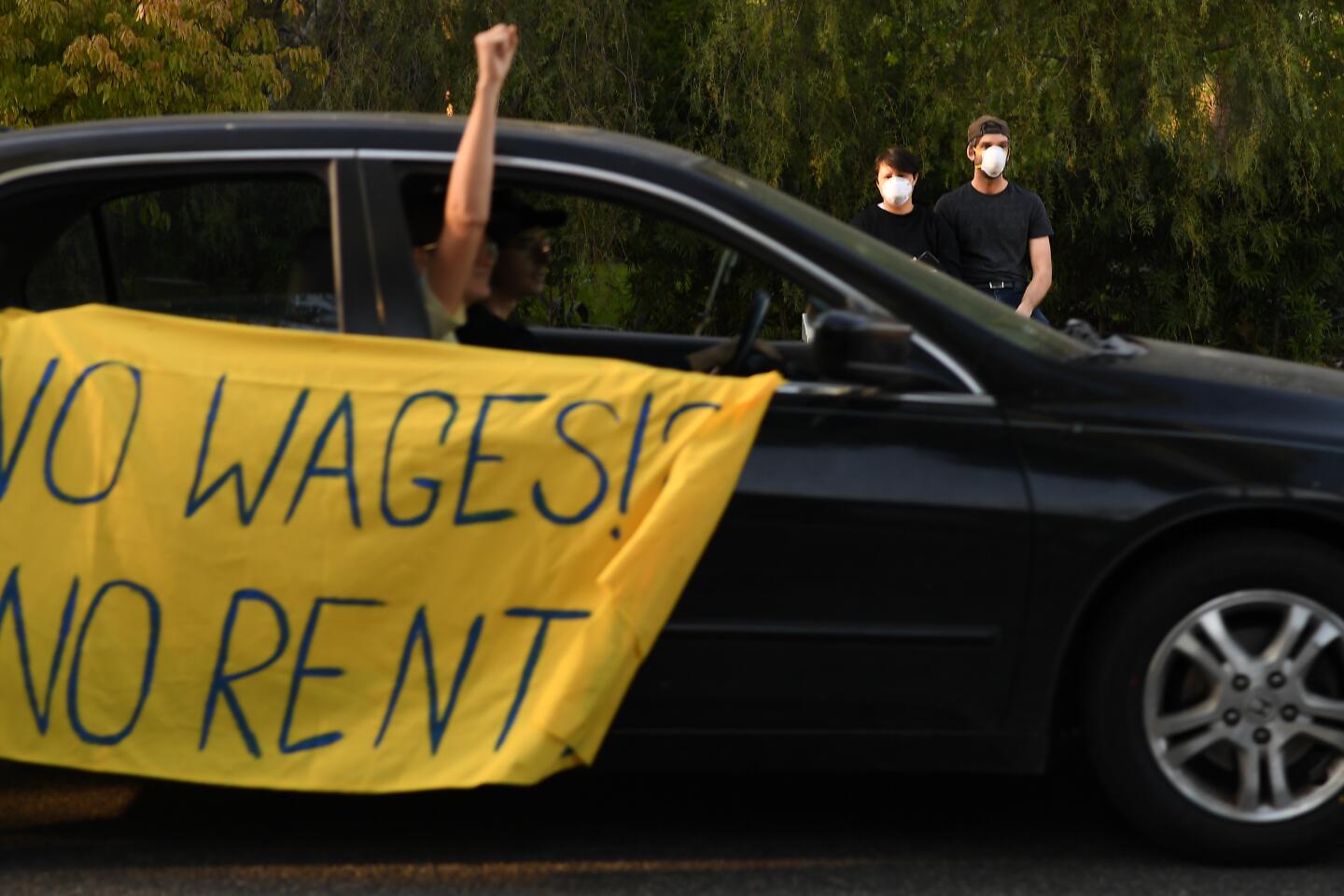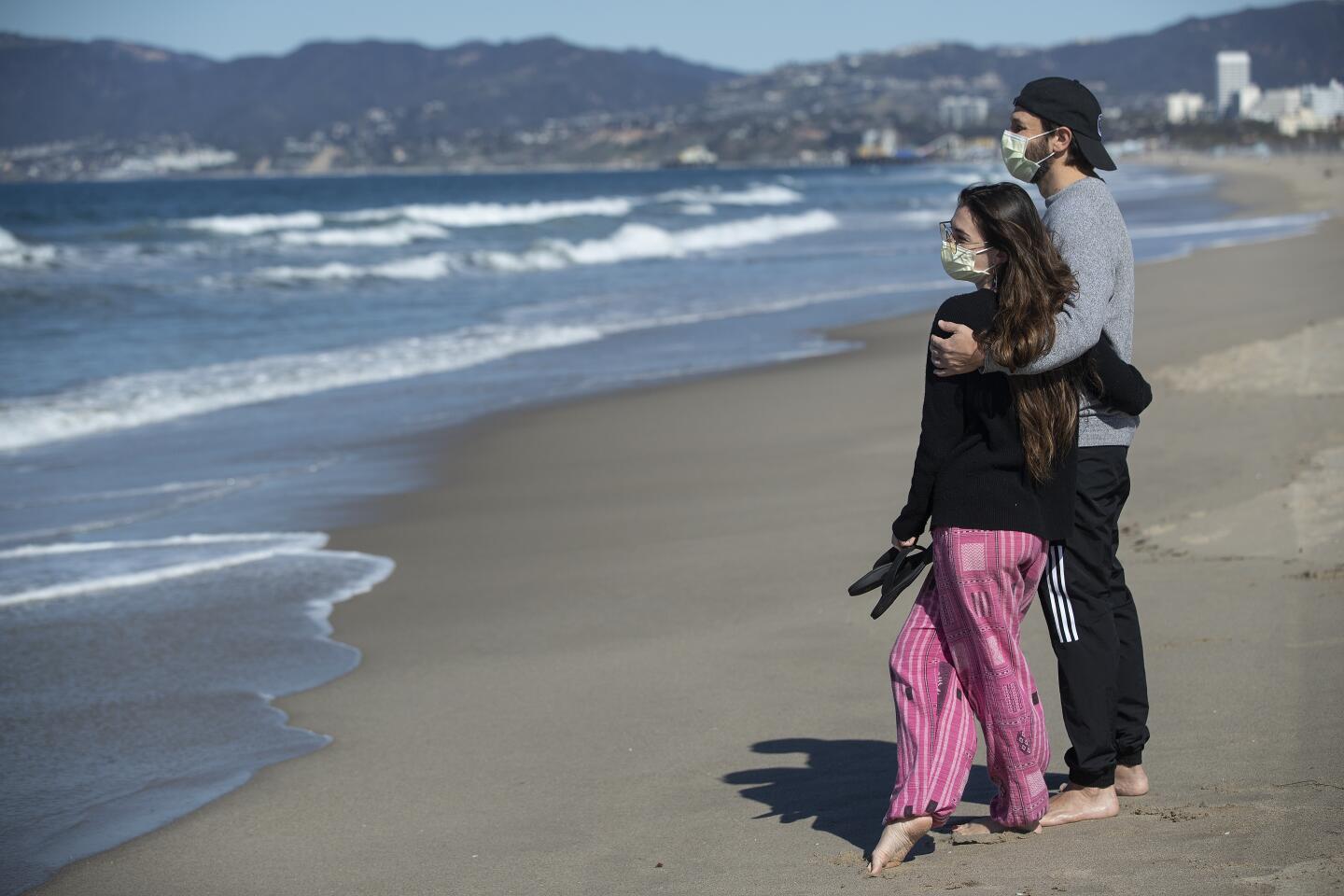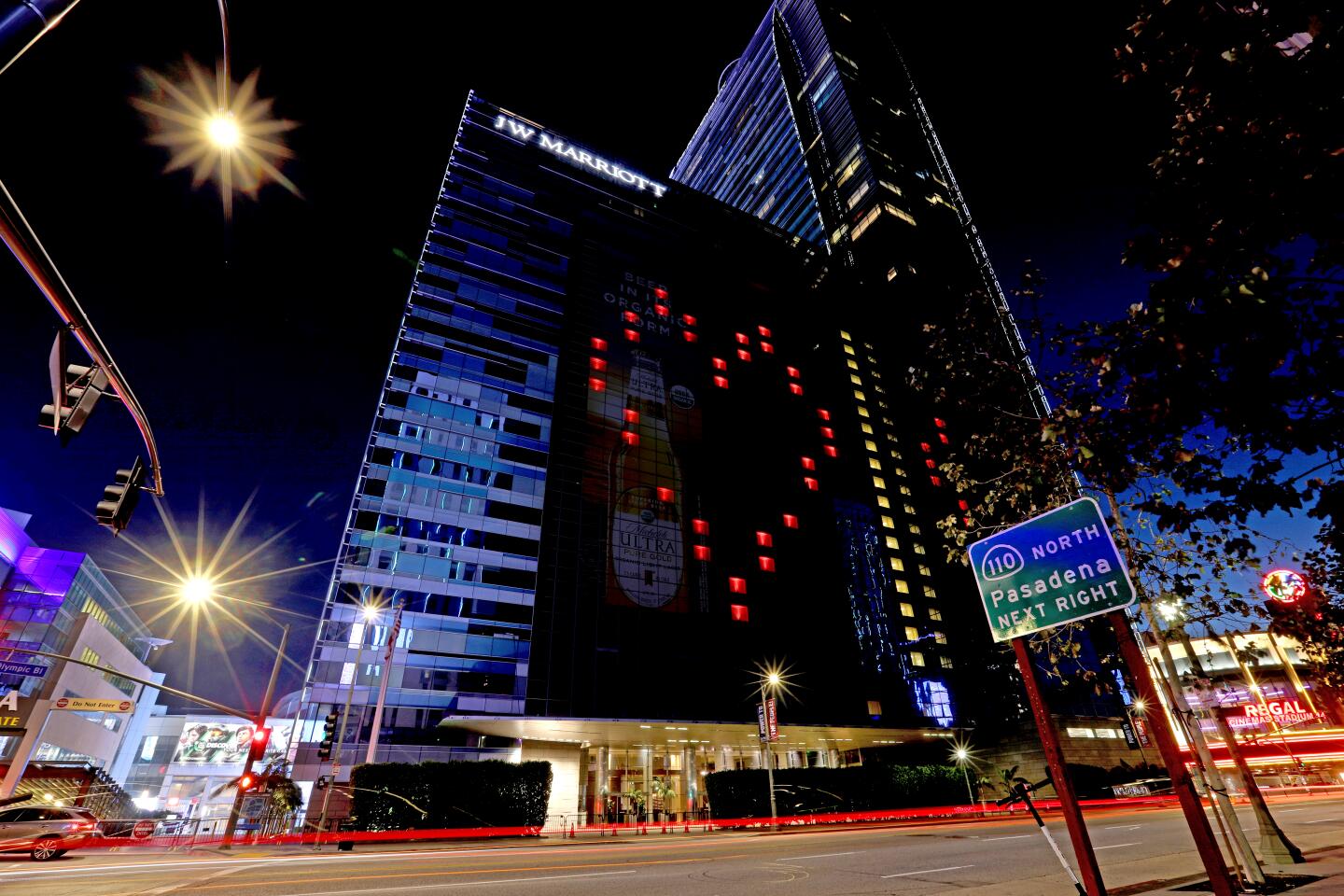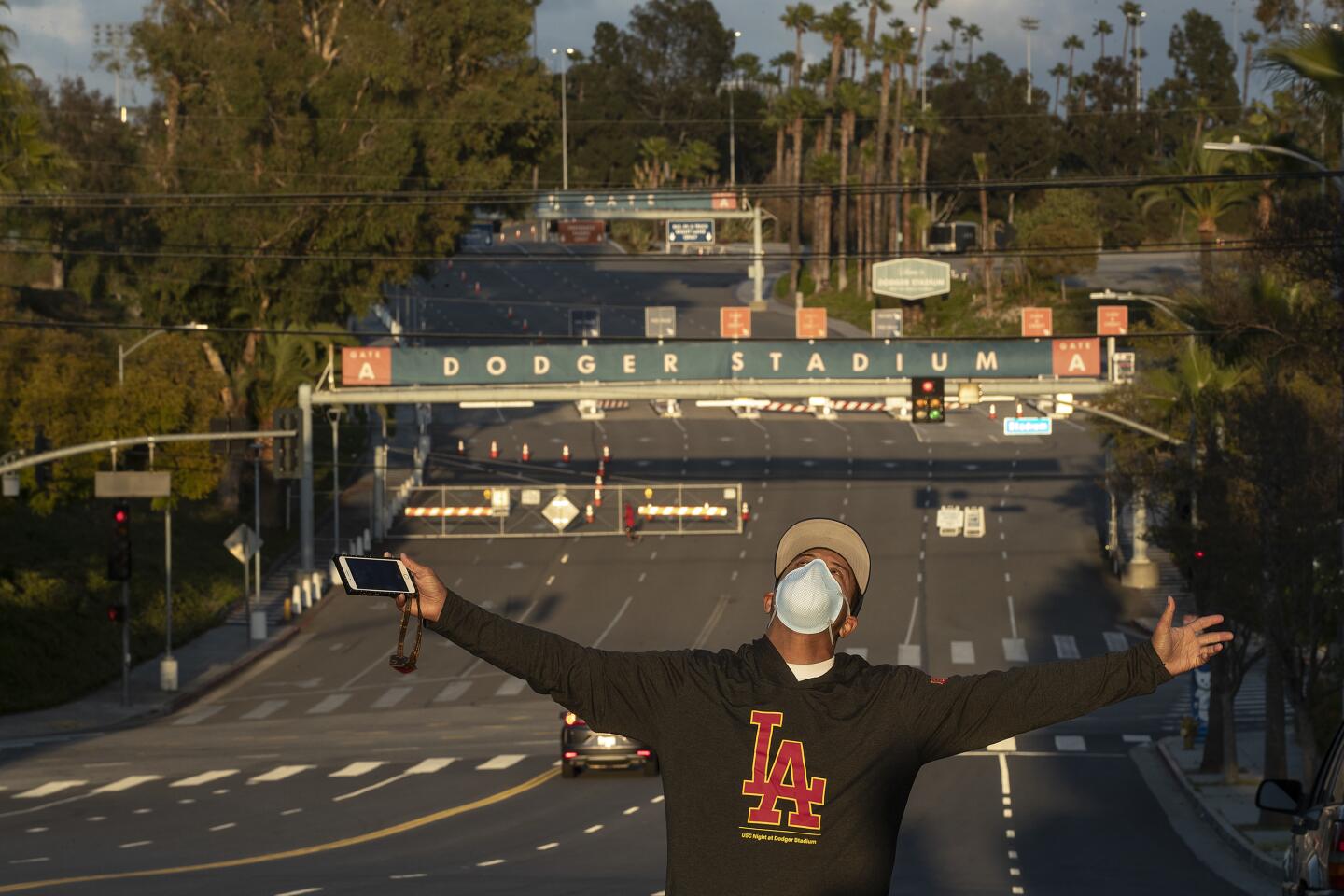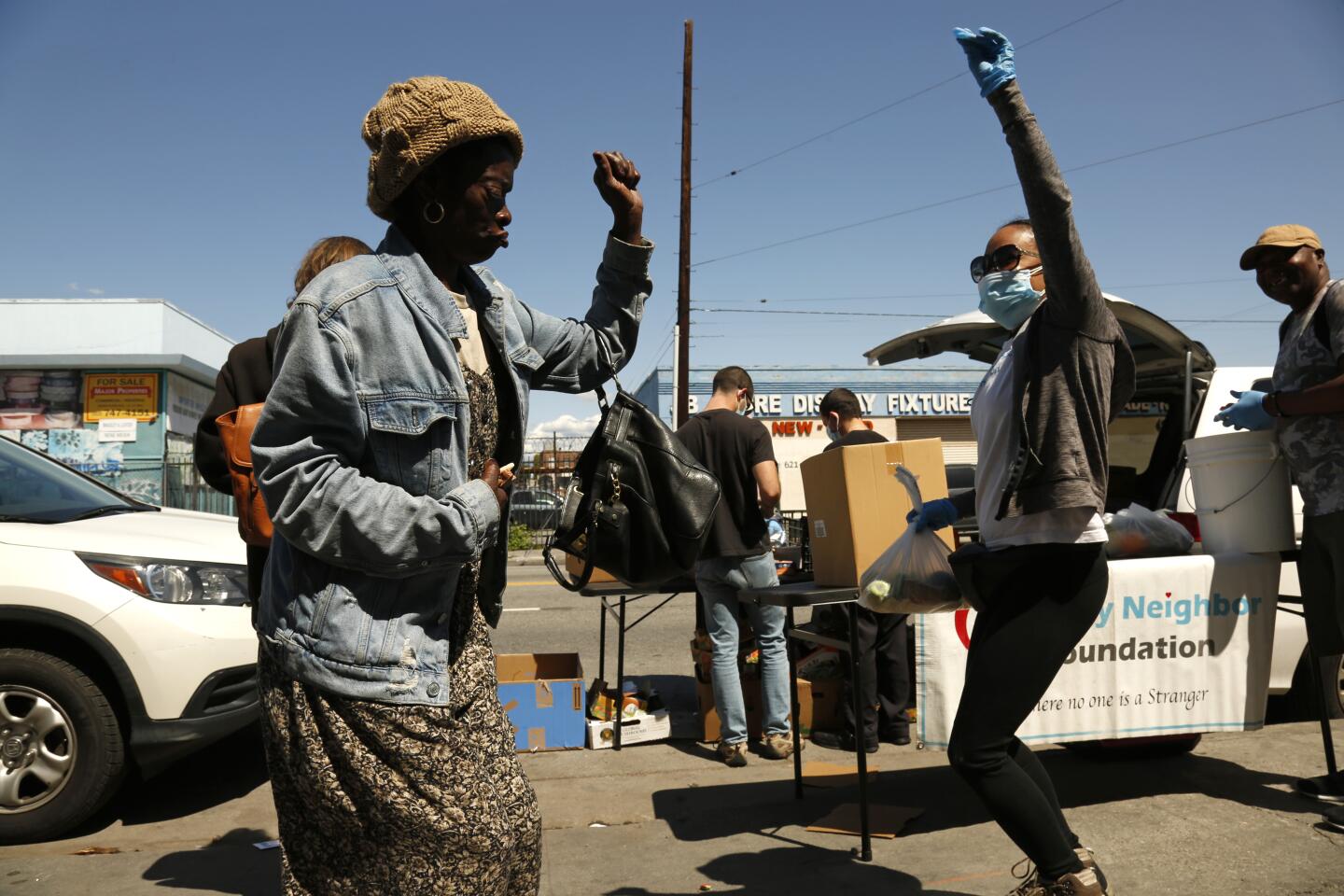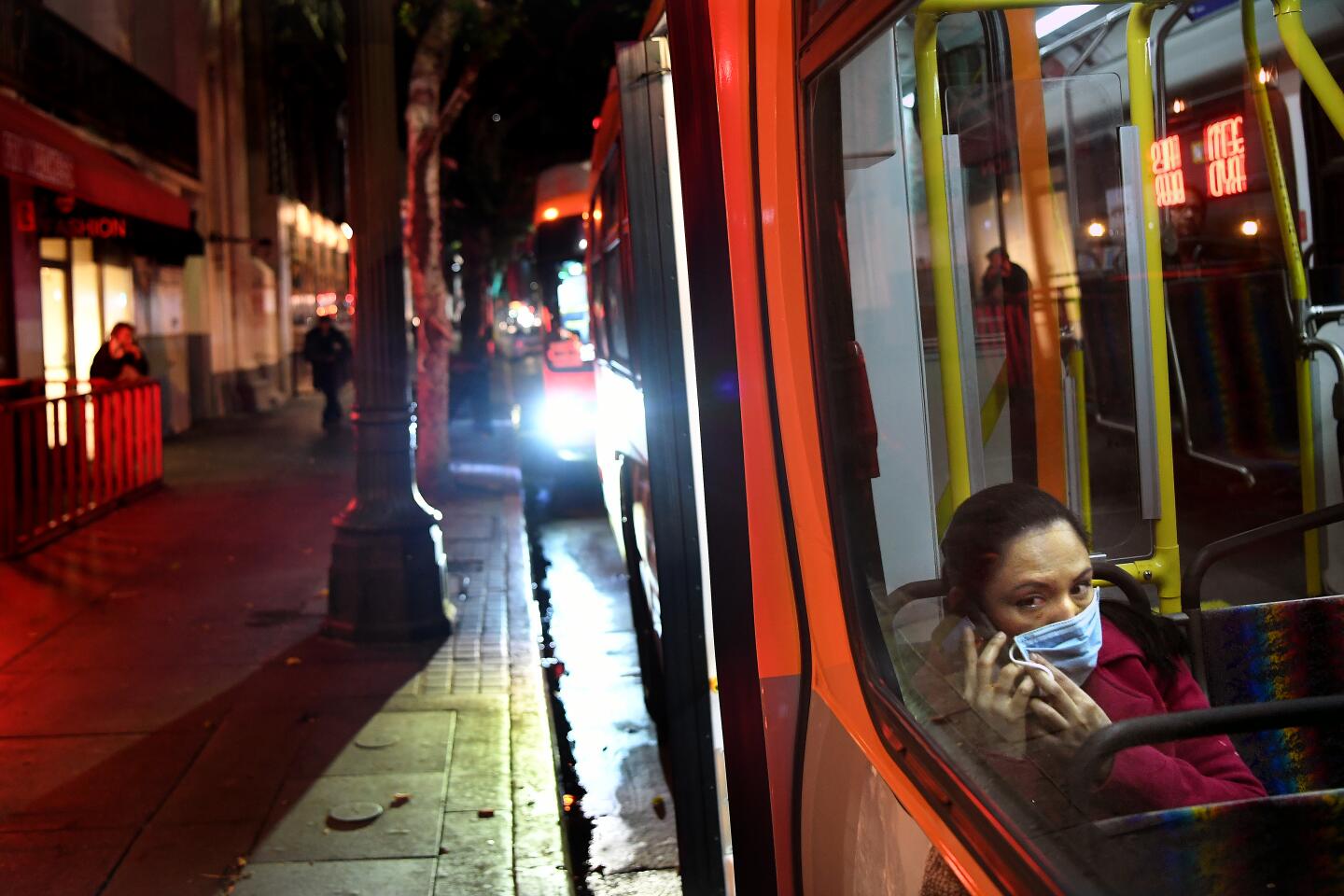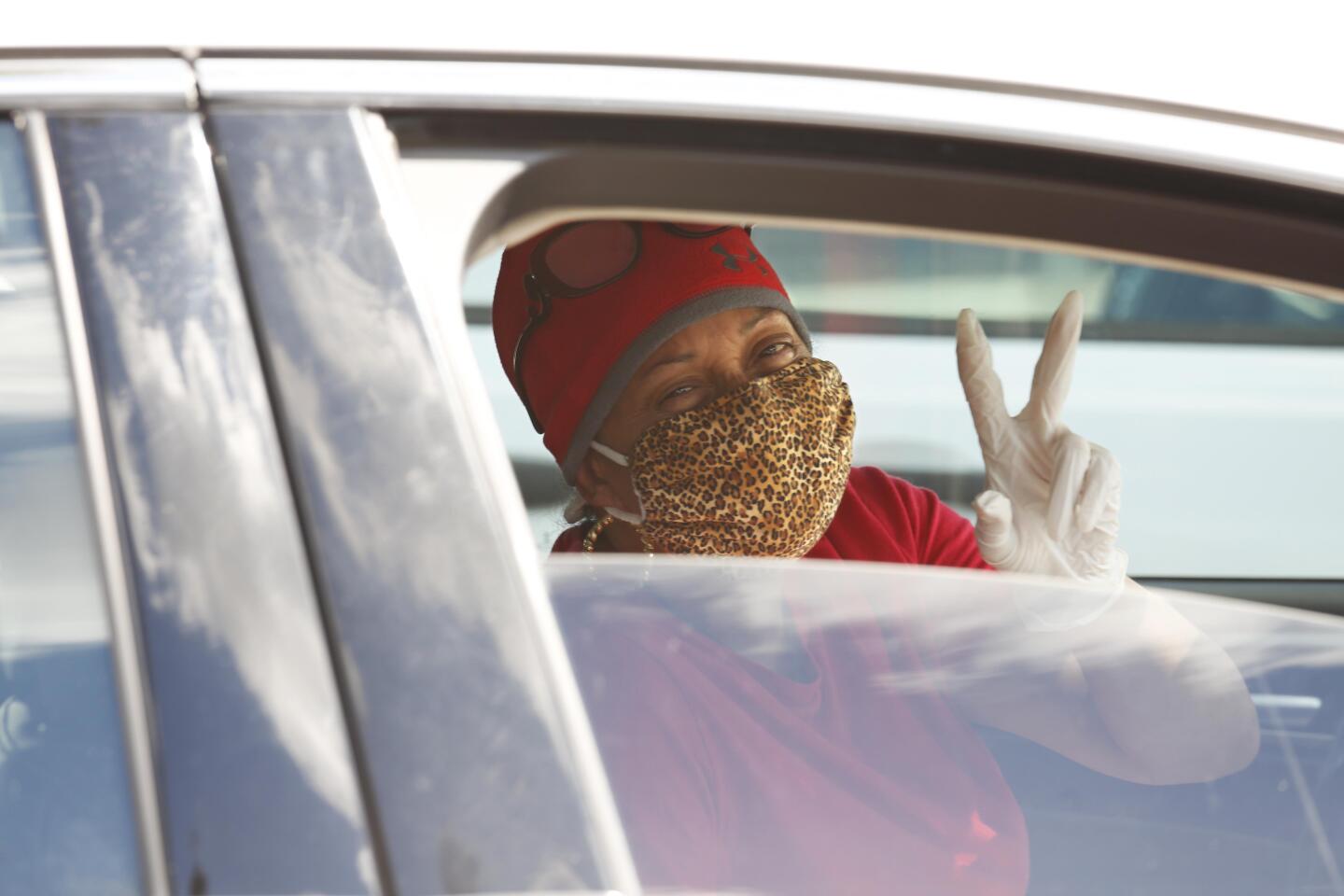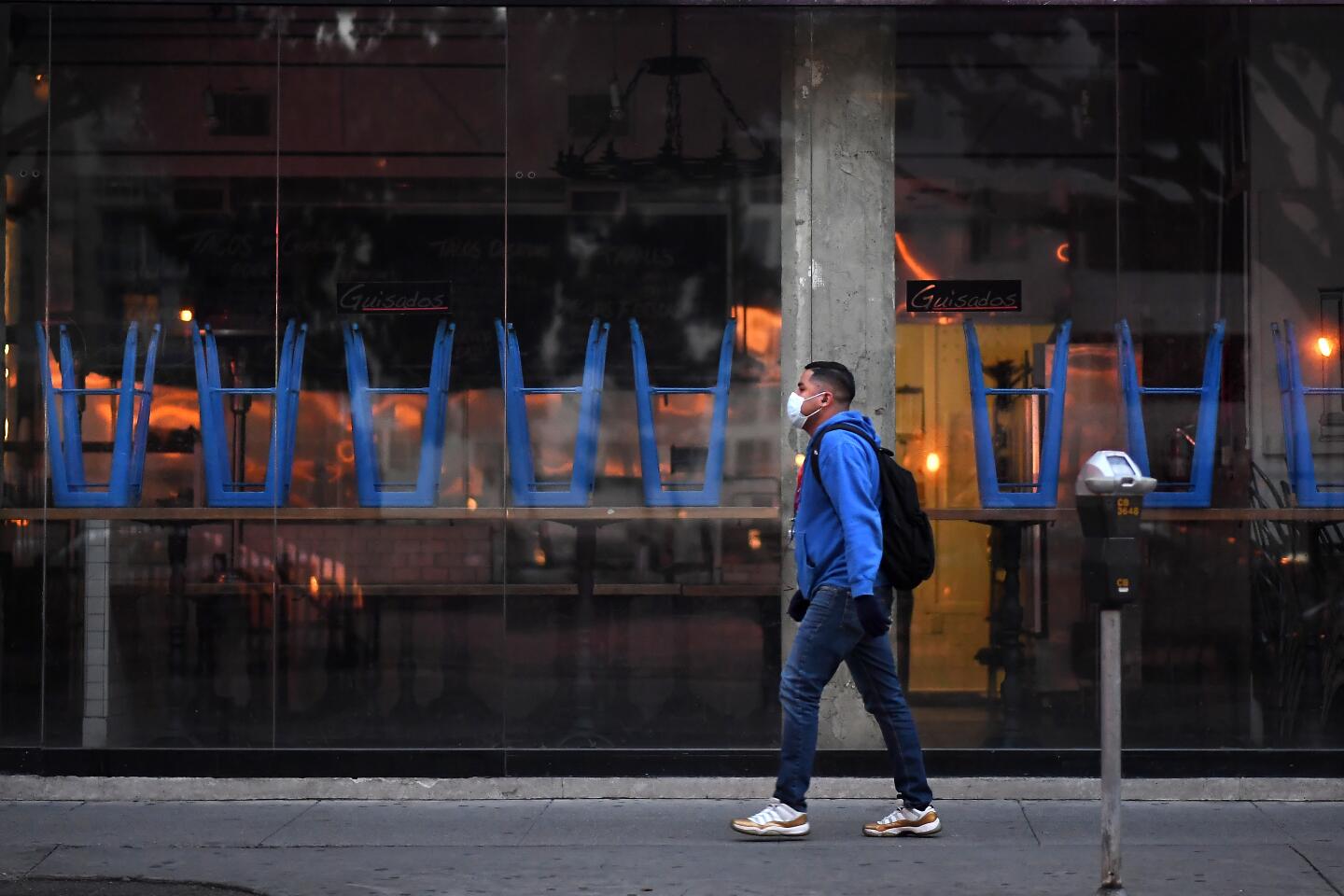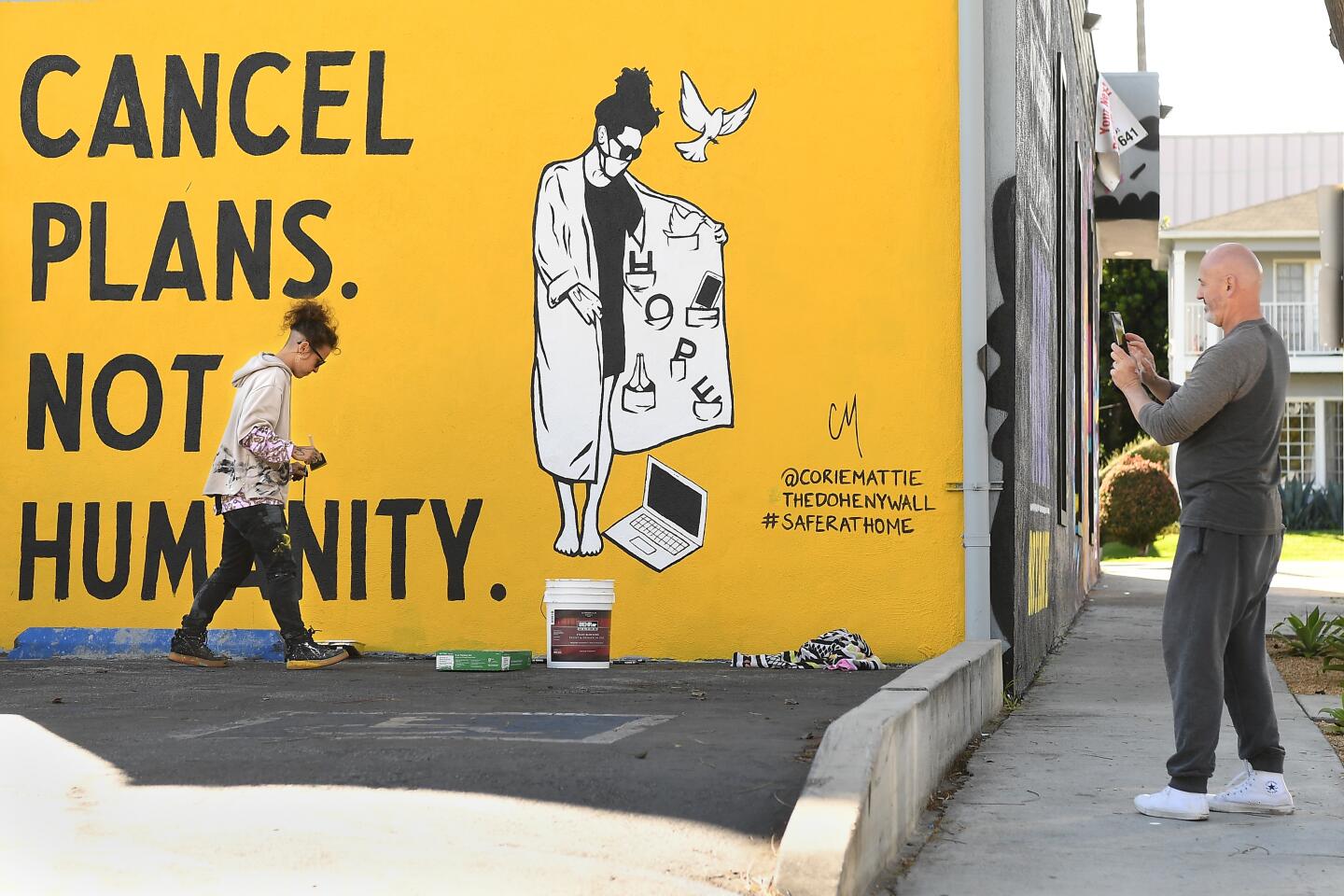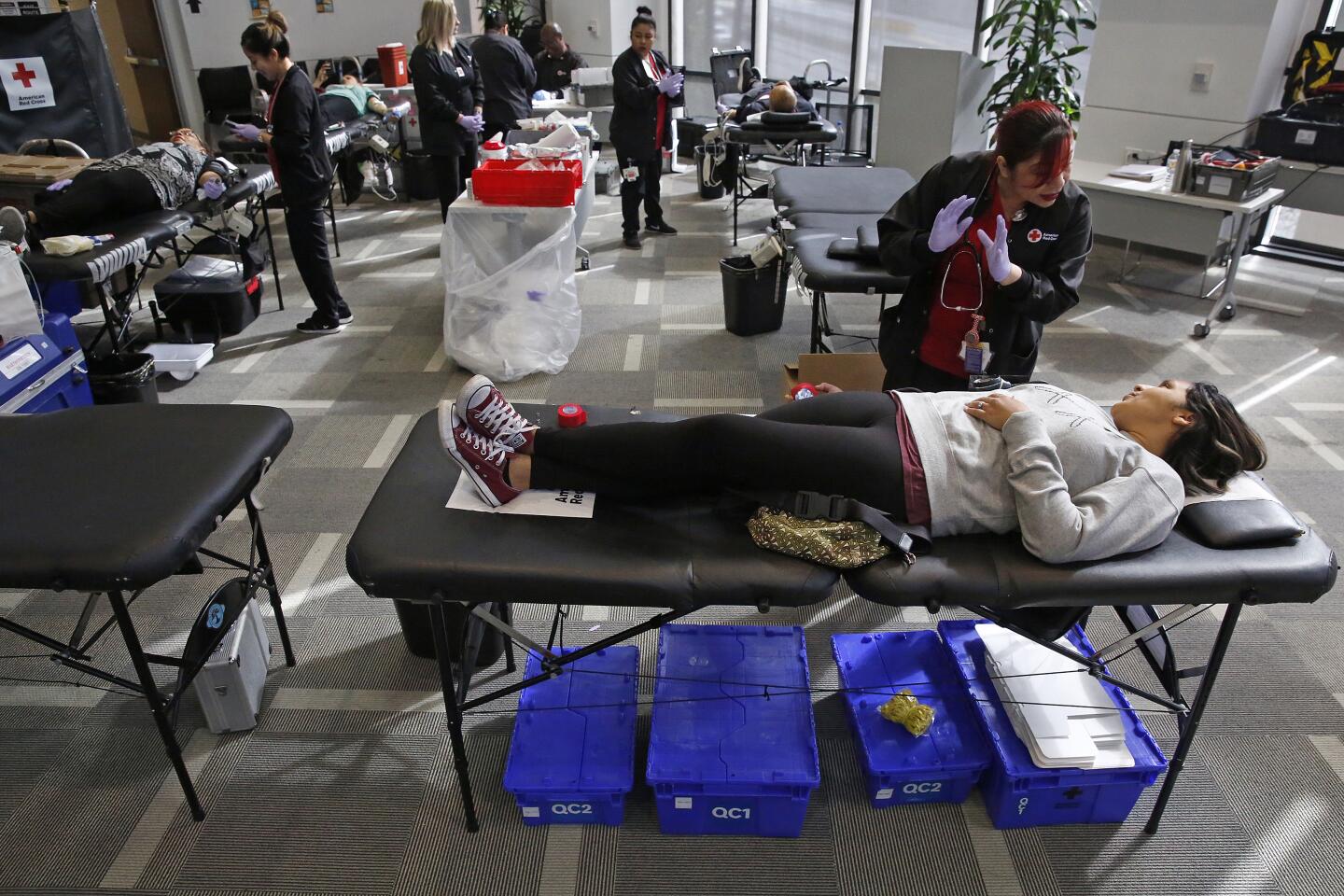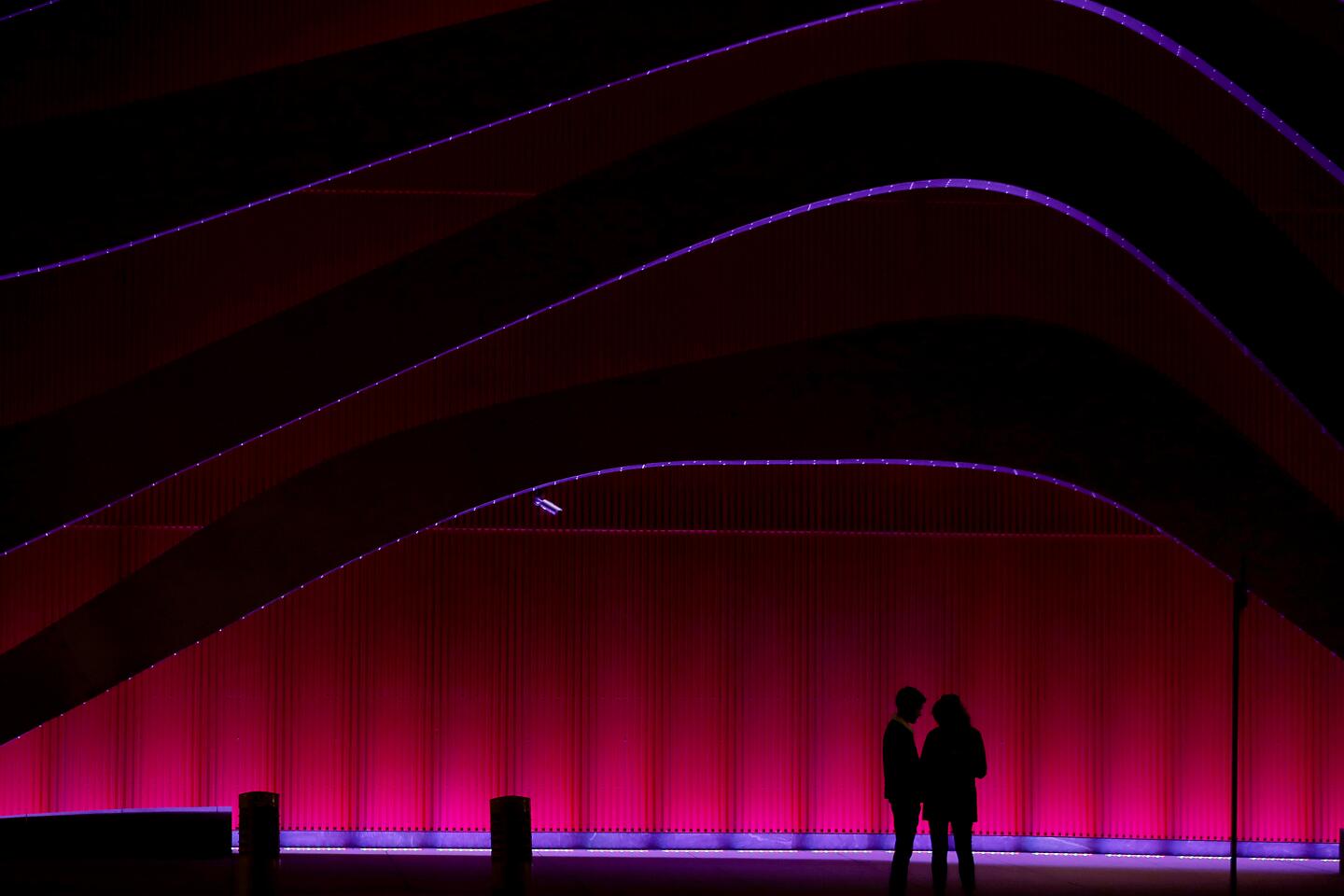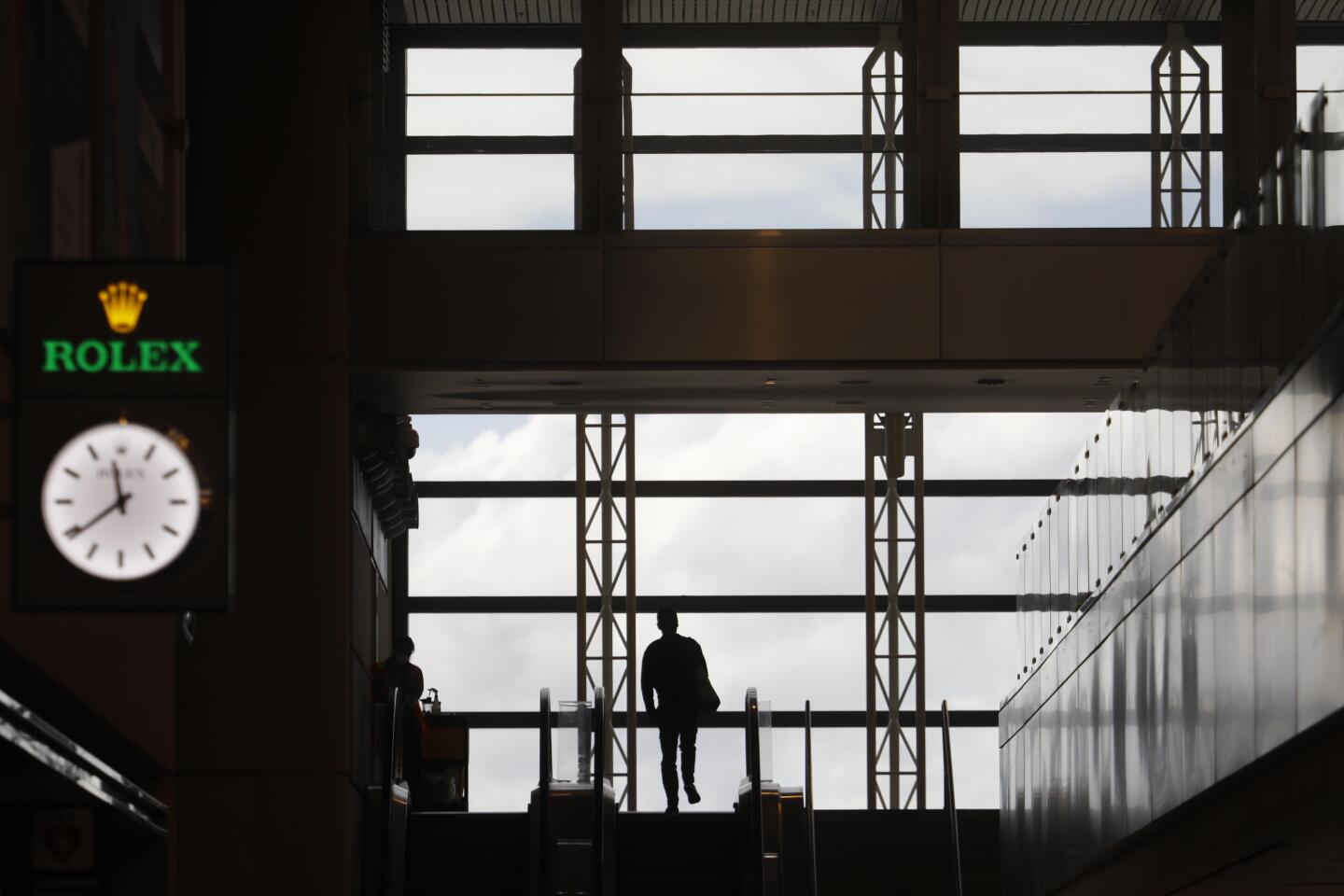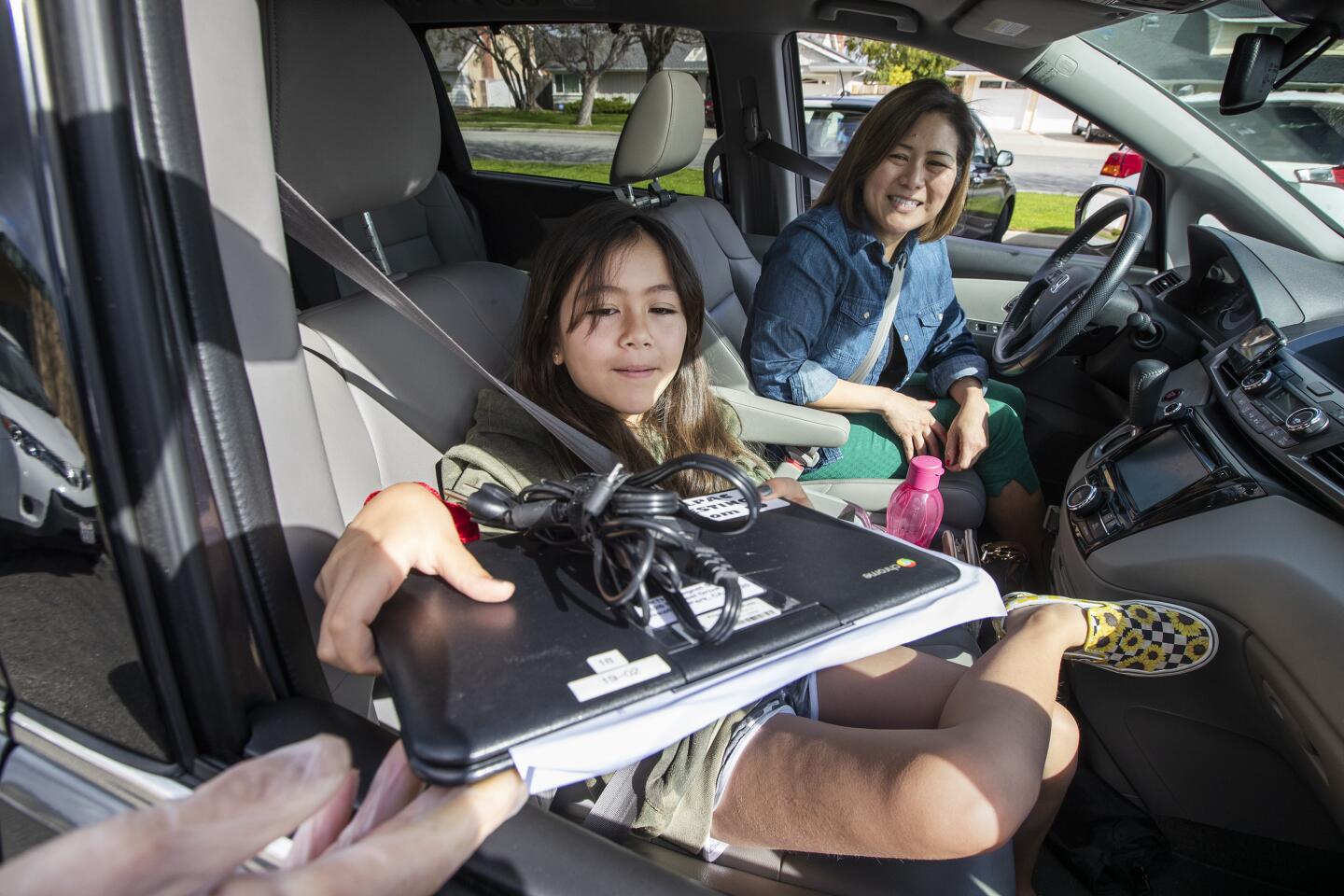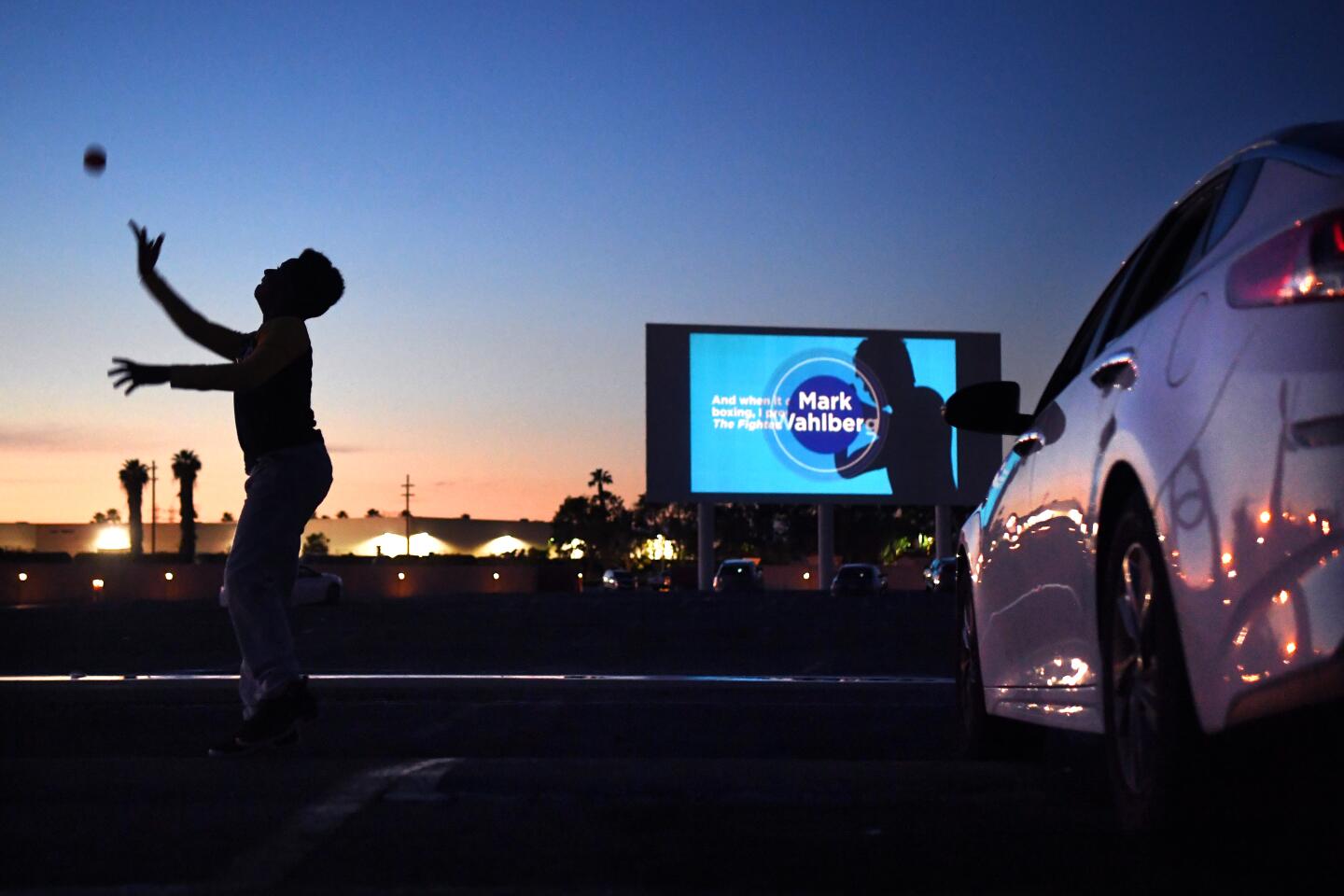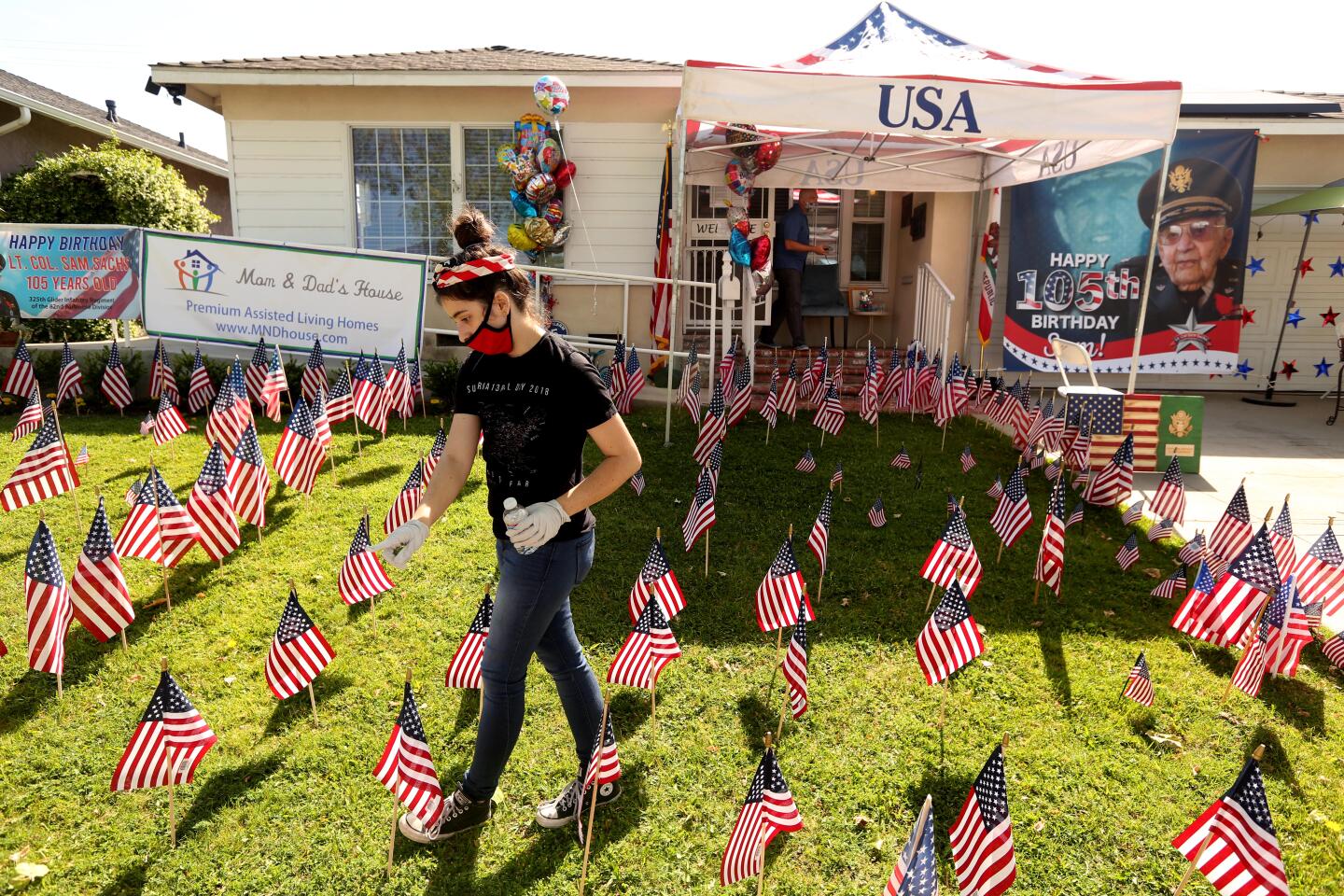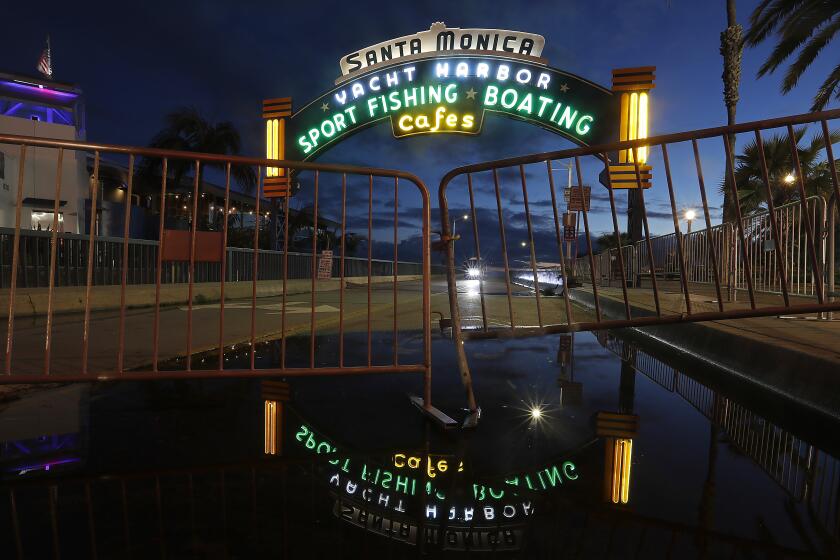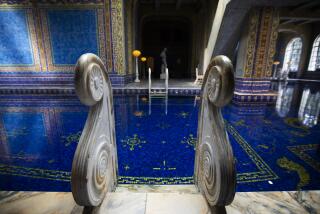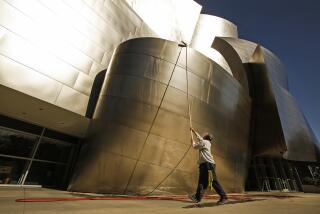As of April 17: What’s open and closed among beaches, parks and trails in Southern California
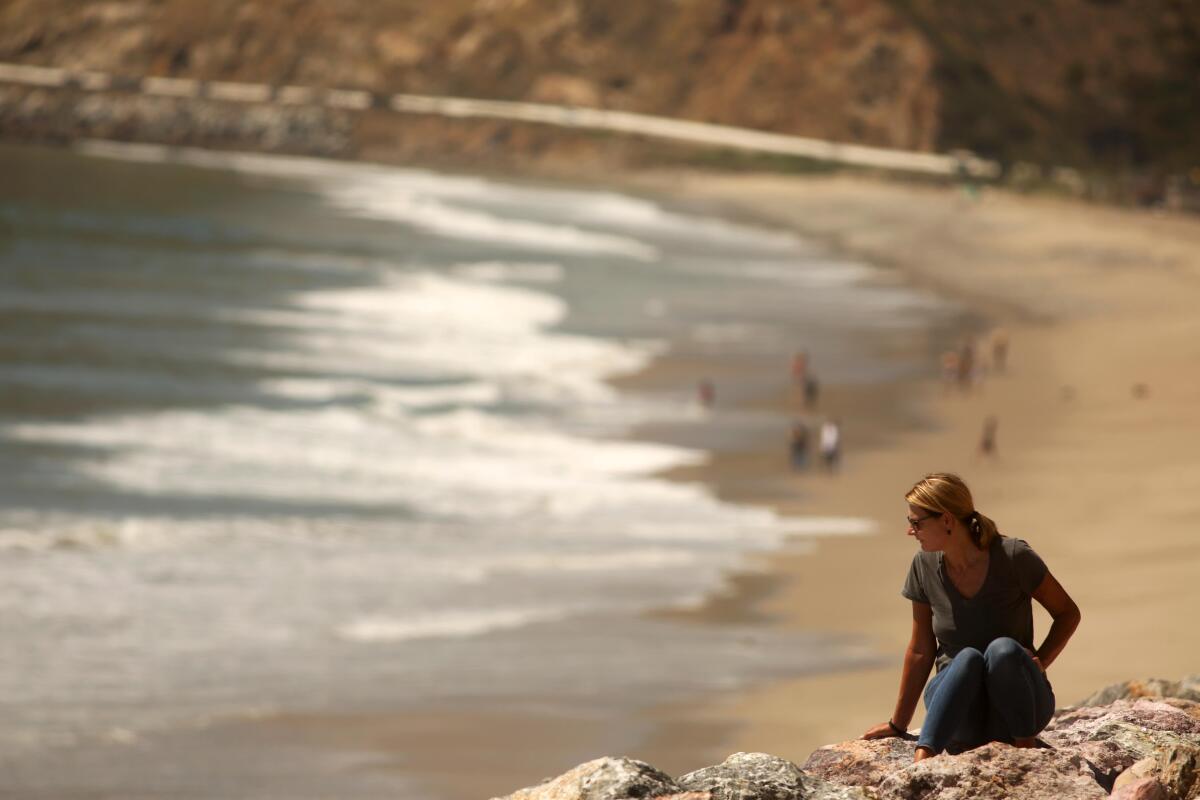
- Share via
Southern Californians can still walk, hike and bike outdoors without violating Gov. Gavin Newsom’s stay-at-home order. But public officials urge residents to stay home as much as possible and wear masks when they go out.
Local, state and federal agencies continue to enforce closures or severely limited access at hundreds of beaches, parks, trails and forests, all phased in since early March. Yet as the measures move into their second month of enforcement, differences in government policies and enforcement have become more apparent.
Ventura County on Saturday allowed the reopening of golf courses and bike shops among various modifications to the its Stay Well At Home order. That order, which continues to close campgrounds, gyms, swimming pools and many other facilities, is effective through May 15.
The Ventura County city of Port Hueneme, experimenting with a “soft reopening,” has reopened its beach (and a parking lot) to walking, running, biking and solo surfing and paddle-boarding. Its pier, restrooms, playground and street parking remain closed, and the city says it is “highly discouraging” people from sunbathing, sitting or bringing “any item that promotes a stationary presence.”
Meanwhile, Los Angeles County’s tennis courts, beaches, piers, beach bike paths, beach access points, public trails and trailheads are closed through May 15 under the county’s current Safer at Home order. That order covers beaches in every coastal city and unincorporated area of the county.
The National Park Service has closed Death Valley and Joshua Tree national parks. Meanwhile its federal cousin the Bureau of Land Management has left open much of Imperial Sand Dunes Recreation Area, where dune buggies and dirt bikes continue to roar and leap. A BLM spokeswoman estimated 9,000 visitors there during the last week.
These are some of the unusual new scenes across the Southland during the coronavirus outbreak.
On Wednesday, Los Angeles Mayor Eric Garcetti told CNN that “it’s difficult to imagine us getting together in the thousands any time soon” and said it was unlikely the city would allow any large events in 2020.
Also Wednesday, the state Fish and Game Commission took a key step toward postponing trout-fishing season. In giving the state Fish and Wildlife Department director authority to suspend, delay or restrict recreational fishing in specific areas until May 31, the group made it all but certain that the scheduled April 25 trout season opener (“Fishmas” in angler slang) will not take place in the lakes and rivers of the Eastern Sierra.
Here’s an update on what’s happening where. If you do go outside for a walk, remember these tips for keeping safe. Local and state officials stress the need to take greater care in maintaining a social distance of at least six feet from others.
Life right now is largely online. Here’s how to make the most of it.
Los Angeles city parks, beaches and markets
City Recreation and Parks officials say most most park areas “remain open for walking and running.” But they are enforcing a broad range of restrictions. Among them: All public hiking trails and trailheads in the city of Los Angeles have been closed since March 27.
Also closed are all public beaches, public beach parking lots, beach bathrooms, piers, beach access points and the Venice Boardwalk and Ocean Front Walk (with limited access to essential businesses).
All recreation centers, aquatic facilities, golf courses, skate parks, tennis courts, playgrounds, baseball fields, soccer fields and basketball courts are also closed, as are other “indoor and outdoor sport amenities.”
In Griffith Park, authorities have closed all facilities and trails, including the observatory, Travel Town, train rides, the pony rides, the merry-go-round and some roads.
Elsewhere, the Cabrillo Marine Aquarium in San Pedro remains closed, as is the Sherman Oaks Castle, the Expo Center in Exposition Park; and the Silver Lake Meadow, a grassy space next to the Silver Lake Reservoir.
Since April 11, authorities eager to boost social distancing have ordered that all walkers and joggers travel counterclockwise on the 2.2-mile loop trail around the Silver Lake and Ivanhoe reservoirs.
In early April, Garcetti suspended operations of the city of L.A.’s farmers markets, set new standards for social distancing, then approved the reopening of 24 markets, including the Sunday Hollywood Farmers Market, with more stringent practices.
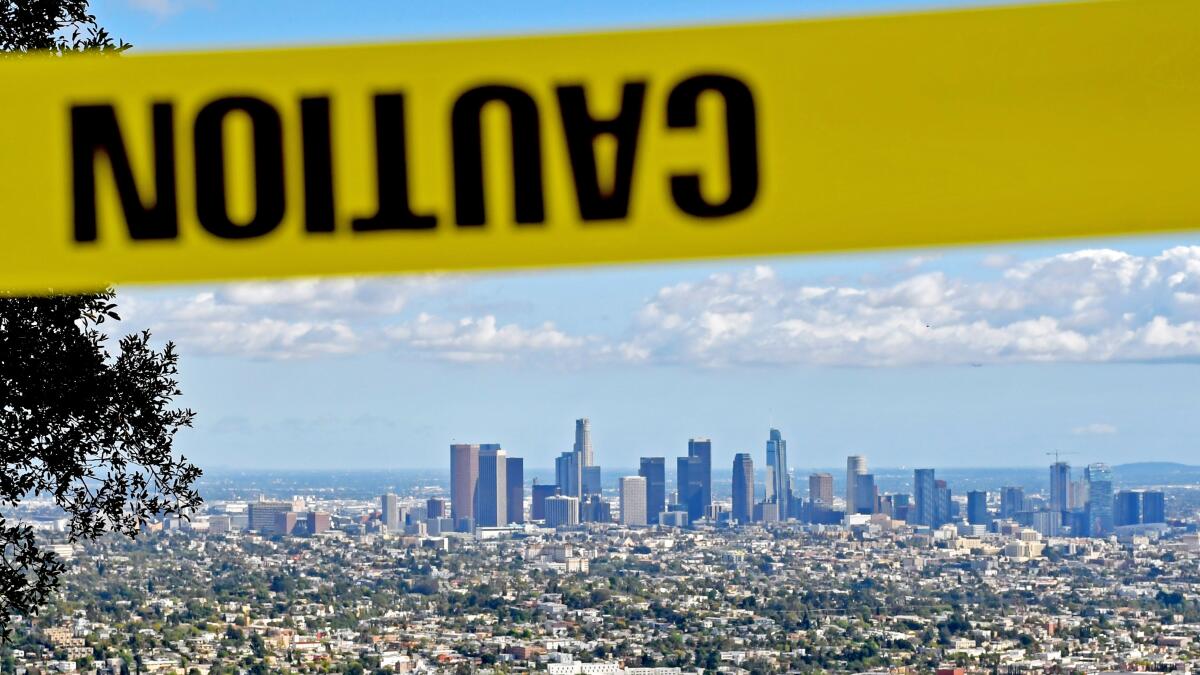
Santa Monica beaches
The city of Santa Monica‘s beaches, beach bike path and Ocean Front Walk closed March 27 as part of the countywide order to shut down beaches. The city’s Palisades Park, which overlooks the beach and pier, is also closed.
Los Angeles County trails and beaches
Since March 27, L.A. County officials have enforced the closure of trails, trailheads, beaches and other public lands. All of the county’s park play and sports amenities, including golf courses, are also closed.
Parks officials noted on their website that “you can still enjoy time outdoors at your local park for passive use, such as walking, jogging, or leisure time outdoors for individuals or families. Social distancing is still required, and group gatherings are prohibited by the health order.”
Since March 23, the county has forbidden use of its multiuse trail system, a network of more than 220 miles that includes the popular Eaton Canyon Trail; all interior trails at Vasquez Rocks; all interior trails at Placerita Canyon; the Loop Trail, Devil’s Chair and South Fork Trail at Devil’s Punchbowl; the San Dimas Nature Trail; the Schabarum-Skyline Trail in the San Gabriel mountains; and dozens of other popular routes.
Los Angeles County beach cities and Catalina Island
In Hermosa Beach, the pier, Strand and beach itself are closed as part of the countywide beach closure.
Even as people are told to stay home, many in Southern California seek out public spaces — beaches, hiking trails, sidewalks, parks — for relief.
The same is true in Redondo Beach, where city officials also closed the Esplanade area; Veterans Park and nearby parking areas; all public walkways, stairways, ramps and paths to the beach; and a coastal bluff trail between Knob Hill Avenue and George Freeth Way.
Meanwhile, Catalina Island “is closed to visitors,” the Catalina Chamber of Commerce website said Friday afternoon.
The Catalina Express, which normally runs boats to the island’s Avalon and Two Harbors landings from Long Beach, San Pedro and Dana Point, has cut its service back to two round-trips a day between Long Beach and Avalon. At the Catalina Flyer, which normally offers one departure daily from Newport Beach to Avalon, a phone recording warned that the boat has suspended service until further notice.
The Catalina Island Conservancy has closed its visitor facilities, services and trails.
State parks in L.A. County
On March 18, state parks officials closed all state campgrounds. On March 29, they tightened restrictions further, closing vehicle access to the entire state park system — 280 parks, including off-road vehicle areas.
Since then, the state has fully closed dozens of parks, banning pedestrians as well as vehicles. Among them: The Antelope Valley California Poppy Reserve; more than a dozen state parks and beaches in L.A. County; San Clemente State Beach in Orange County; seven state beaches in San Diego County; and four state beaches and parks in Ventura County.
At Kenneth Hahn State Recreation Area in the Baldwin Hills area of L.A., officials said in a statement that the park is closed to vehicular access, but “remains open for locals who wish to walk, hike and bike (in parks with bike trails) in the park, provided they practice social/physical distancing of 6 feet or more. This is not the time for a road trip to a destination park or beach.”
San Gabriel Valley
In the first week of April, Pasadena city officials closed the Rose Bowl Loop, a popular 3.1-mile-long walking path around the famed stadium.
The Huntington Library, Art Museum, and Botanical Gardens is closed through at least Sunday.
The Descanso Gardens in La Canada Flintridge is closed until further notice.
Santa Monica Mountains
The National Park Service has imposed weekend closures on all Santa Monica Mountains National Recreation Area trails, trailheads, restrooms, overlooks and pullouts in Ventura County. Authorities said those areas will remain open on weekdays, when crowds are thinner.
Those weekend closures begin at 2 p.m. Fridays and reopen at 6 a.m. Mondays “until further notice,” an NPS release said.
That policy covers Rancho Sierra Vista (including the Wendy Trailhead); Cheeseboro Canyon Trailhead; the Deer Creek area; and all trails within Circle X, which includes Sandstone Creek, Mishe Mokwa, the Grotto Trail, the trails and overlooks along Yerba Buena Road and the Backbone Trail along the spine of the Santa Monicas.
As part of the earlier L.A. County-wide closure of hiking trails, the Santa Monica Mountains National Recreation Area had already shut down all of its trails and restrooms in L.A. County.
In all, the recreation area includes about 150,000 acres of Los Angeles and Ventura counties.
Also, the Mountains Recreation and Conservation Authority on March 23 closed all of its parklands, trail and facilities — close to 75,000 acres of parkland, including all parks owned by the Santa Monica Mountains Conservancy.
The authority’s busiest parks, now closed, include Wilacre Park in Studio City; Temescal Gateway Park in Pacific Palisades; Franklin Canyon Park off Mulholland Drive, Beverly Hills; Ed Davis Park in Towsley Canyon, the Santa Clarita Valley; all the overlooks on Mulholland Drive; Upper Las Virgenes Canyon Open Space Preserve at the west end of Victory Boulevard; and Escondido Canyon Park in Malibu.
Orange County beaches and parks
Orange County on March 25 closed parking lots at all county beaches, regional and wilderness parks; parking spaces at all trailheads; parking lots at Irvine Lake; parking along Black Star Canyon Road; pedestrian access points at Thousand Steps, Table Rock, West, Camel Point and Treasure Island beaches; restrooms; playgrounds; exercise equipment; shelters and trailheads. Passive walk-through pedestrian, cycling and equestrian activity is permitted.
Orange County also banned vehicular traffic to Carbon Canyon, Clark, Craig, Irvine, Laguna Niguel, Mason, Mile Square, Tri-City and Yorba regional parks. Pedestrians, bicyclists and equestrians were permitted.
Among individual Orange County cities:
Seal Beach has closed all of its park amenities, including restrooms, playgrounds, hiking trails, athletic fields, tennis courts, volleyball courts, basketball courts, handball courts, dog park, picnic areas and community centers. But green space within its parks remains accessible, with social distancing required.
Huntington Beach’s pier and beach parking lots have been closed since at least March 25, but the beach itself remains open.
Newport Beach on March 25 closed its beachfront parking lots and piers, and later added its Oceanfront Boardwalk on the Balboa Peninsula and the Balboa Island Bayfront Walkway to the forbidden list. On Friday, the city banned surfing at the Wedge between 10 a.m and 5 p.m., citing large numbers of surfers attracted by growing swells.
Laguna Beach has closed all city beaches, all basketball, volleyball and tennis courts; all playgrounds; its community pool; parking lots at Aliso Beach; and three beach-adjacent city parks: Main Beach city park, Heisler city park, and Treasure Island city park.
In Dana Point, city, county and state beach and harbor public parking lots are closed, as is Dana Cove Beach, as are many coast-adjacent streets. (Others are limited to local traffic only.) Noting that police recently wrote 158 parking citations in one weekend, city officials said in a statement that “if you have to use your car to get here, there is nowhere to park.”
San Clemente in late March closed its city-owned beach parking lots and municipal pier and many other facilities. On April 1 it closed tennis courts, ball fields and picnic areas, as well, but the city’s trails remained open.
Throughout Los Angeles County
The “Safer at Home” order from Los Angeles County Public Health officials, issued March 21 and updated April 10, prohibits all public and private group events and gatherings through May 15. It also says that individuals and families are not prohibited from “hiking, walking, biking or shopping at [e]ssential [b]usinesses,” so long as they keep their distance from others.
The order also notes that if local entities (like municipal governments) choose to impose stricter limits, the county order does not supersede them.
Los Angeles County has closed all indoor and outdoor playgrounds, along with indoor shopping centers and all swap meets and flea markets.
San Diego County parks and beaches
The city of San Diego closed all of its beaches, parks and trails on March 24.
The Port of San Diego, which controls 34 miles of the county’s coastline, including many parks, on March 24 closed all of its parks, beaches, parking lots, piers and boat launches.
The cities of Carlsbad, Encinitas, Imperial Beach, Del Mar, Solana Beach, Oceanside and Coronado have closed their beaches.
Under a San Diego County health order issue updated April 10 and effective through April 30, most of that county’s parks and preserves remained open for pedestrians, cyclists and equestrians, but their parking lots and many facilities and amenities are closed. Also forbidden under the order: surfing, swimming and recreational boating on public waterways and beaches.
National forests in Southern California
The U.S. Forest Service on March 26 closed campgrounds, picnic areas, bathrooms and other developed recreation sites in its California forests through April 30 and left Southern California’s four forests — Angeles, Cleveland, Los Padres and San Bernardino — to make their own decisions on trail access and parking.
That set the stage for the Angeles National Forest decision April 3 to close 23 well-used San Gabriel mountain trails, four popular trailheads and 19 roads and keep them closed through at least April 30.
This map shows the affected areas. The closures — about 81.5 miles of trails and 54.5 miles of roads — include the Millard Canyon above Altadena, San Antonio Falls, Icehouse Canyon and North Devil’s Backbone trailheads.
The forest order shuts routes to Echo Mountain and Mt. Lowe, such as the Sam Merrill Trail, above Altadena, as well as others leading to Mt. Wilson, San Gabriel Peak, the Rim Trail and other routes in the San Gabriel Mountains.
In the San Bernardino National Forest, whose 680,000 acres include four mountain ranges in San Bernardino and Riverside counties, a spokesman said parking areas at trailheads remain open. Hikers should practice social distancing, sticking to wide fire roads instead of single-track trails that are too narrow, the spokesman said.
In Los Padres National Forest, which includes roughly 1.95 million acres reaching north from Ventura County into Central California, spokesman Andrew Madsen said trailhead parking and trails remain open, as do dispersed camp sites in the backcountry.
In Cleveland National Forest, which reaches into San Diego, Riverside and Orange counties, the list of sites closed through April 30 includes all trails and picnic areas where an Adventure Pass is normally required.
In the forest’s Trabuco ranger district, a spokesperson said closures include: El Cariso north/south picnic area; Hot Springs trailhead; San Juan loop trailhead; Tenaja trailhead; Trabuco creek picnic area; Wildomar staging area; Maple Springs day use area.
In the forest’s Descanso Ranger District, closures include Agua Dulce; Bear Valley OHV (off-highway vehicle) area; and Corral Canyon.
In the forest’s Palomar Ranger District, closures include: Crestline; Henshaw scenic vista; Inaja Memorial; Kica Mik Overlook; Palomar Mountain Interpretive Station; San Luis Rey Picnic Area; Fry Creek Trailhead; Observatory Trailhead; and Barker Valley Trailhead. The popular Cedar Creek Falls and Three Sisters Falls trails have been closed since March 21.
National parks in California
The NPS closed Yosemite National Park March 20; Joshua Tree National Park on March 31; and Death Valley National Park (except for State Route 190 and Daylight Pass) on April 4.
Throughout California
Newsom’s order said: “Everyone in California is required to stay home except to get food, care for a relative or friend, get necessary healthcare, or go to an essential job.”
But the governor also said: “We’re going to keep the grocery stores open. ... We’re going to make sure that you’re getting critical medical supplies. You can still take your kids outside, practicing common sense and social distancing. You can still walk your dog.”
More to Read
Sign up for The Wild
We’ll help you find the best places to hike, bike and run, as well as the perfect silent spots for meditation and yoga.
You may occasionally receive promotional content from the Los Angeles Times.

